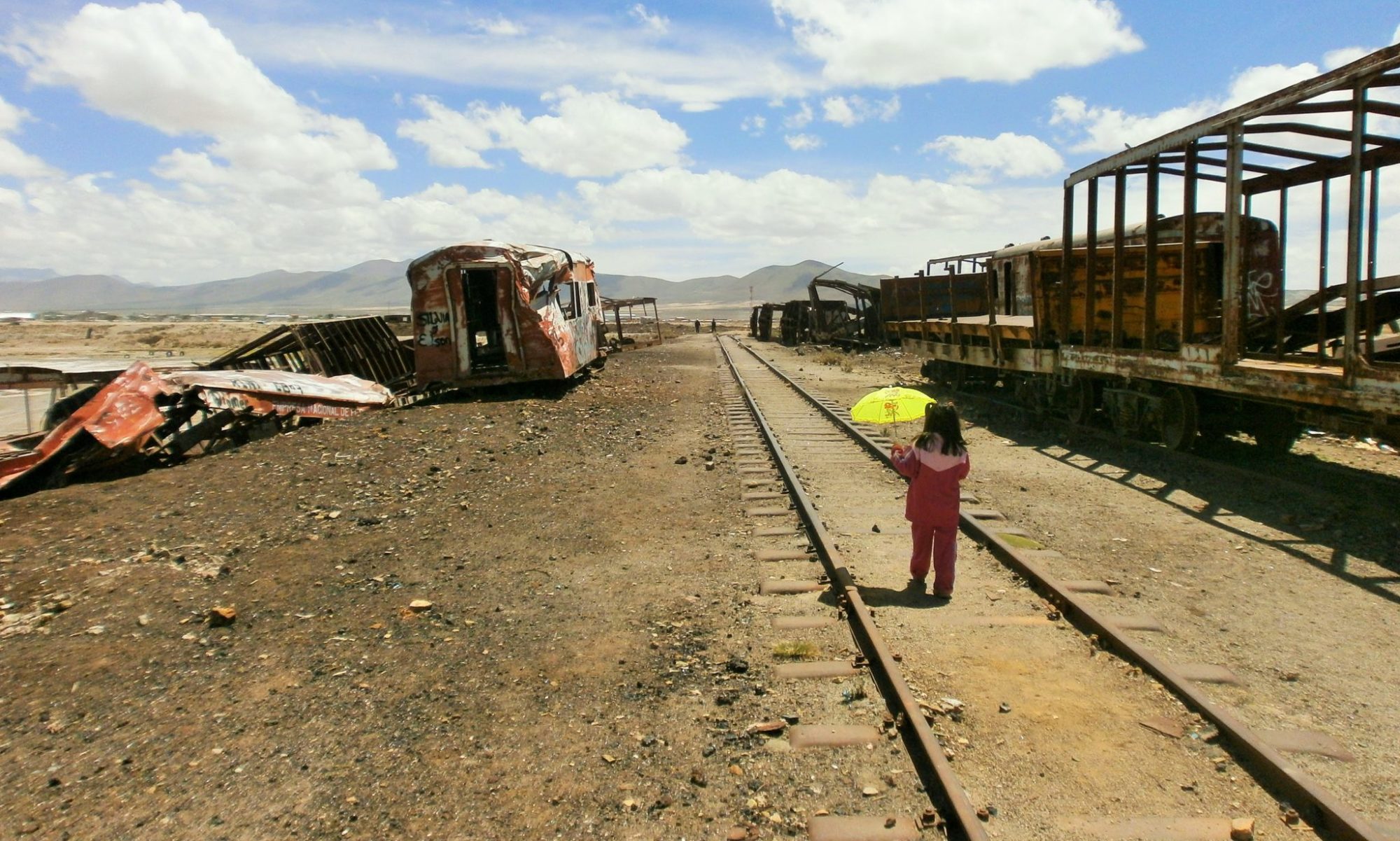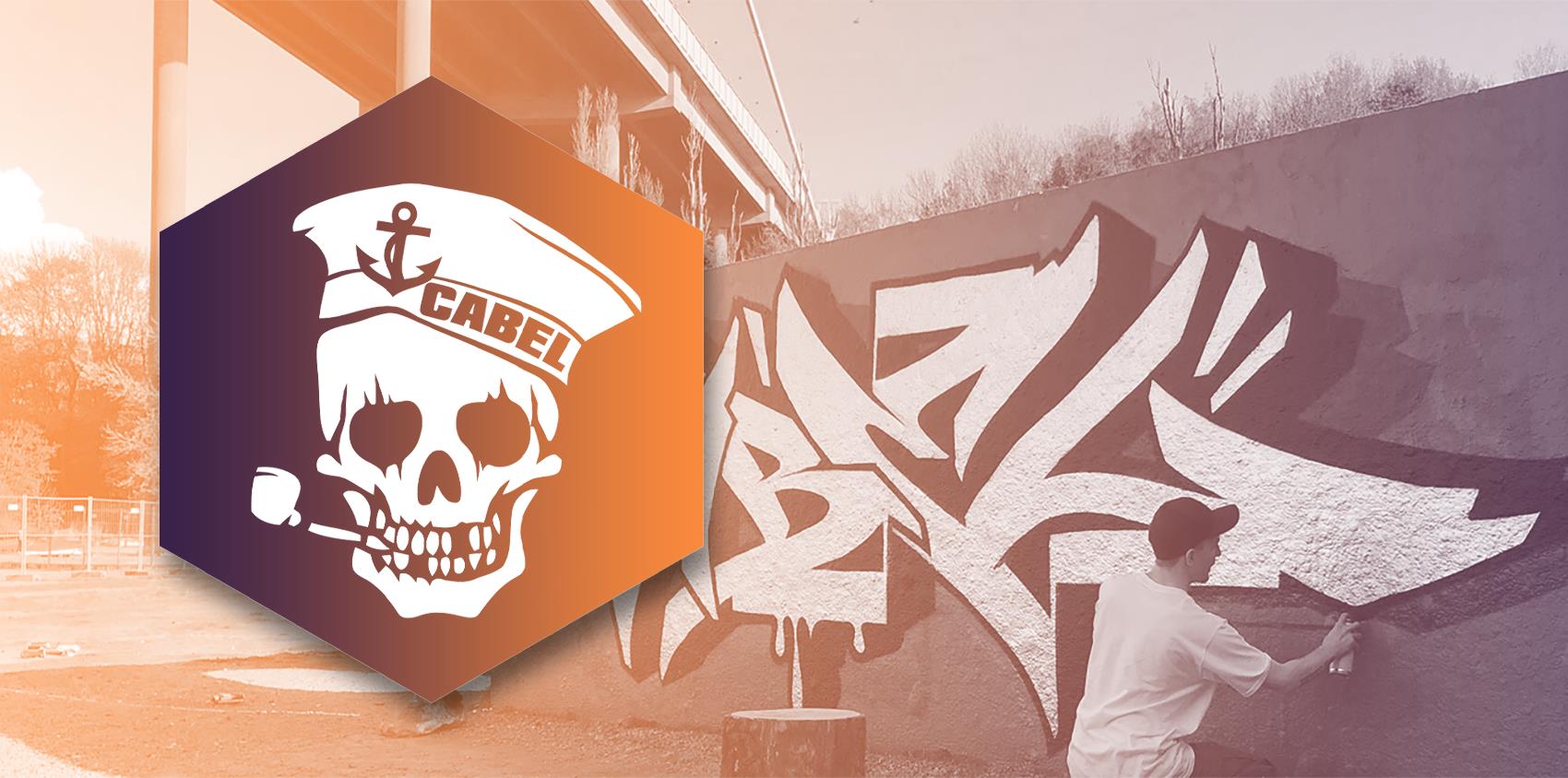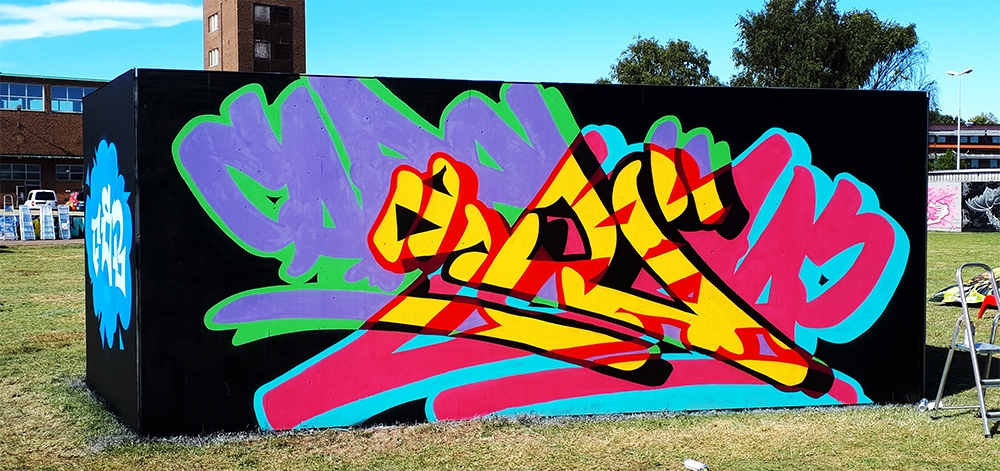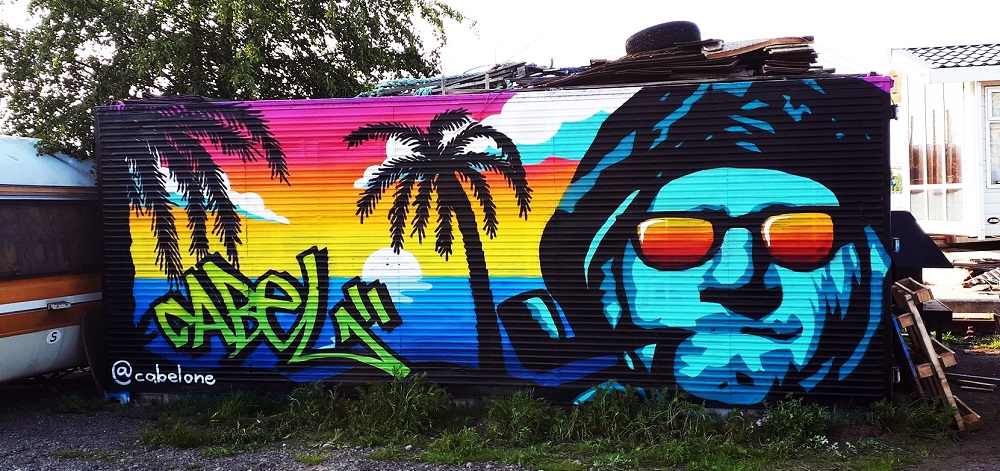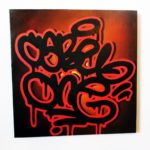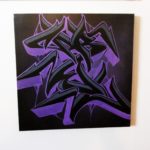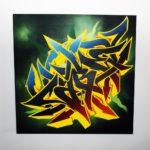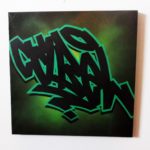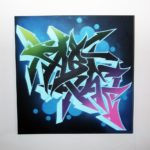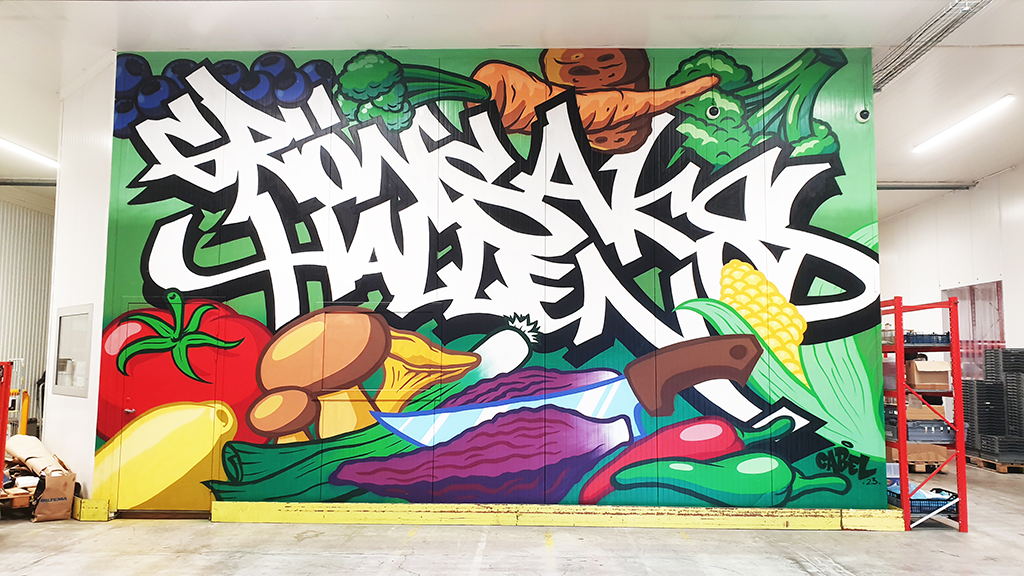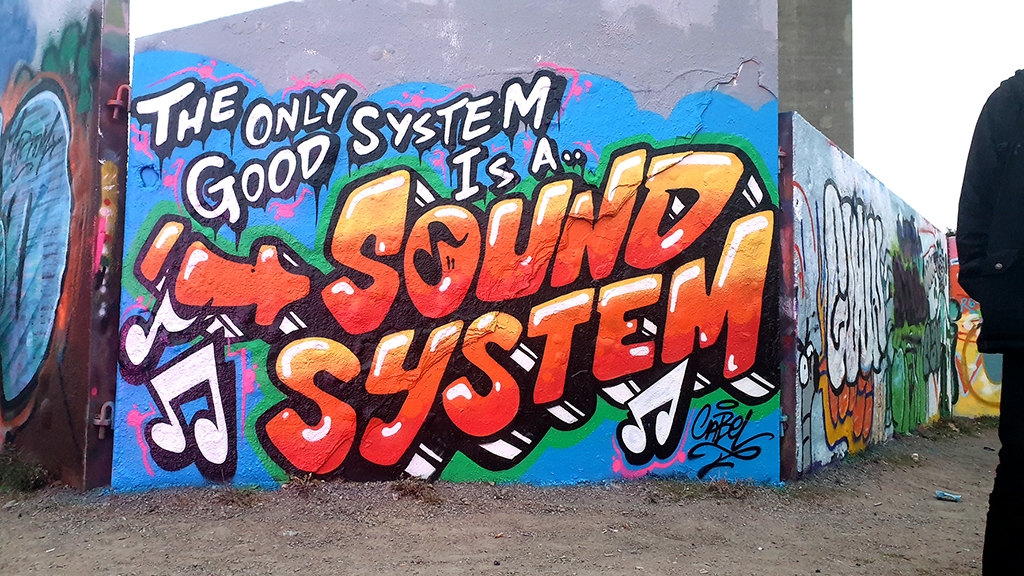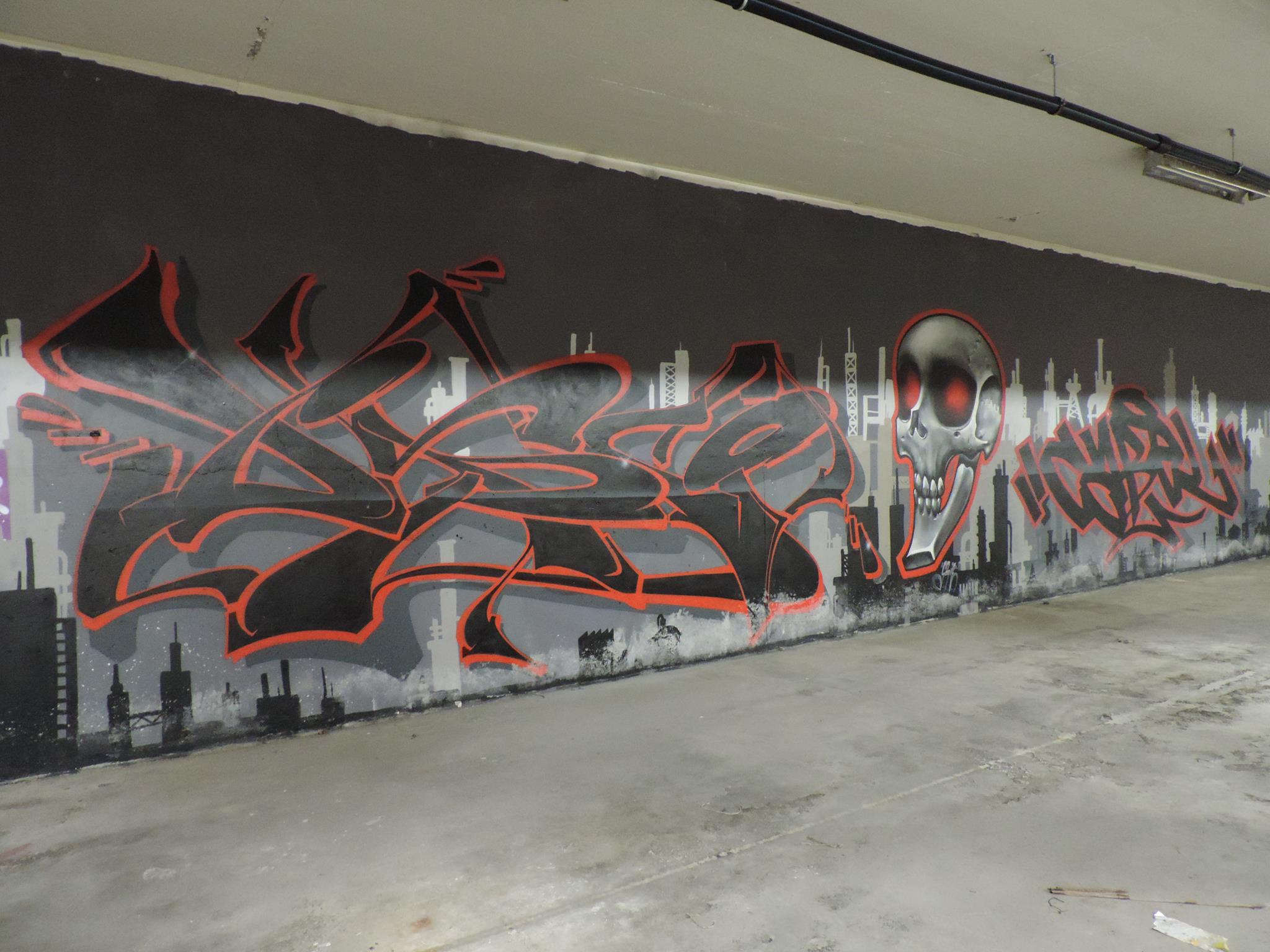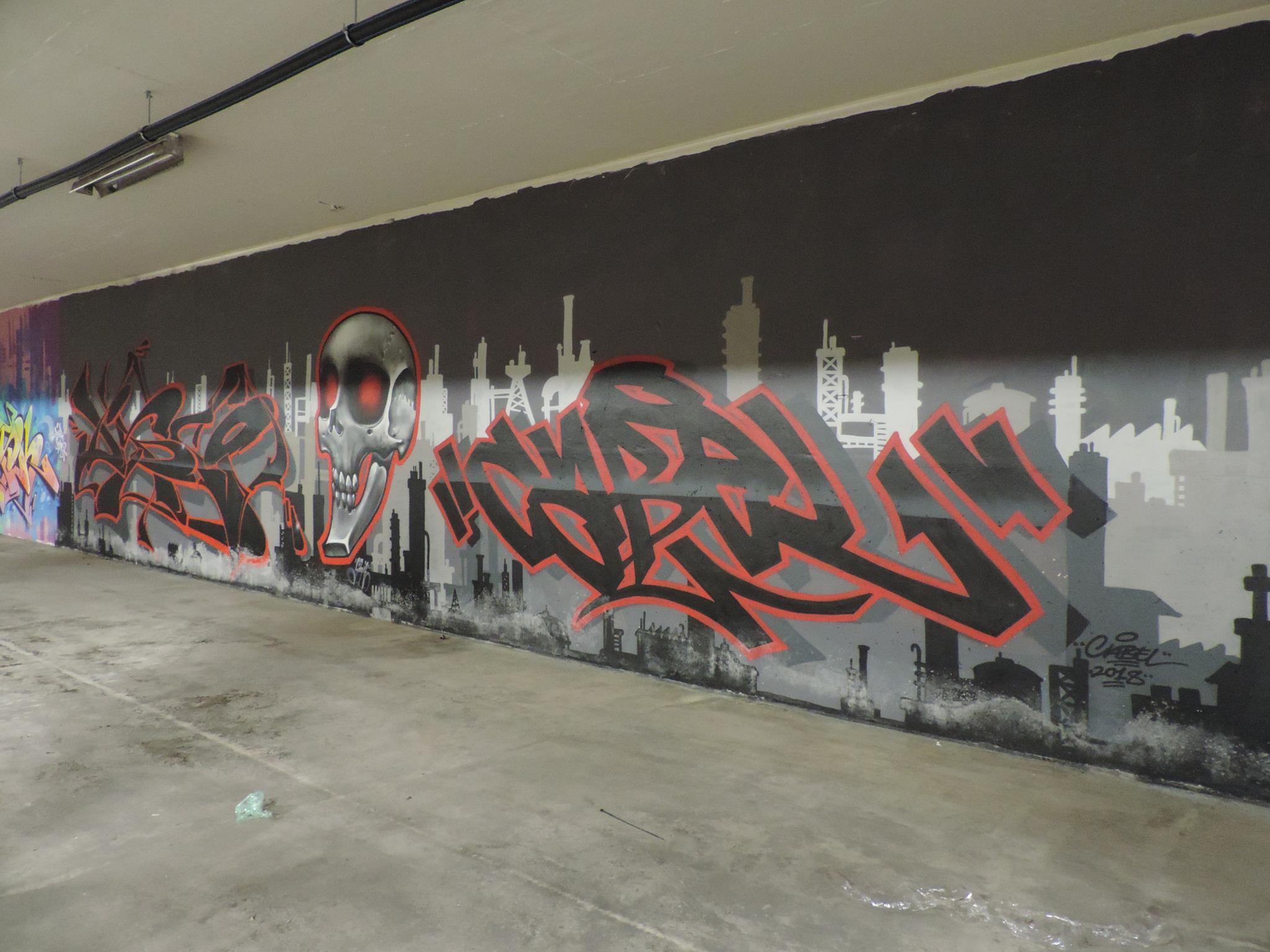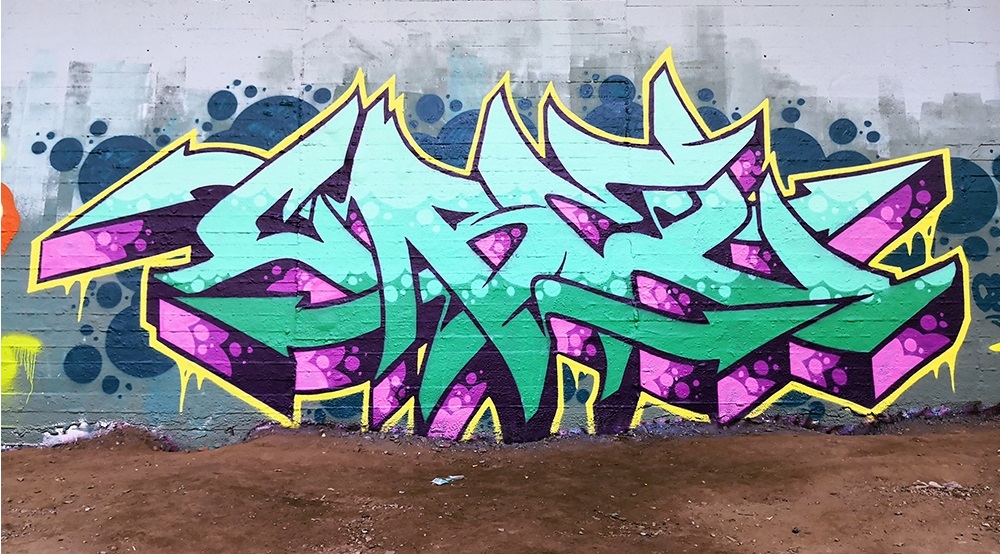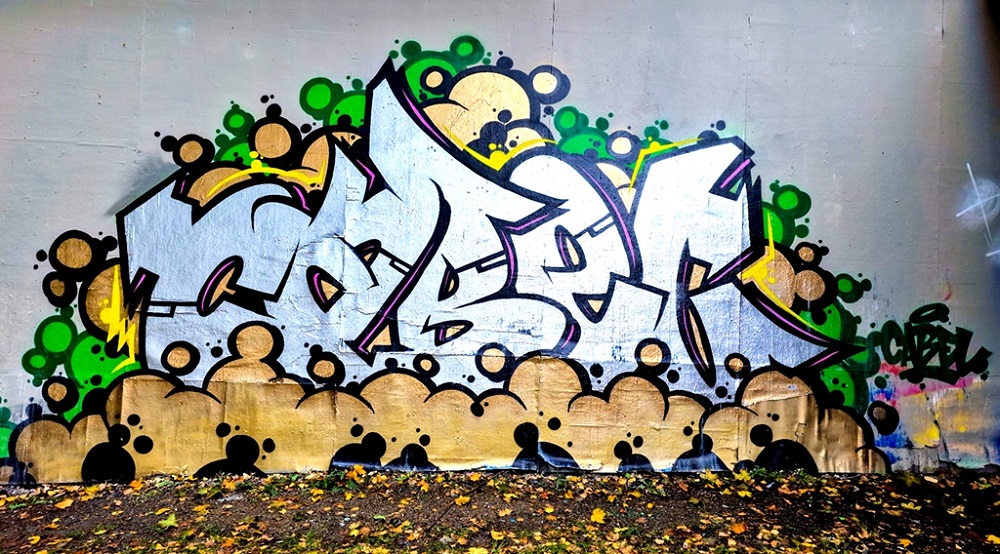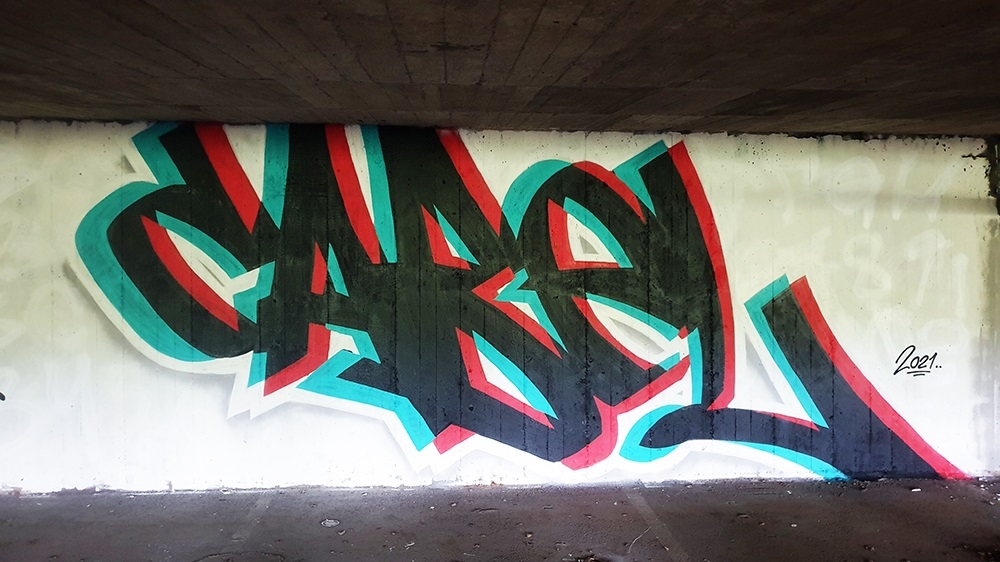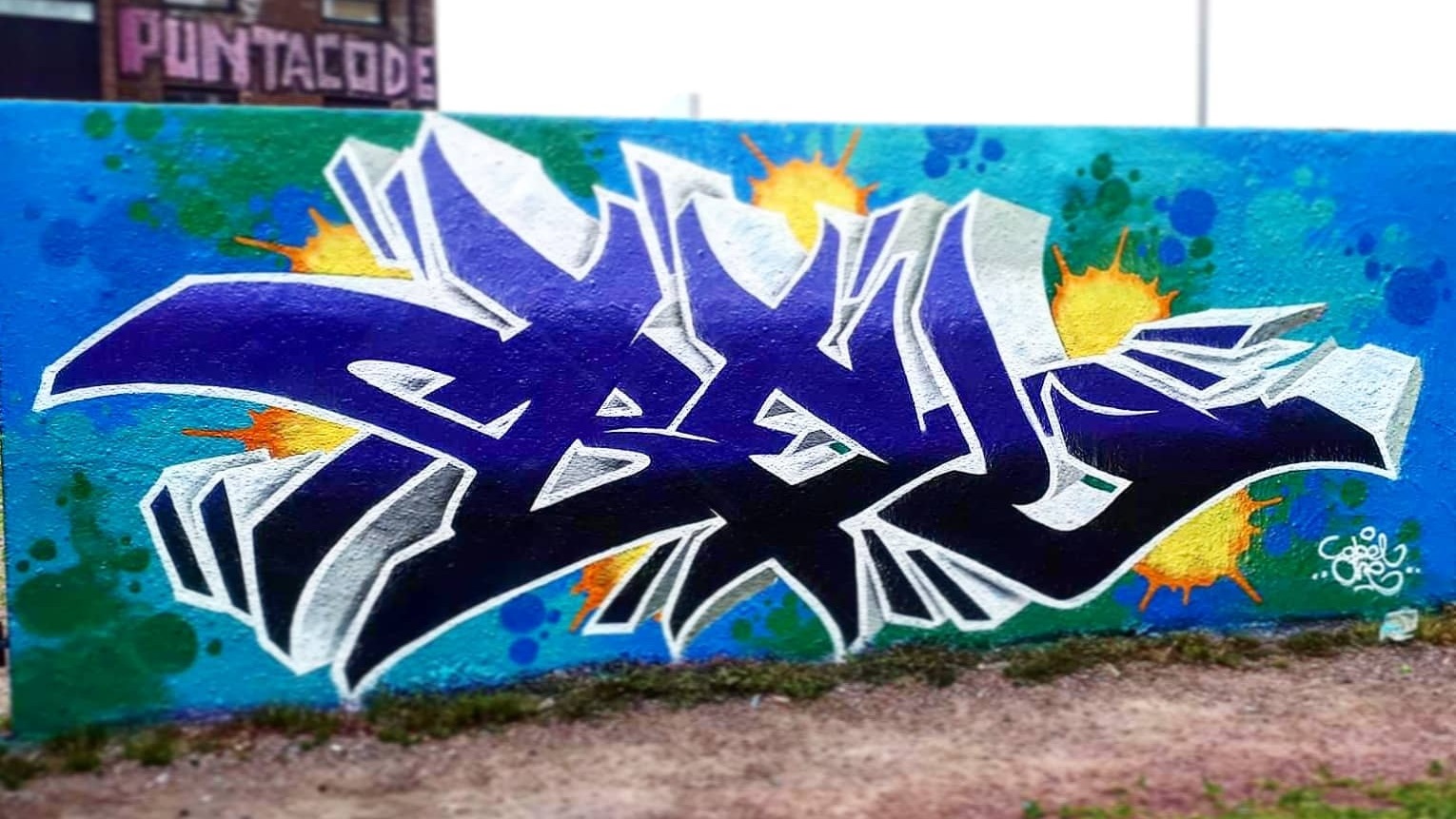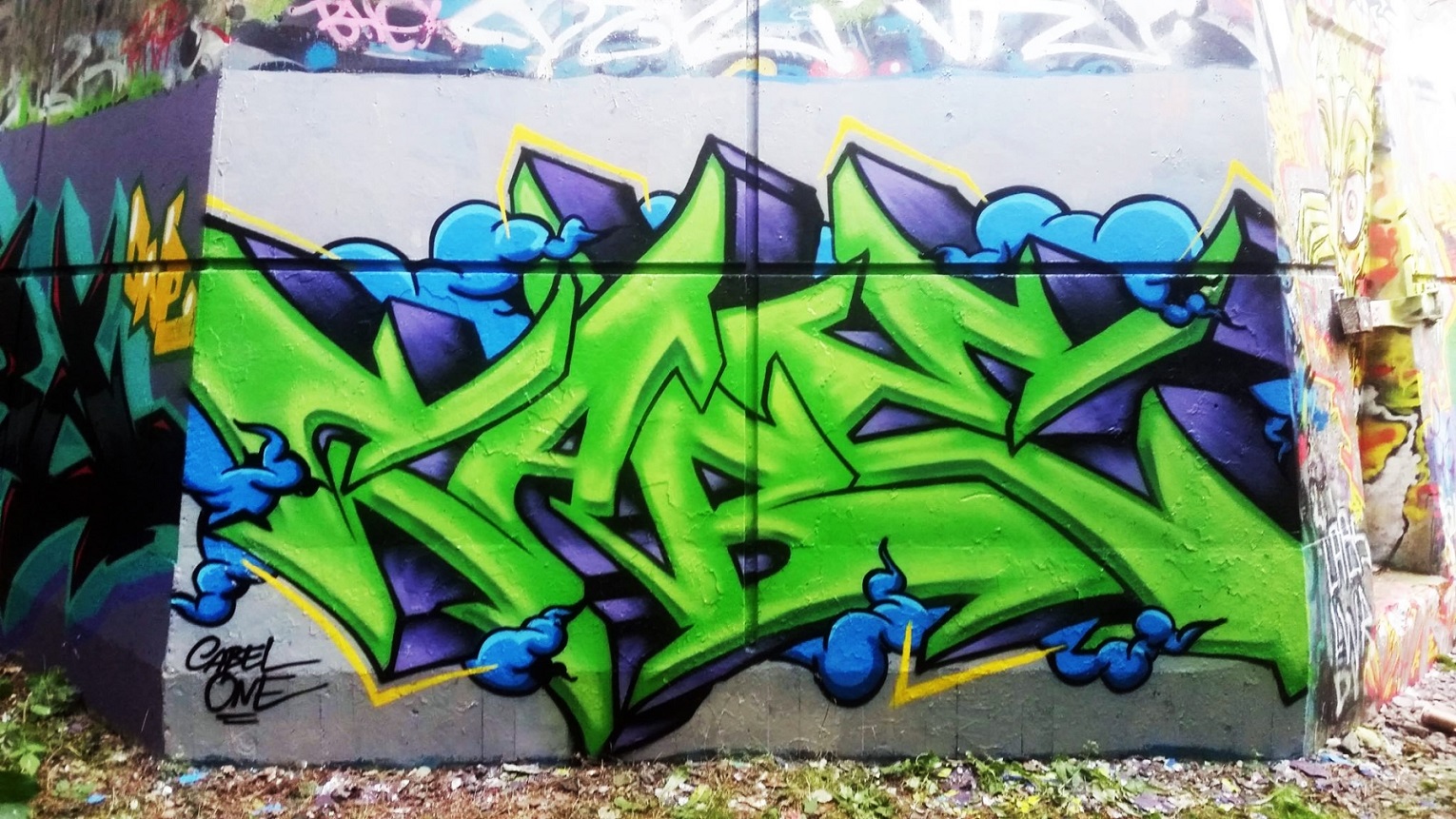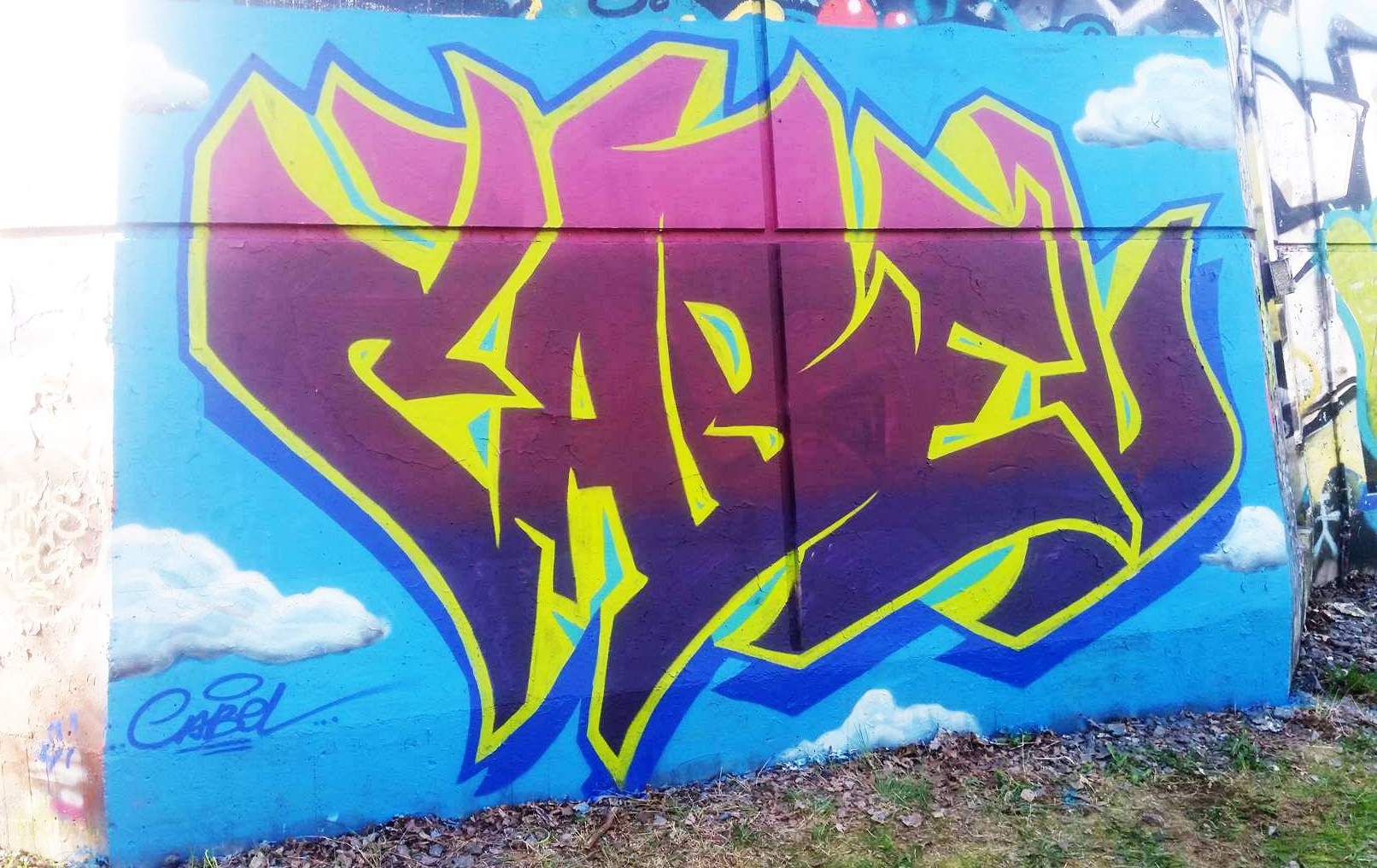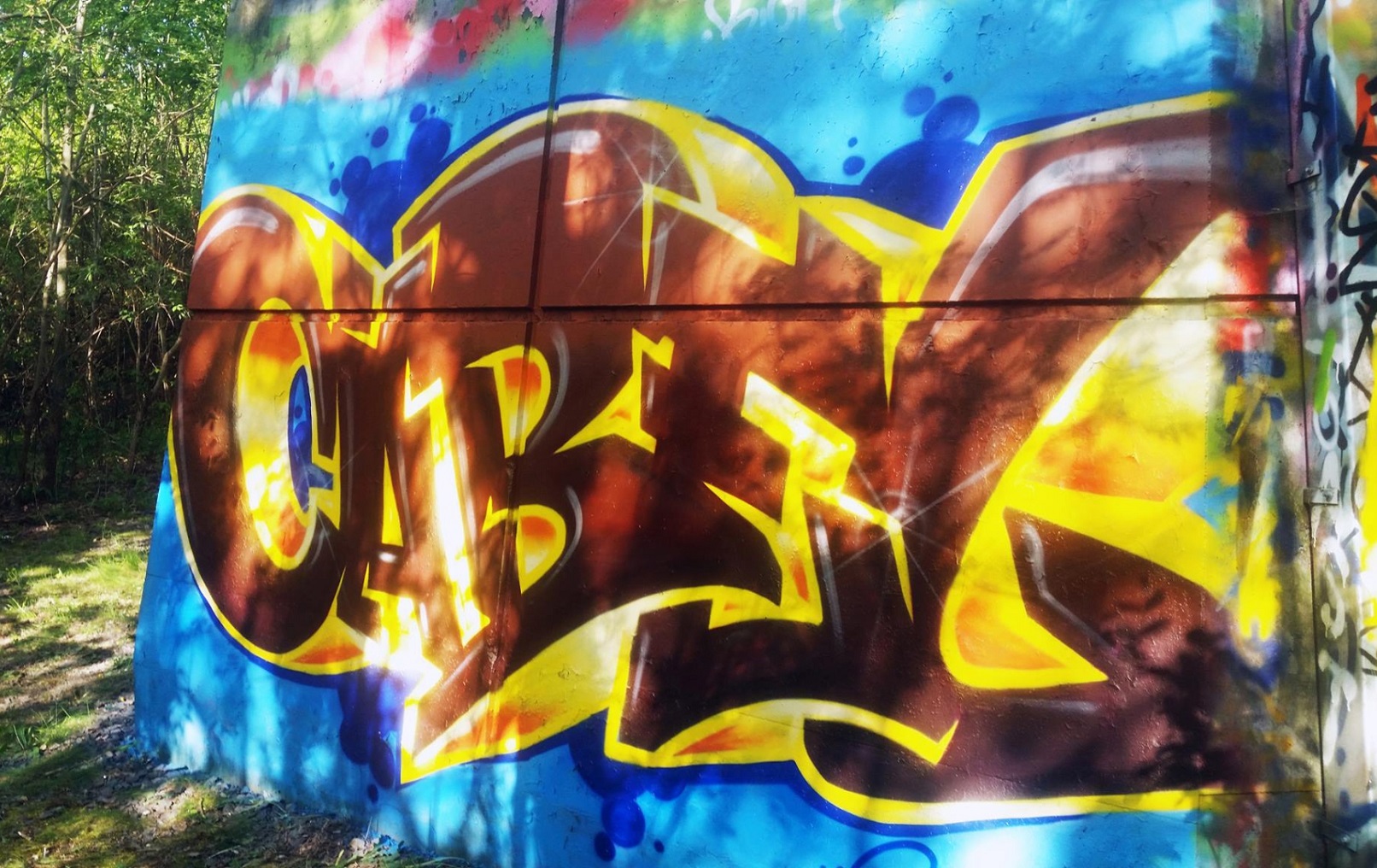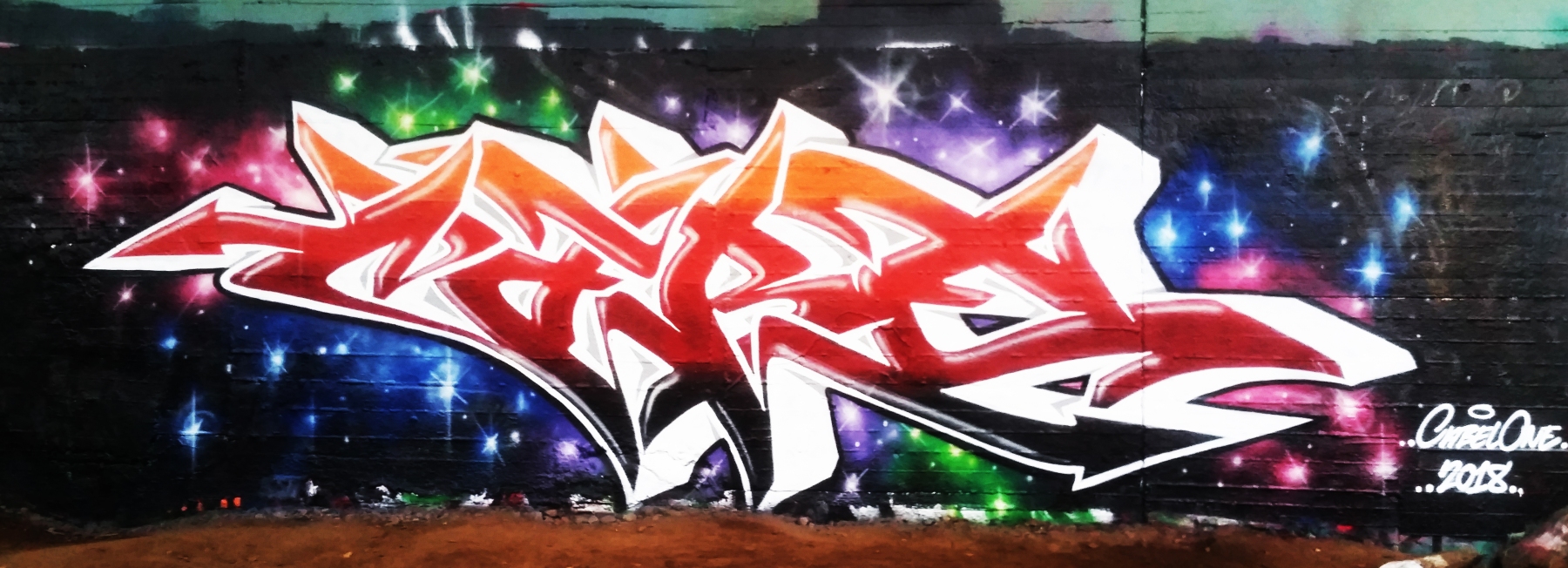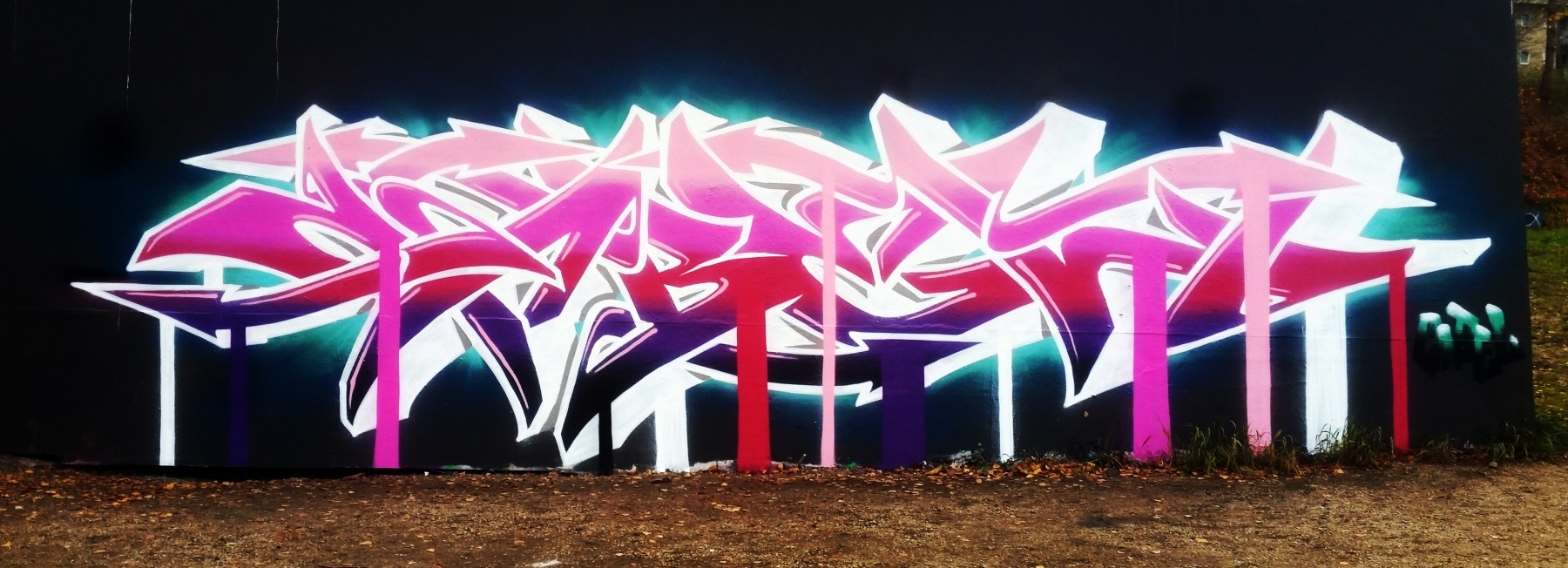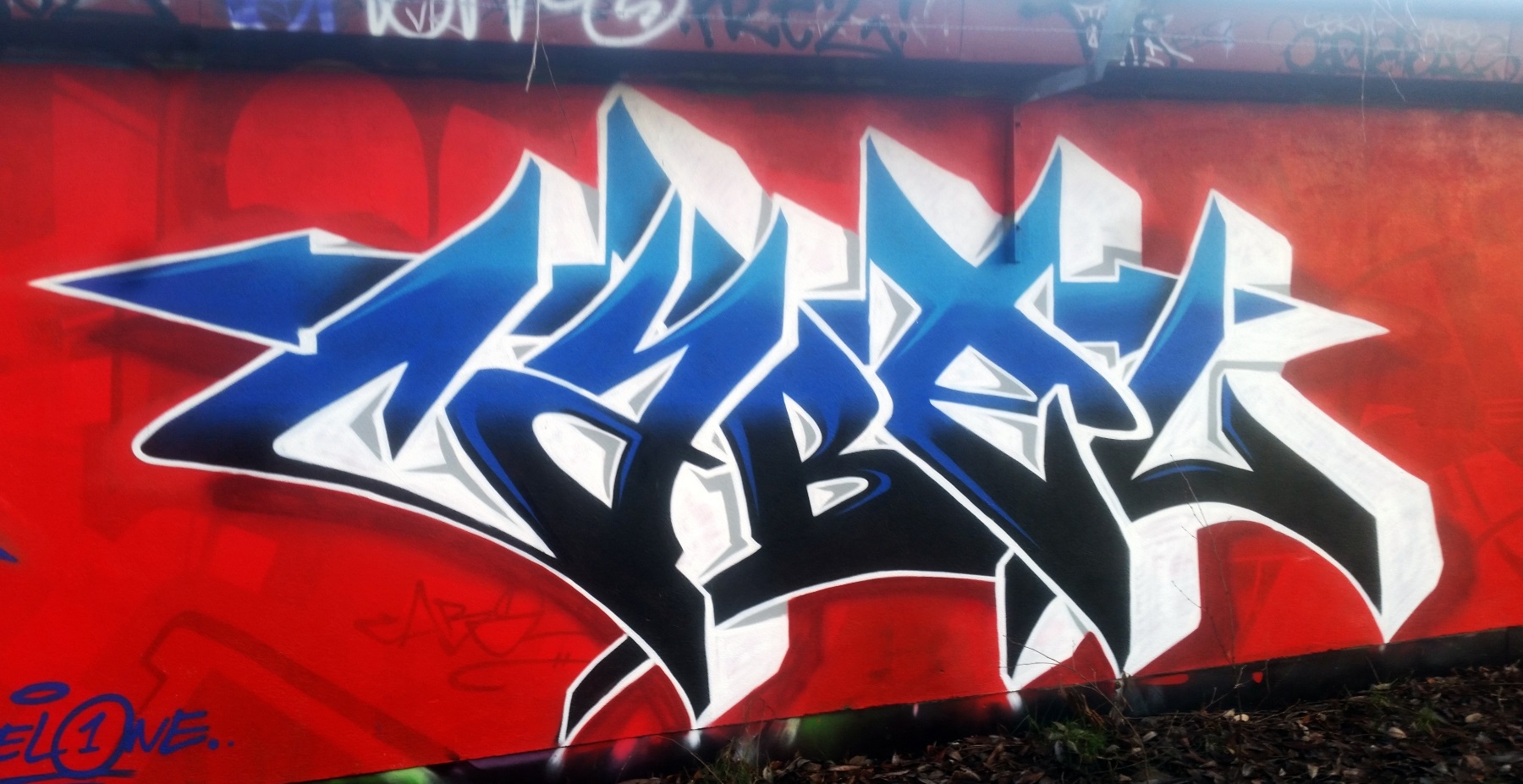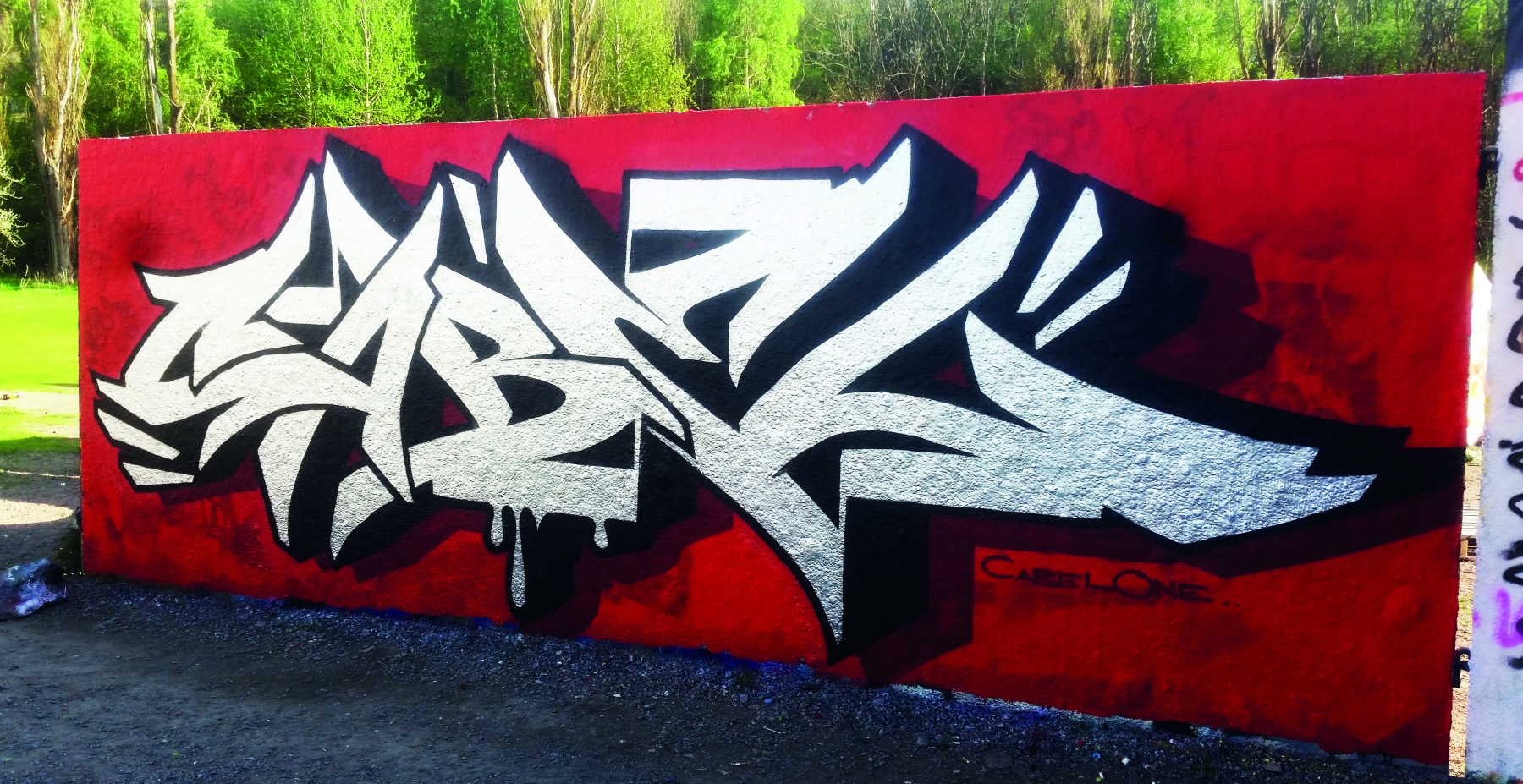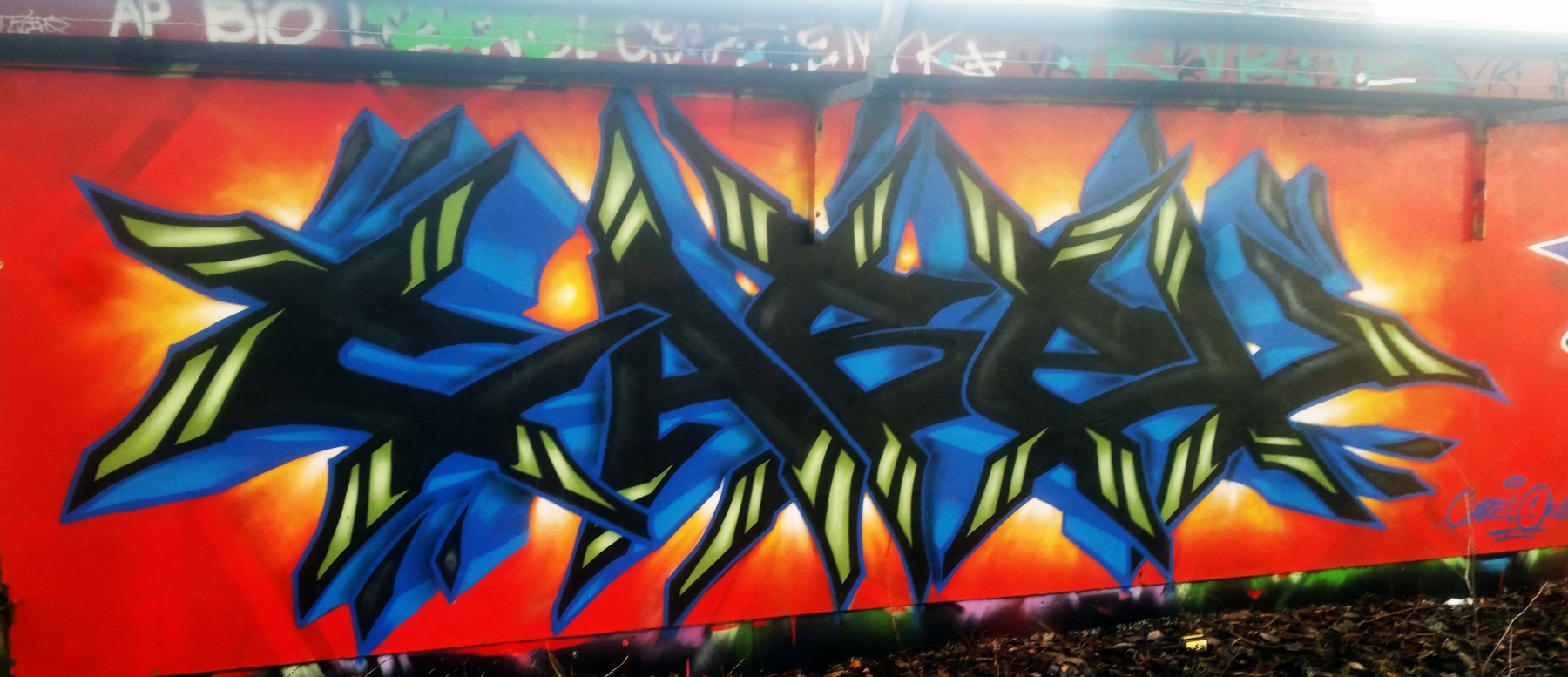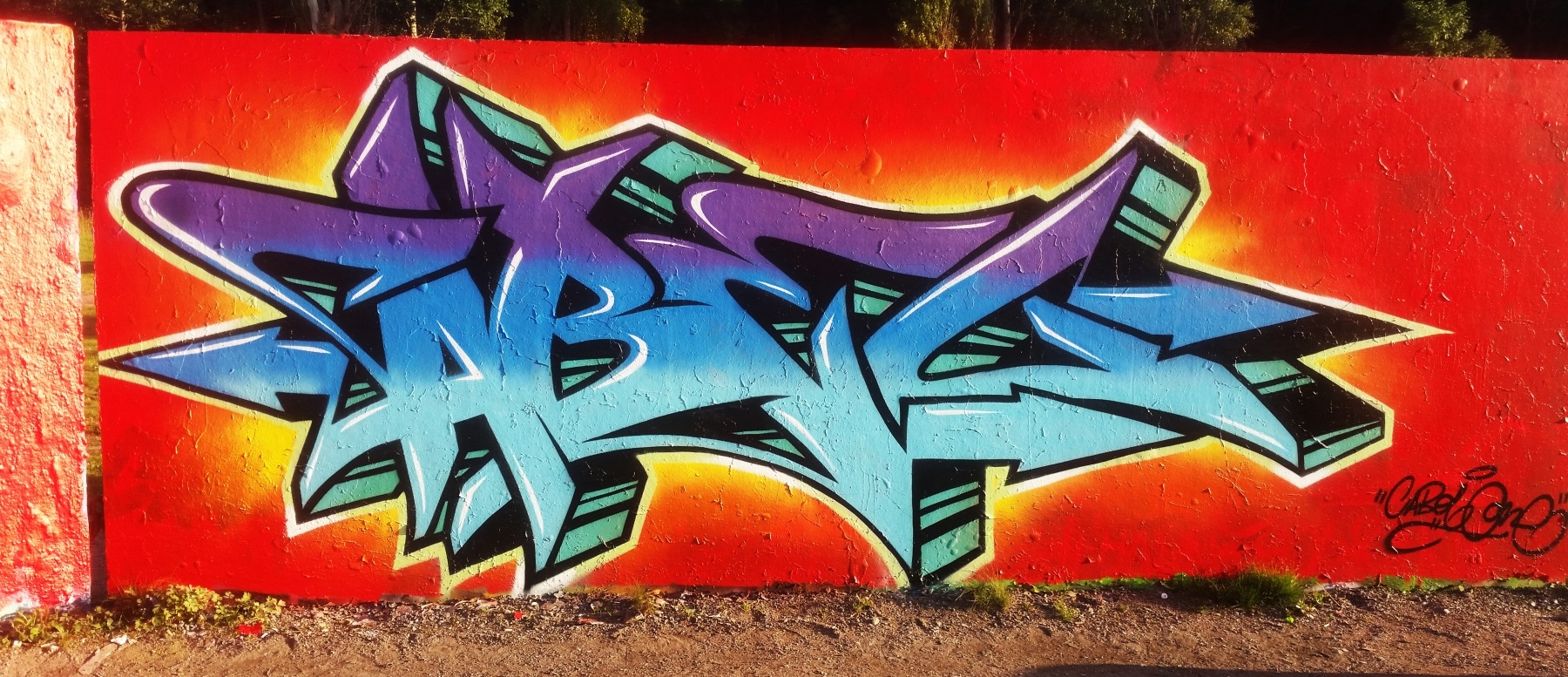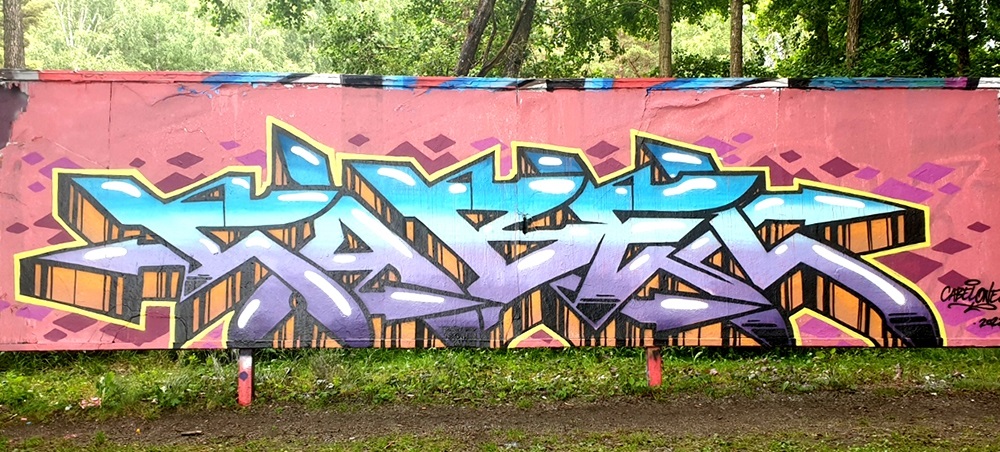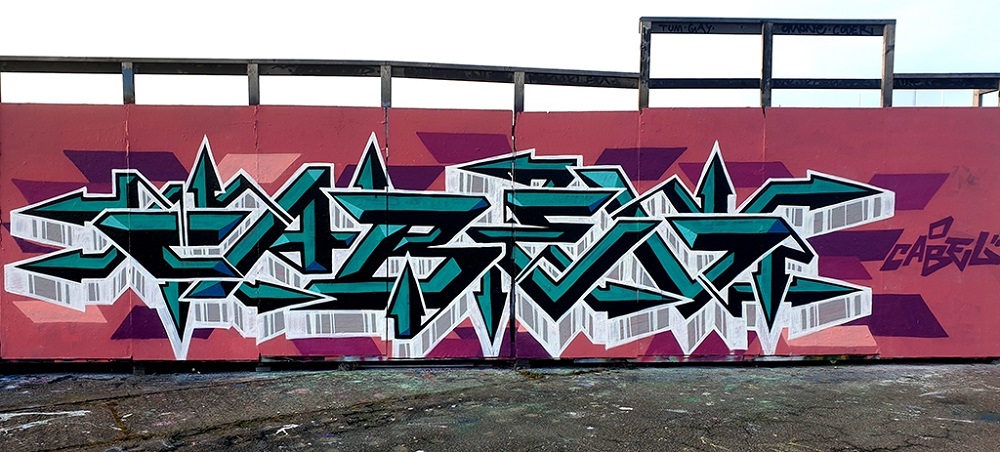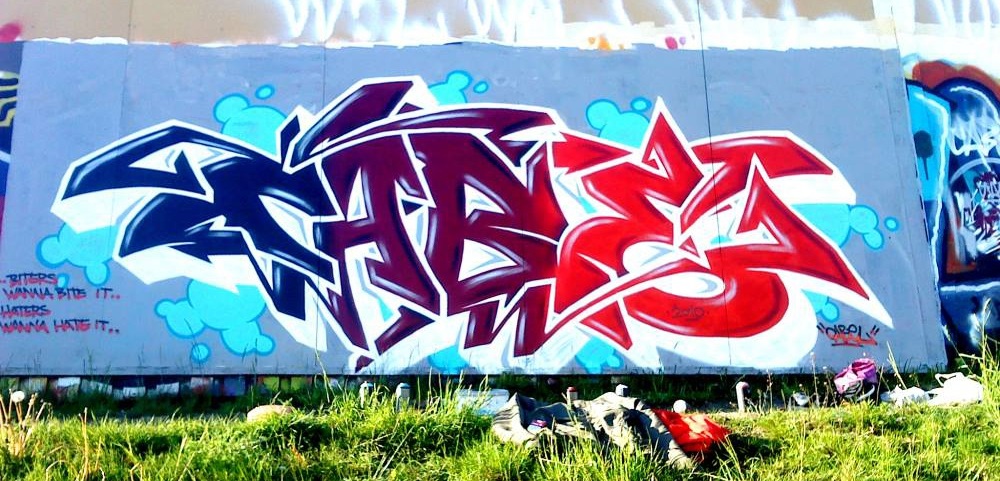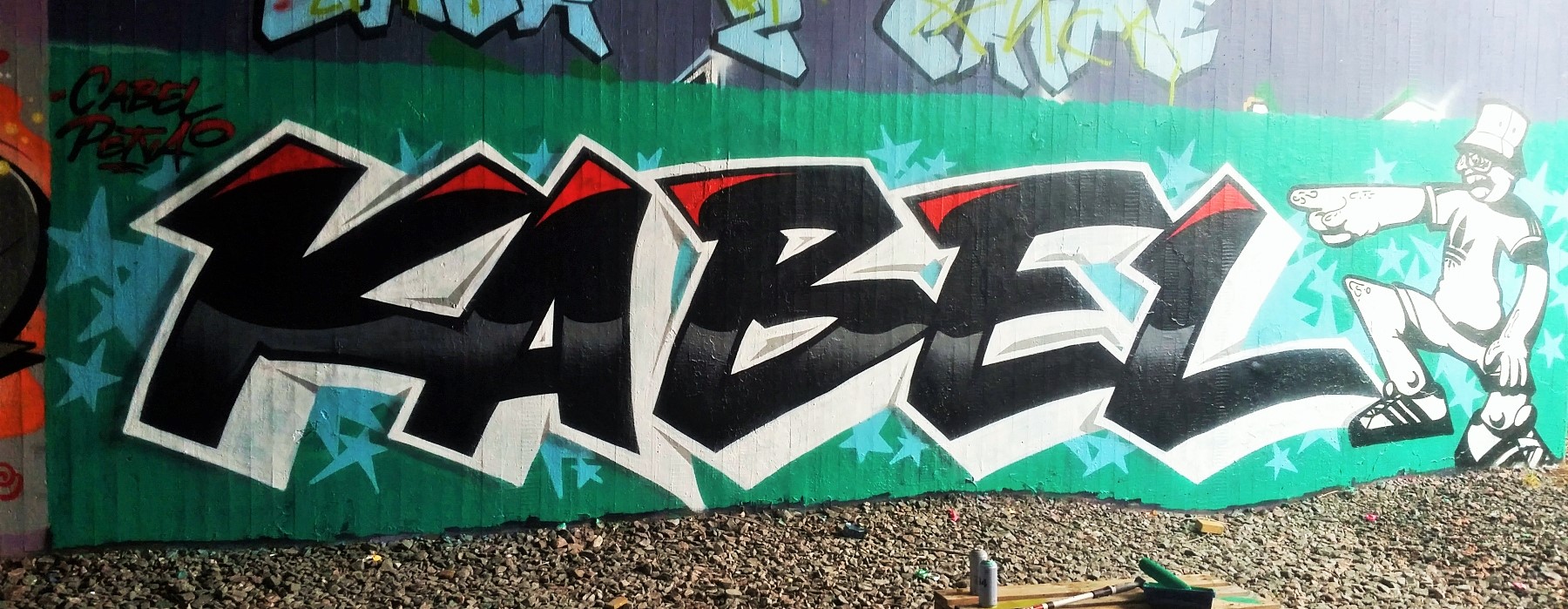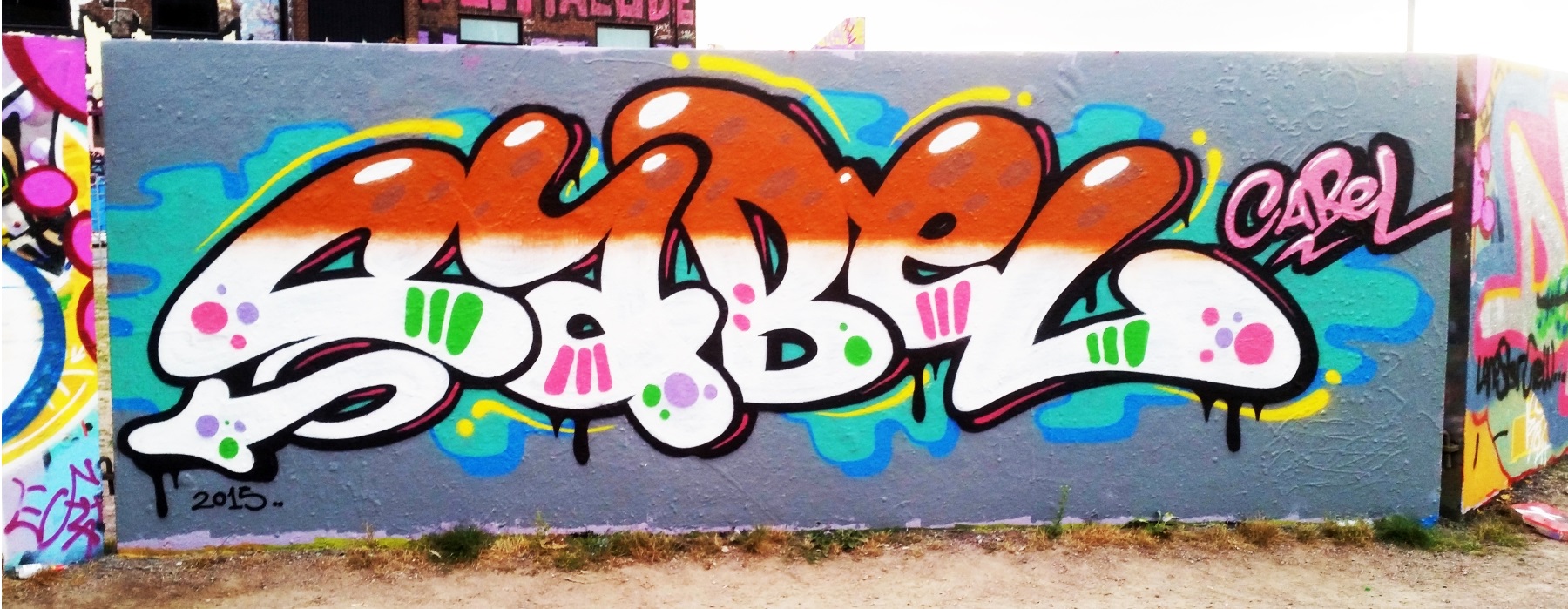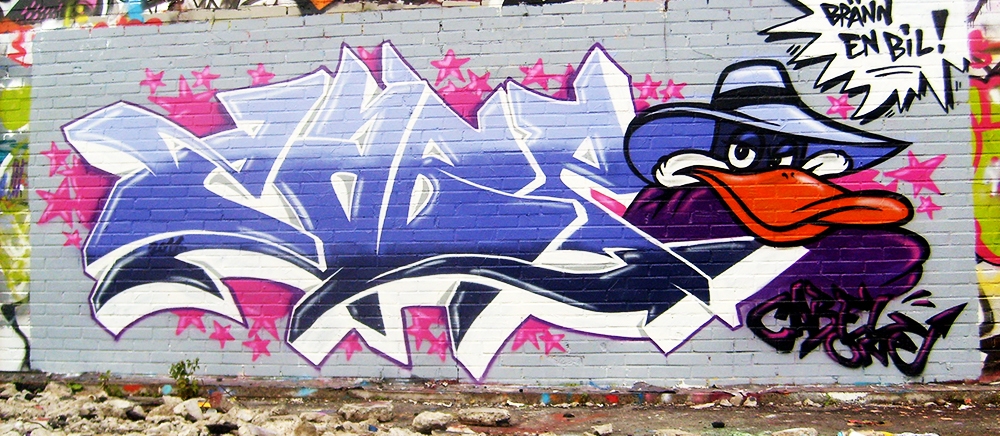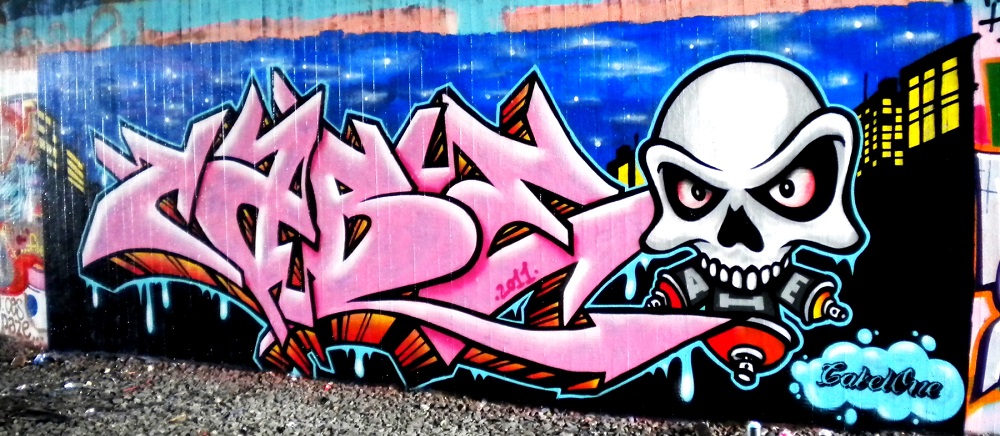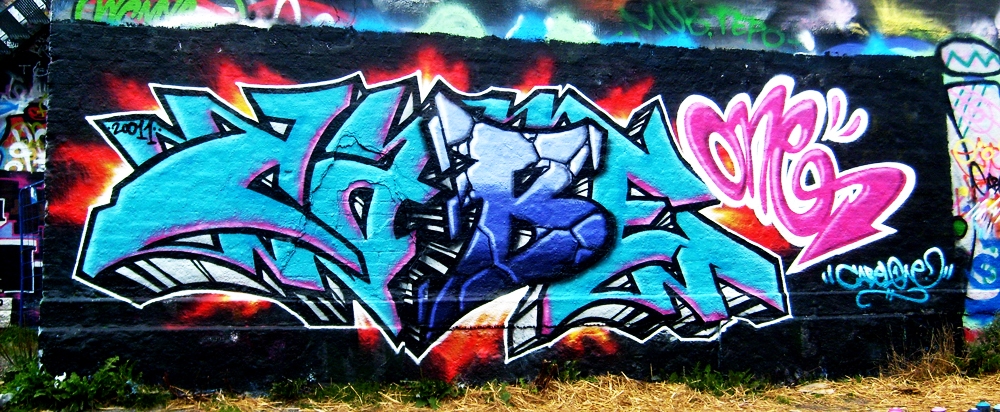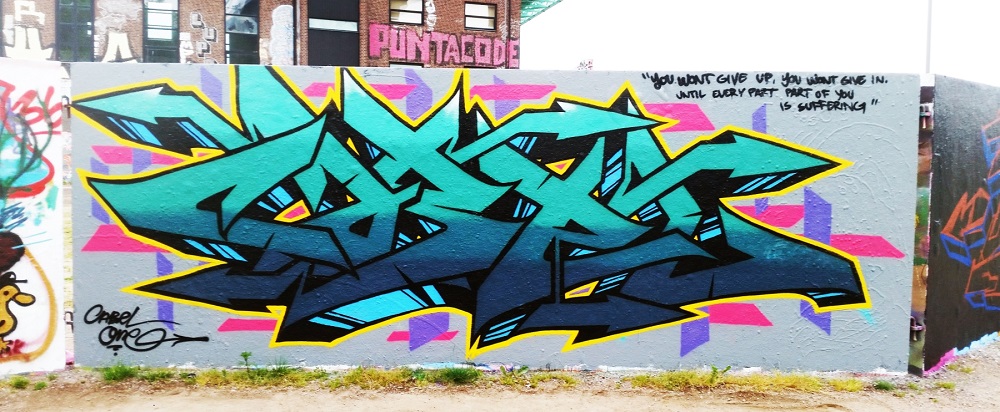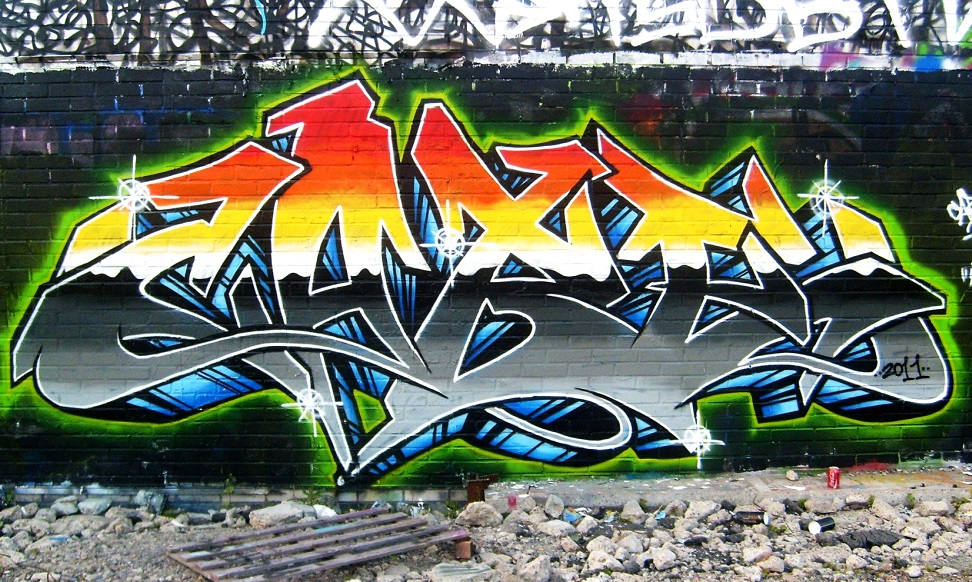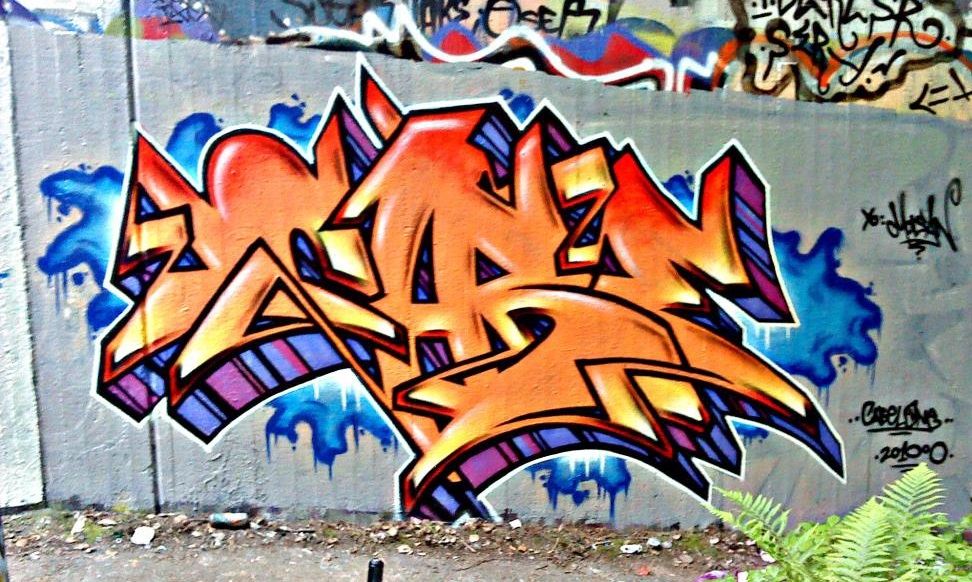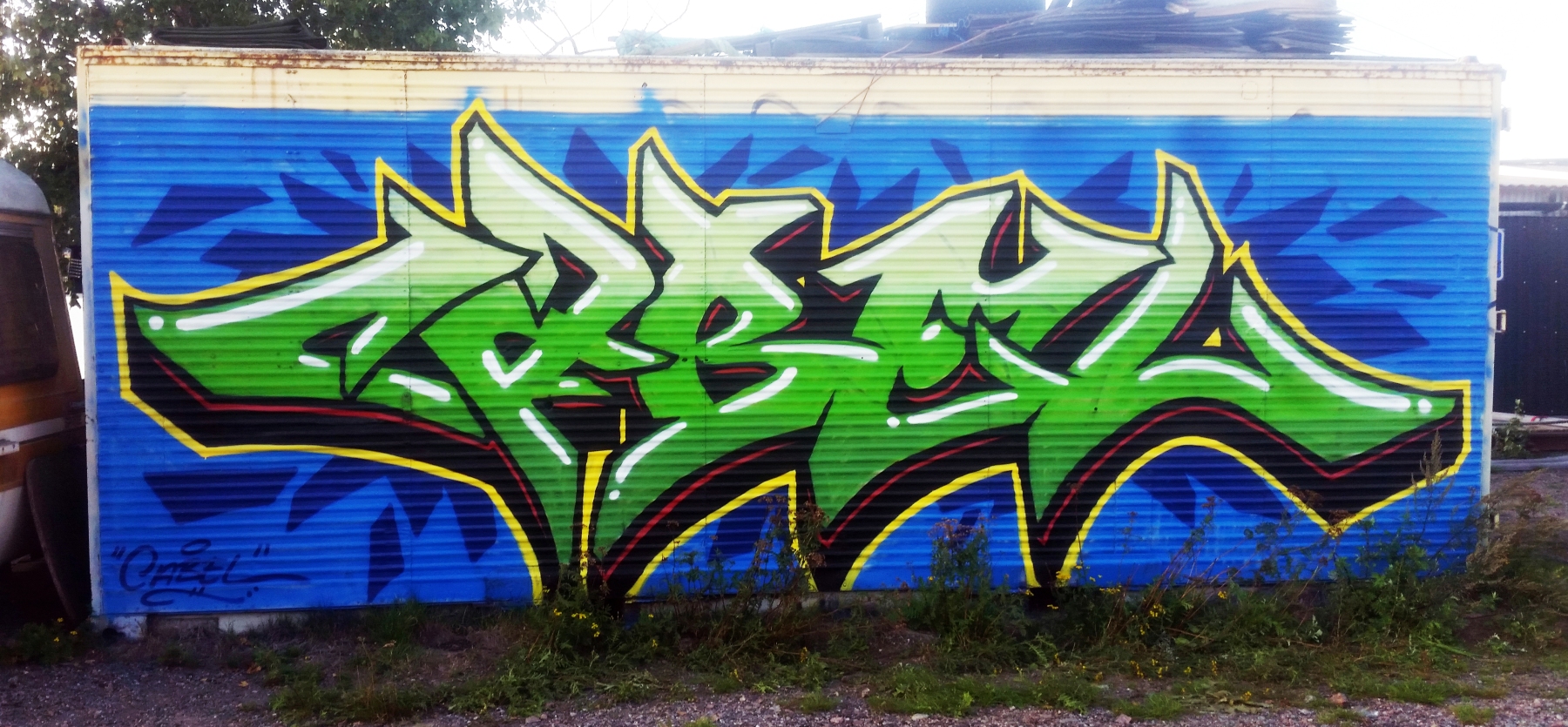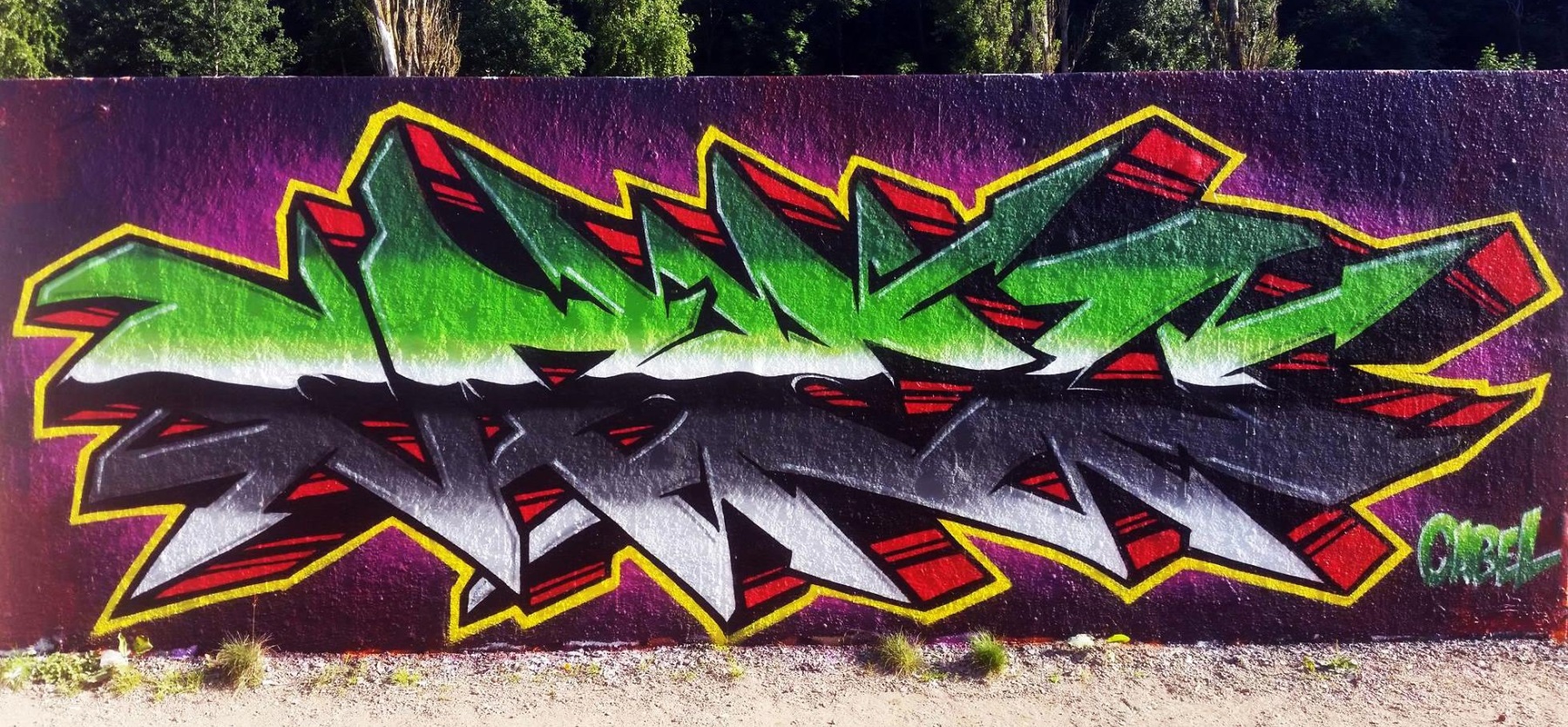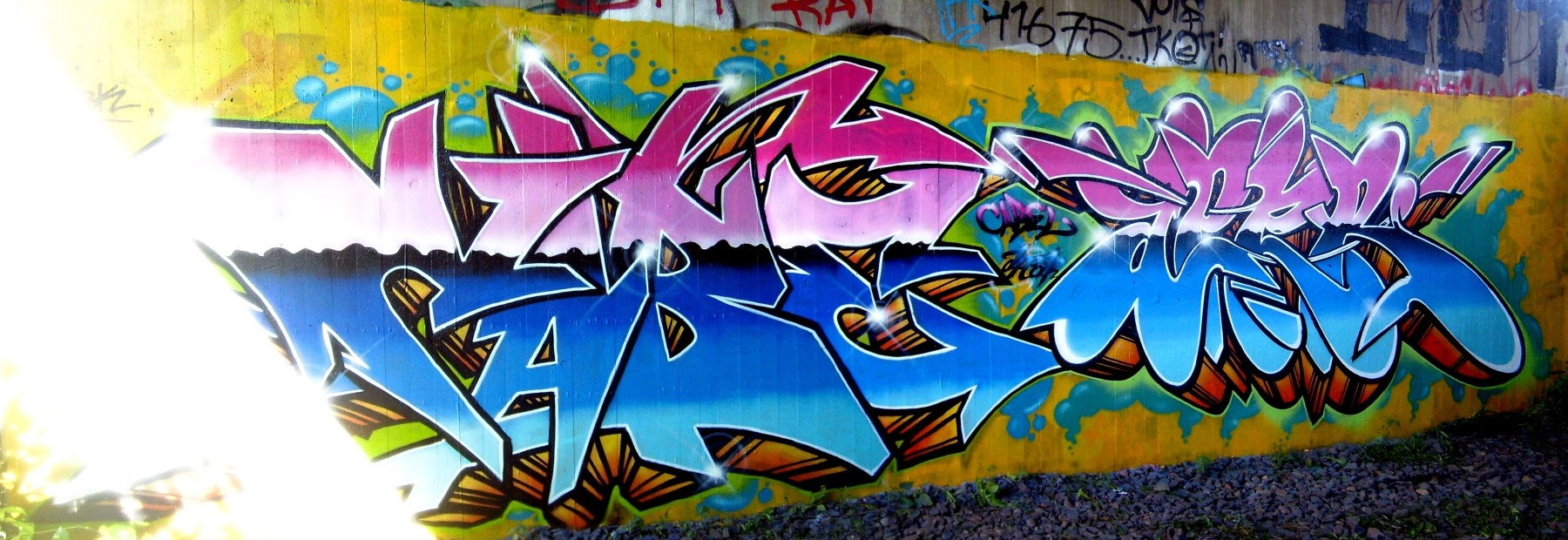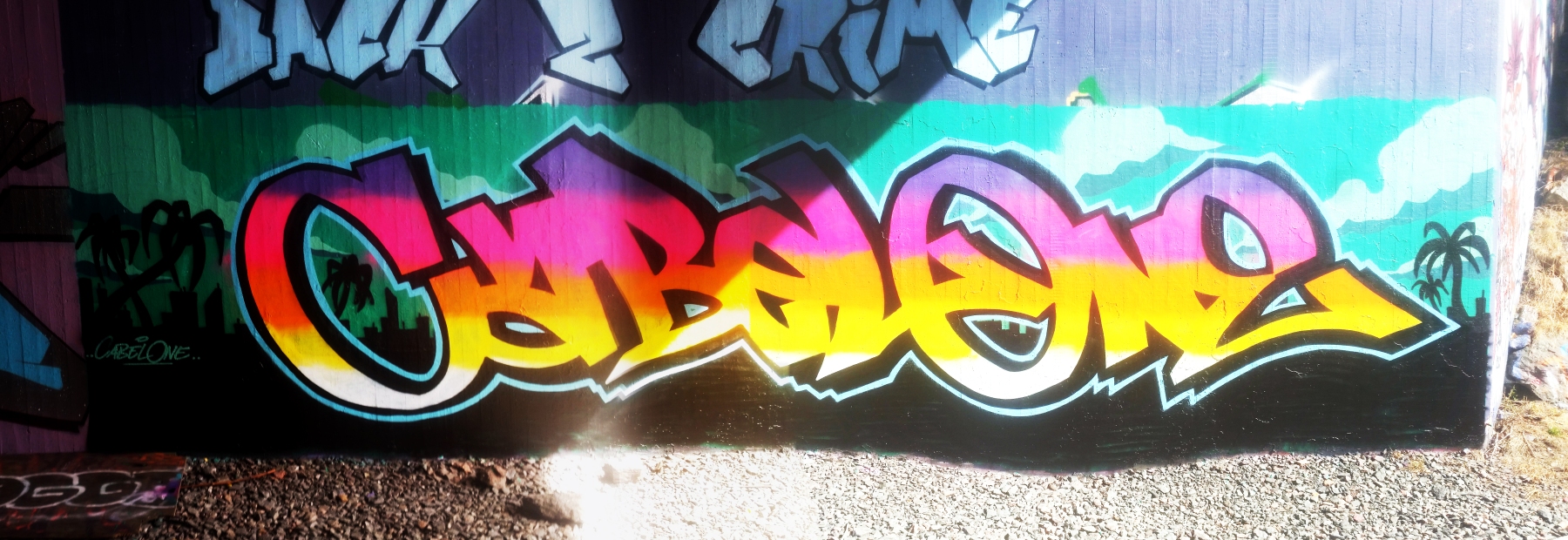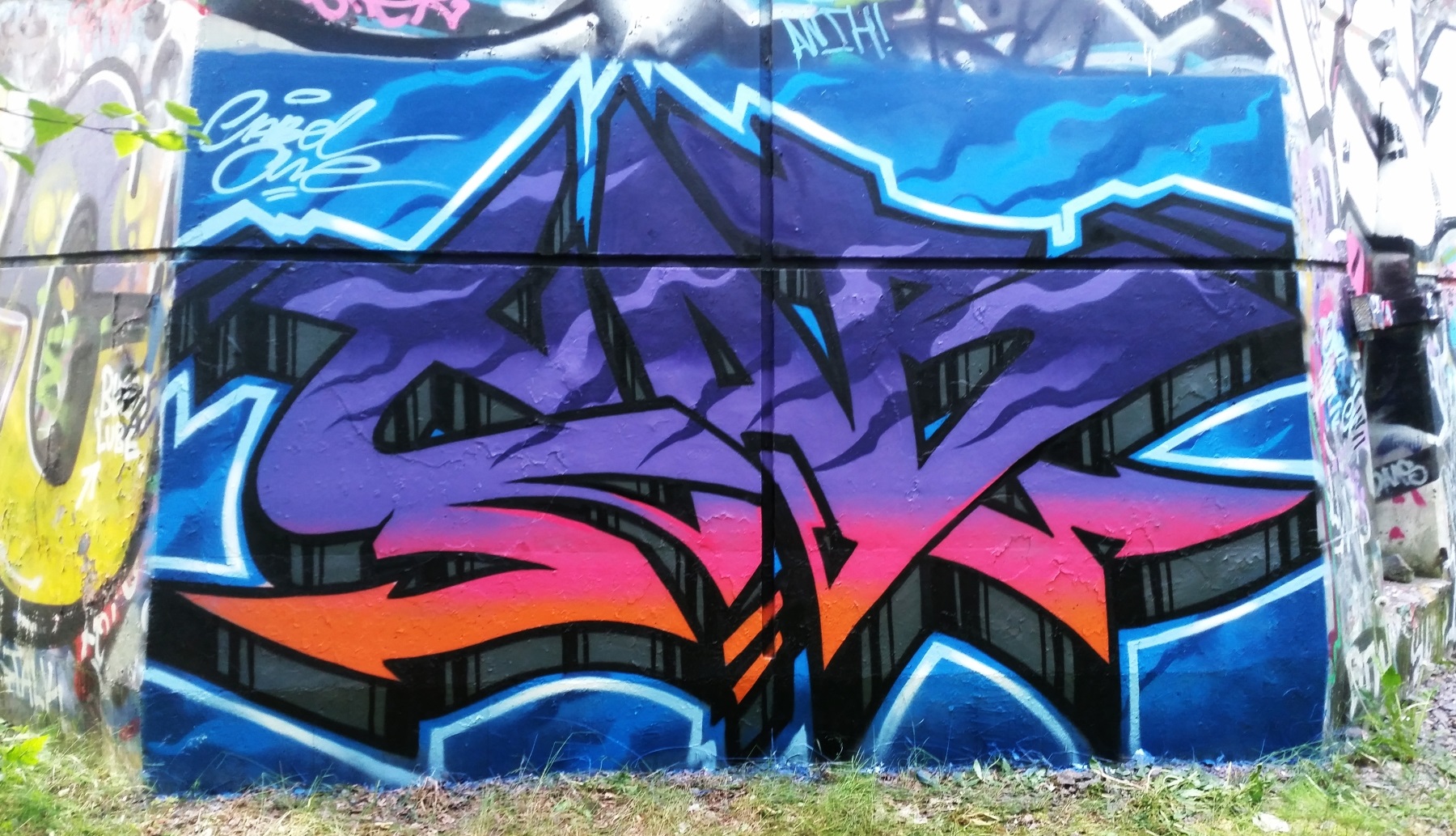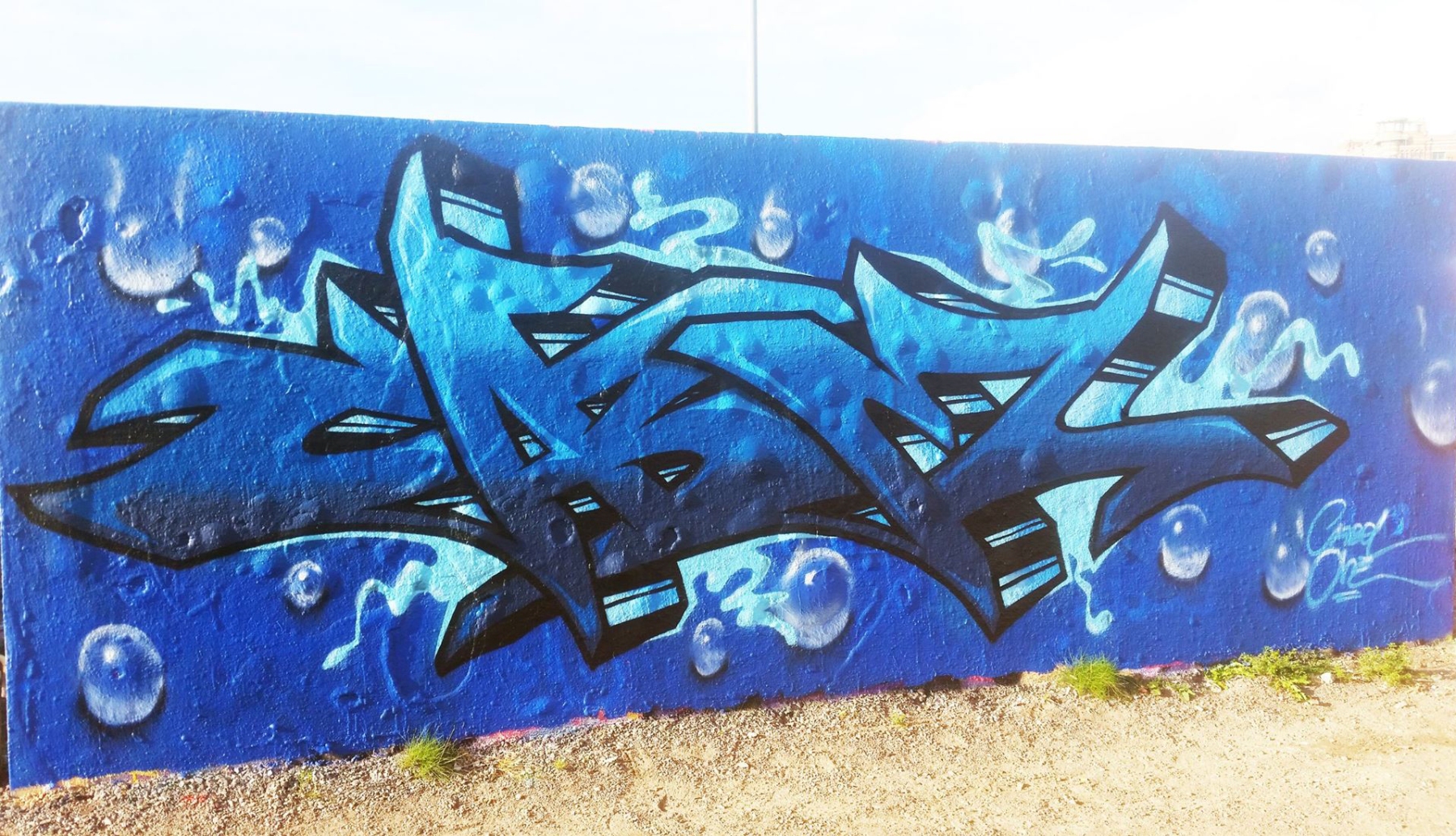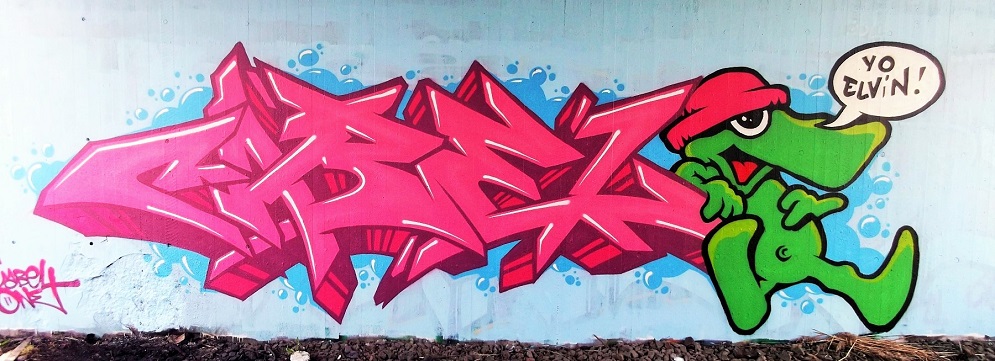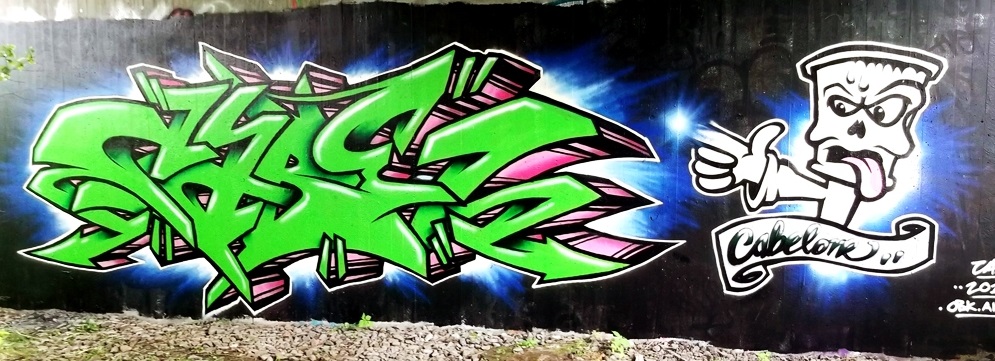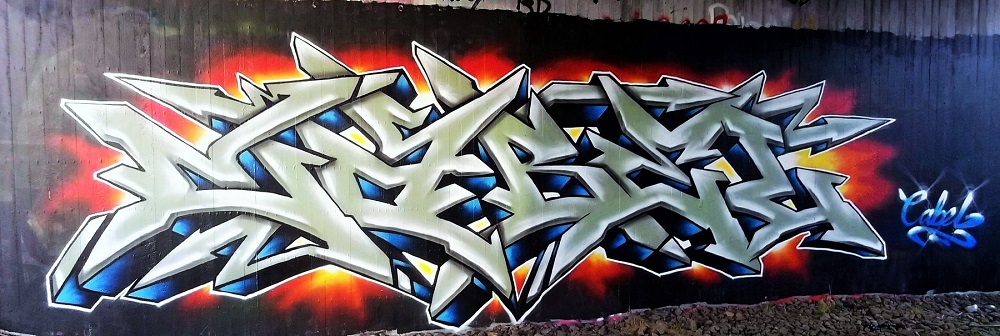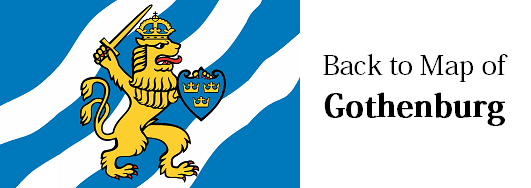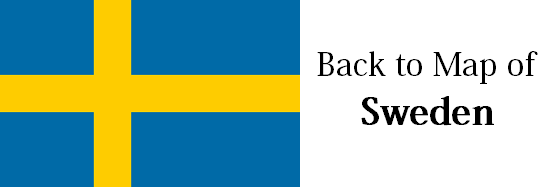The graffiti artist CABEL focuses on writing and letters, but he says that a good artist should be able to paint anything. Mostly it is his wildstyle name, but in addition to the great alphabetical formations, his art also includes a lot of times characters or a mixture of them in spacey atmospheres. In any case, it is always strongly colorful.
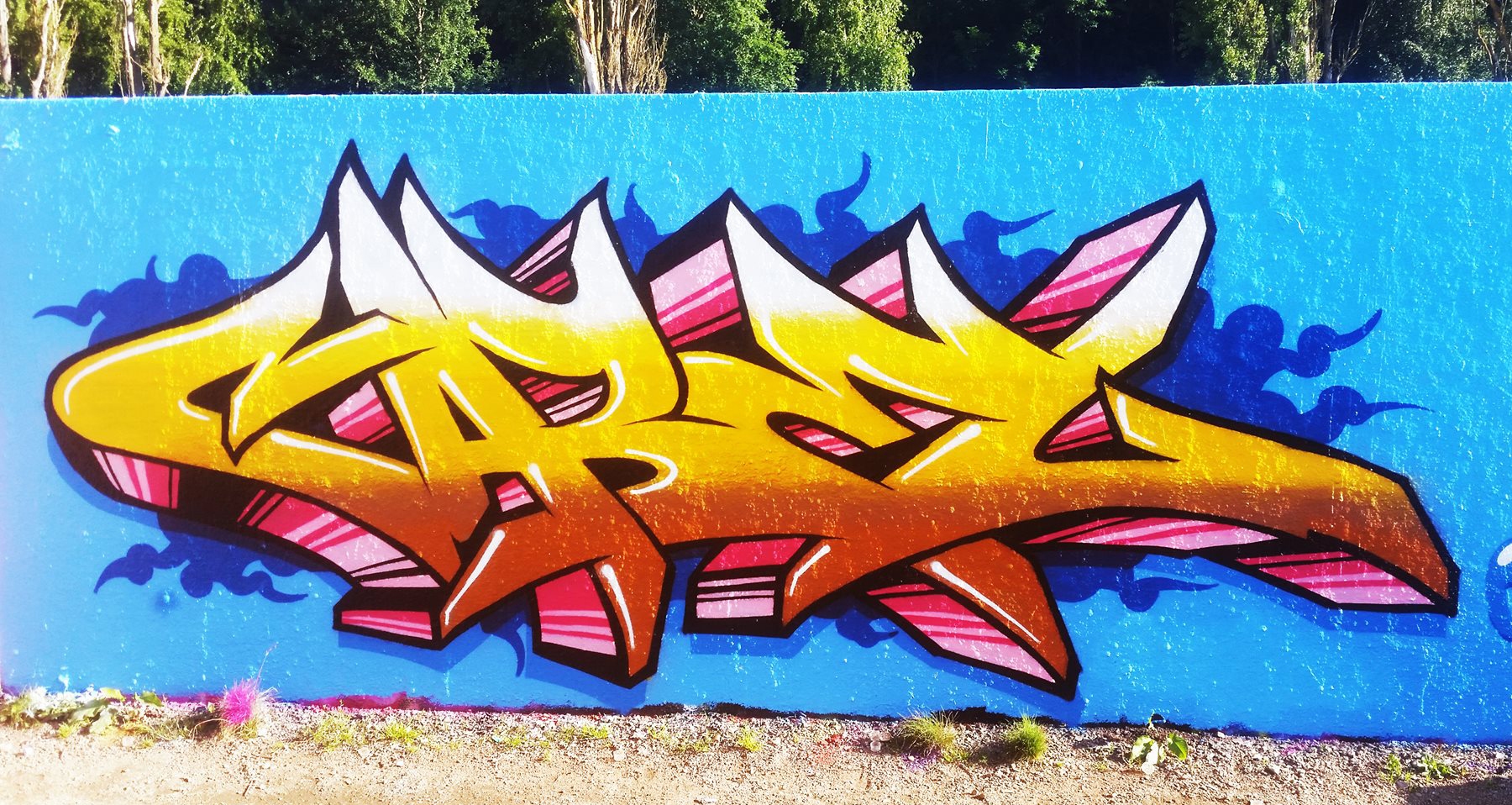

Together with many other artists and creatives from the Gothenburg scene, CABEL regularly organizes graffiti jams and urban art events. Workshops are held from members of the network, communication takes place with the municipality and also in a supportive way with the new generations, true to the motto “Each One Teach One”. CABEL runs as well the magazine and online archive GBG GRAFF with the help of several other local artists and documenters. Meanwhile they constructed a huge graffiti database with photos from decades ago and it is definitely an awesome platform which provides information on urban art from all over Gothenburg. They have even footage from the beginnings in the 80s and 90s, also a lot of new photos from today, plus the latest news on upcoming events, jams and creative happenings.

During a visit to Gothenburg, we had the honor of CABEL and TONY B showing us the Secret Underground Hall of Fame. A truly fantastic and magical place with wonderful masterpieces in the dark, we had goosebumps all the time! It’s just a breathtaking urban art museum hidden deep underground. After this graffiti tour we did an interview with CABEL and talked with him about his graffiti art and his projects. Those who prefer to listen can click on the podcast below. For the readers, the conversation is transcribed in the following. Inbetween covered with numerous photos of the fantastic artworks made by CABEL.
You are a typical graffiti artist and you do the proper graffiti with the lettering like CABLE, but in all kind of variations. All kind of letter styles, but only rarely characters.
I started with writing the traditional letters and then in later years, I tried also super realism and cartoon characters, too. So I tried to learn everything what I found interesting. I tried to learn how to do it, so then I could leave it and move on. I just want to be able to know I can do it. So I tried different styles, and I can do an abstract or characters too. But, I don’t have a specific topic. I got my own style, but I shift my style all the time because I think it’s fun to have changes while using paint.
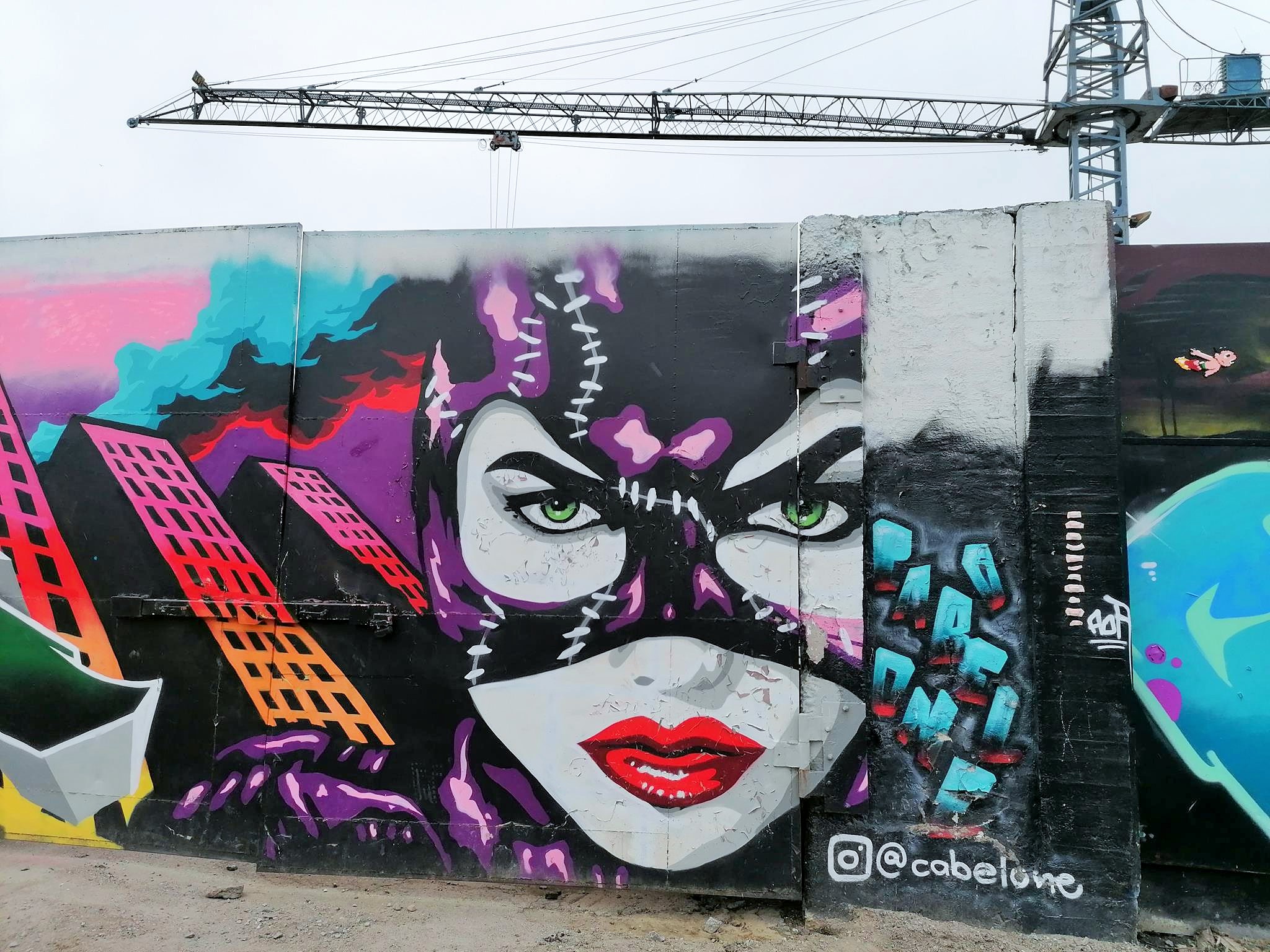
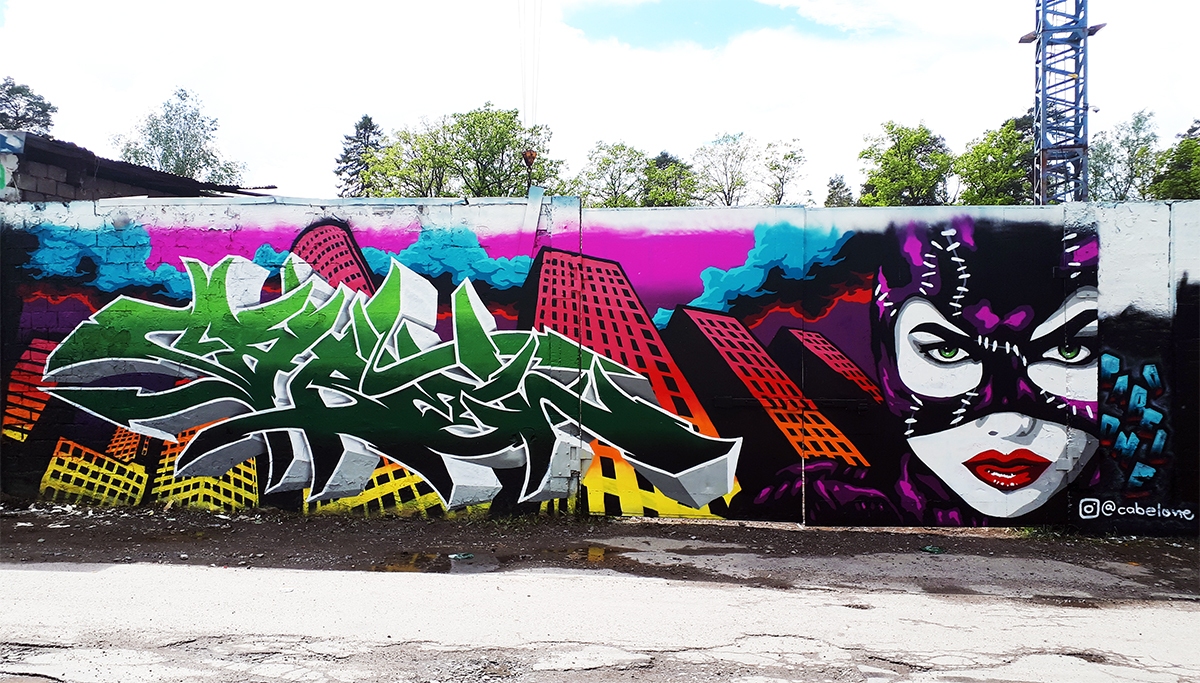
When did you start doing graffiti and how did it come that you wanted to be with the spray can?
I started in 2000 when I moved to Gothenburg again. I was born in Gothenburg, but I moved out and then I came back in 2000. At that time I met a guy, who was a graffiti painter. I always loved to draw, and I always loved to paint, and I wanted to try this “graffiti”. He helped me and gave me advice. We went out, we got spray cans and we started painting. And yes, it was like… shit. But I remember it was really, really fun. But fortunately you evolve very fast in graffiti. So I was hooked from the beginning. And then I kept on going over the years, sometimes more, sometimes less. But always still going, yeah.
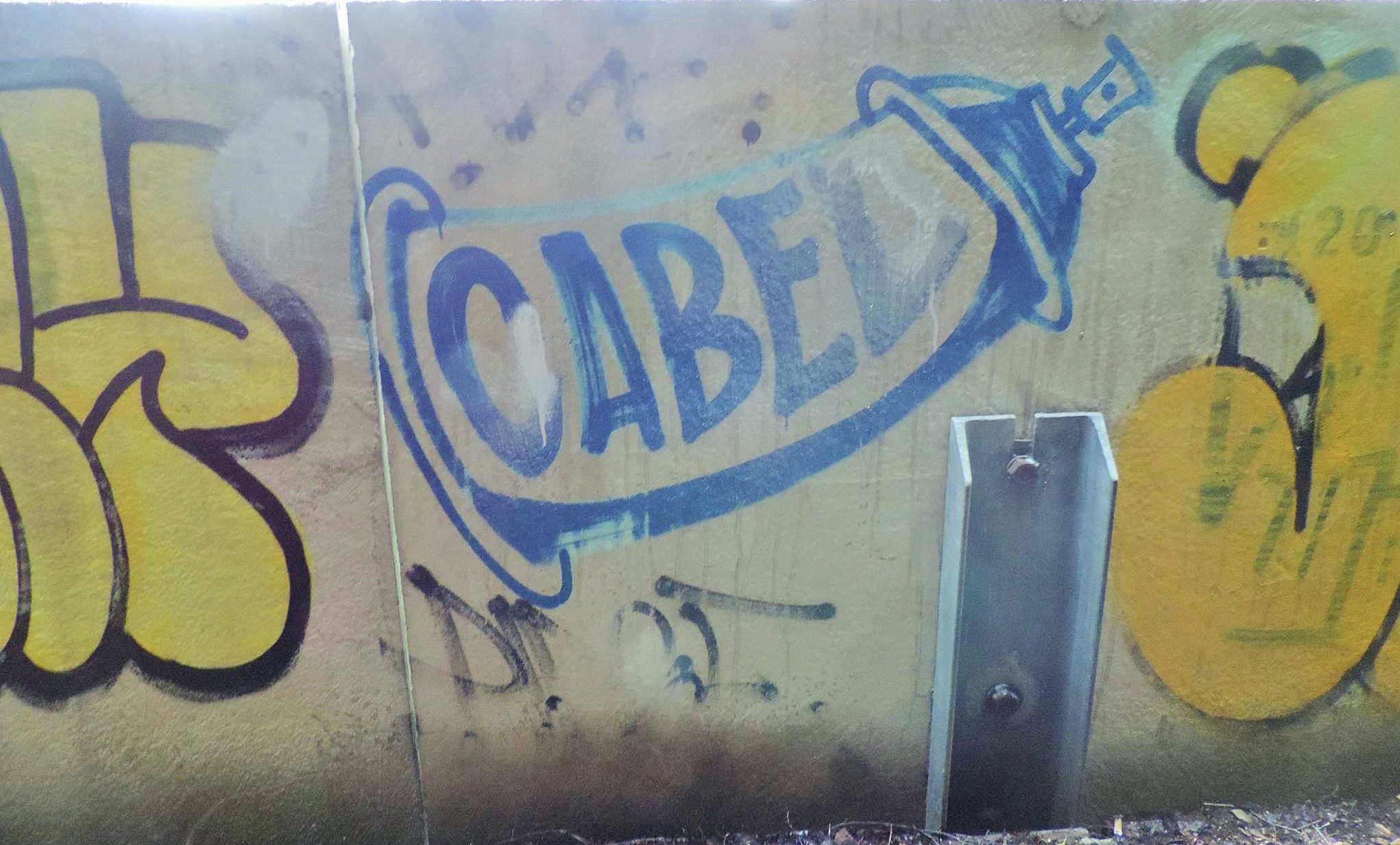
Meanwhile, you’re not only painting yourself, you’re also running this GBG Graff online magazine where you also show artworks from other graffiti artists. I was really impressed when I looked on the website because you have stuff and artworks from like back from the days, from the 90s and even from 1989. So you’re also very into the history of Gothenburg graffiti.
Yes, I’m a very analytic person and I always love to know about the culture behind what I’m doing. Graffiti is an underground culture, so you have to be a little bit nerd to understand it. And there were some guys in Gothenburg who did photographs of graffiti, and they posted it on some free blogs. They filled it up, but then they moved to a next blog, and they filled it up again and moved to the next and so on. But then they got bored in doing that and moved on with their lives. Me and some friends like TONY B, SAGIE, PUNTA and some other guys, we made graffiti jams together. We also went to other jams together and we said, it’s such a good community around this culture. So maybe we should give something back and try to build a community for only the scene in Gothenburg. Because we always move to other cities to go on jams. Why can’t we have a big jam in our town? Yes, exactly! So we tried it out. We talked it over and we talked to the guys who have done the photo blogs before. And we asked, if they still got the pictures and all the stuff. And they said yes, we can have it. So we also got the name from them. It was always popular and the people always saw it when they have posted something on Instagram. So it was already a known name in the Gothenburg scene and we kept that name. We built a website and try now to repost all the old stuff, and also we’re adding new stuff. The website gets filled with material, interviews and videos. And we also organize jams and festivals now. We are into that culture and we want to give something back to the culture, because it’s important.
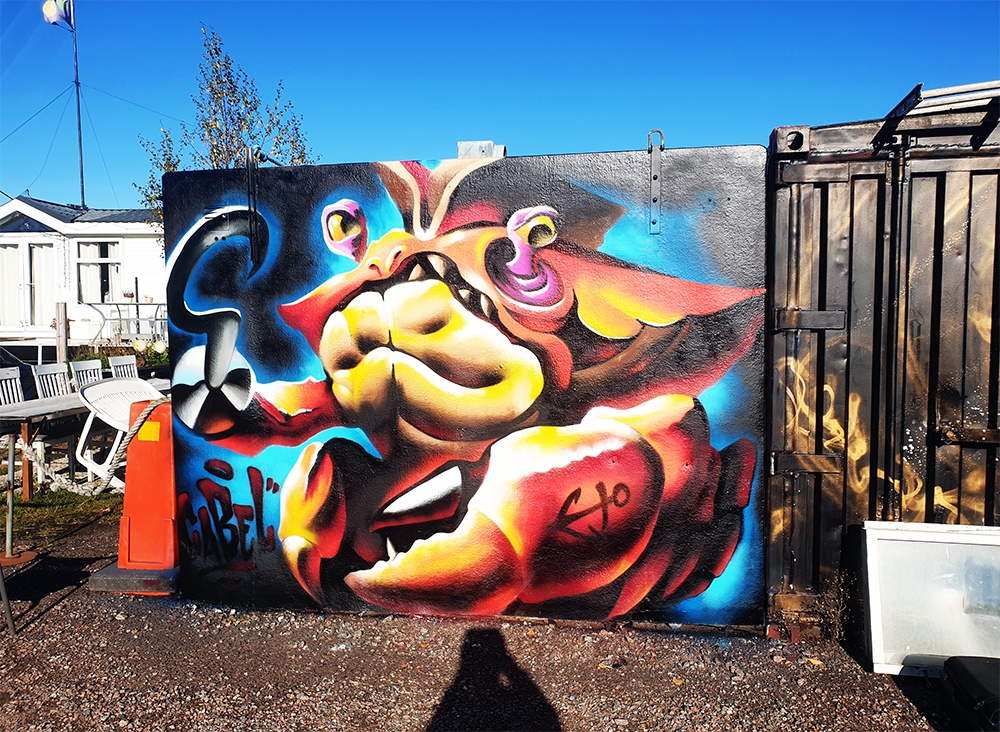

On the website you have a graphic which shows how many pics are already online. And before you said there was this one guy who just came to you with his hard drive with 18,000 photos. So you’re still in the editing process and there is still a lot of footage to come. People should keep on checking the website www.gbggraff.se because constantly there is really a lot of new stuff coming.
Yes, we don’t taking pictures by our own yet, but we think we’re going to do it soon. We take pictures on the jams of course and of stuff we do during the years. But first we try to put up all the old photos we got from the hard drives. We got 18,000 photos and now we also even tag them with names. So you can search for year and artist. If we can recognize the artist, then tag the photo with the name, so you can search for it. If you have done something before 1997, you can maybe find it that way. It’s like an archive.
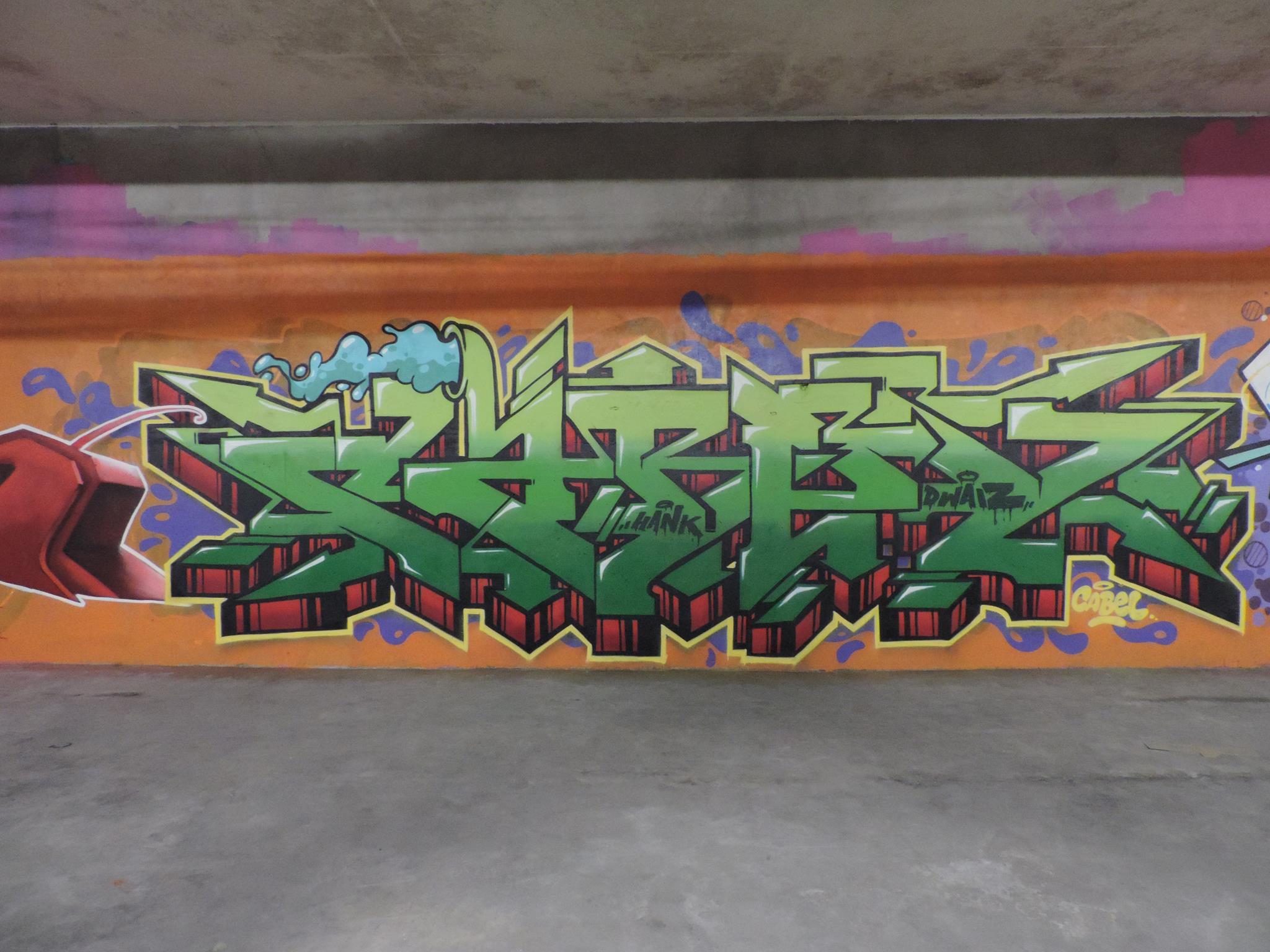
For everybody from Gothenburg or people who ever painted here and have photo footage, they can send it to you. So listeners or readers, you can send your old photos from Gotheburg to GBG Graff and they will add it to this huge growing archive.
Absolutely. Maybe in the future we’re going to build like a modular so you can upload your photos yourself. And with a tool so you can tag them before. And then they go straight to the homepage. If we are able to we are going to do it.
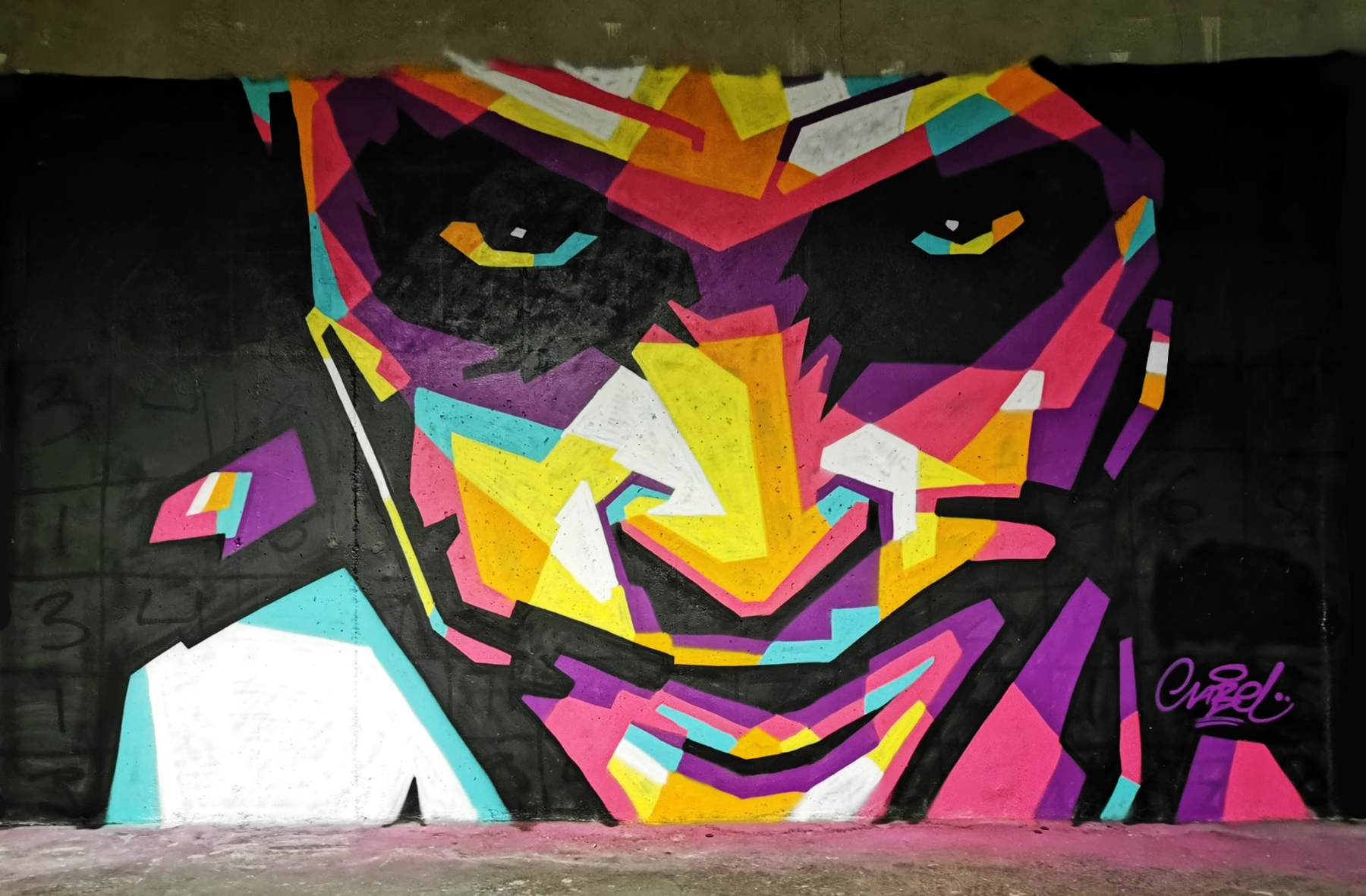
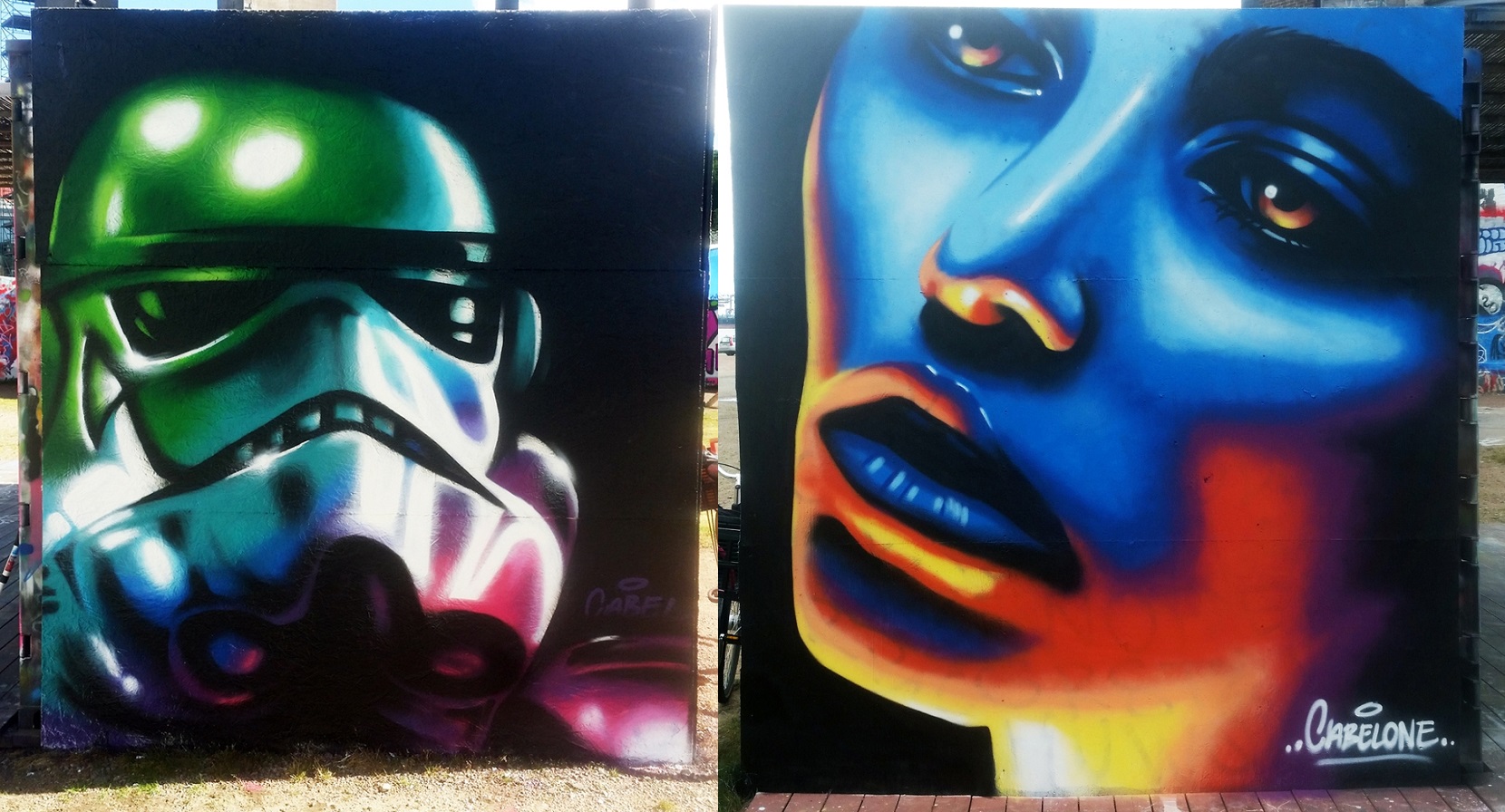
You said you started in 2000. There was a period before when it started in Gothenburg with graffiti in the beginning. And after time it was really a lot everywhere. But then the politicians of the government which was in power at that time, they decided they decided, that they don’t want to have this anymore and went radically 100% against it. So then the time of the “Zero Tolerance” came. When exactly was this? Have you been into this period and how was that for you?
Yes, I remember when I started painting, it was still a lot of bombing around. There were still a lot of pieces on the trams and on all the walls. You could find tags everywhere. And of course after a while it was a problem because it was so much. New crews popped up and they bombed like crazy. People started to get really mad. Also it cost a lot of money for the city. And there was the same in Stockholm, the capital of Sweden. They looked at the American government and what they have done in the US, because there was this “Broken Window Theory”. Someone came up with it. If you break a window, you have to fix it immediately. Then there were will be no broken windows. And if you don’t there will be broken windows all over. But that is bullshit and the theory doesn’t work. Actually those professors have been proven wrong. The whole theory has been proven wrong now many times. But at that time the Swedish government tried to copy that and called it “Zero Tolerance”. If you see something painted you have to remove it immediately. And they didn’t care if it was a tag or it was a piece or if it was an artwork. They had big events in Stockholm only closed for artists, and the police came and shot them down. They said it is permitted, you cannot show graffiti here. It’s not tolerated in the in the city. During that years, it was really crazy. There were also guards and observation and all that stuff. There were fights with the guards and the artists, some of them lead to big trials against the guards. It was really crazy for a while in Gothenburg. It was very bad here, but in Stockholm it was even worse. Gangs came out and started fighting the guards. They followed them from work to their homes and they were sitting out, waiting for them and beat them up. There was a lot of fighting and chaos. Many big fights with the police and the guards.
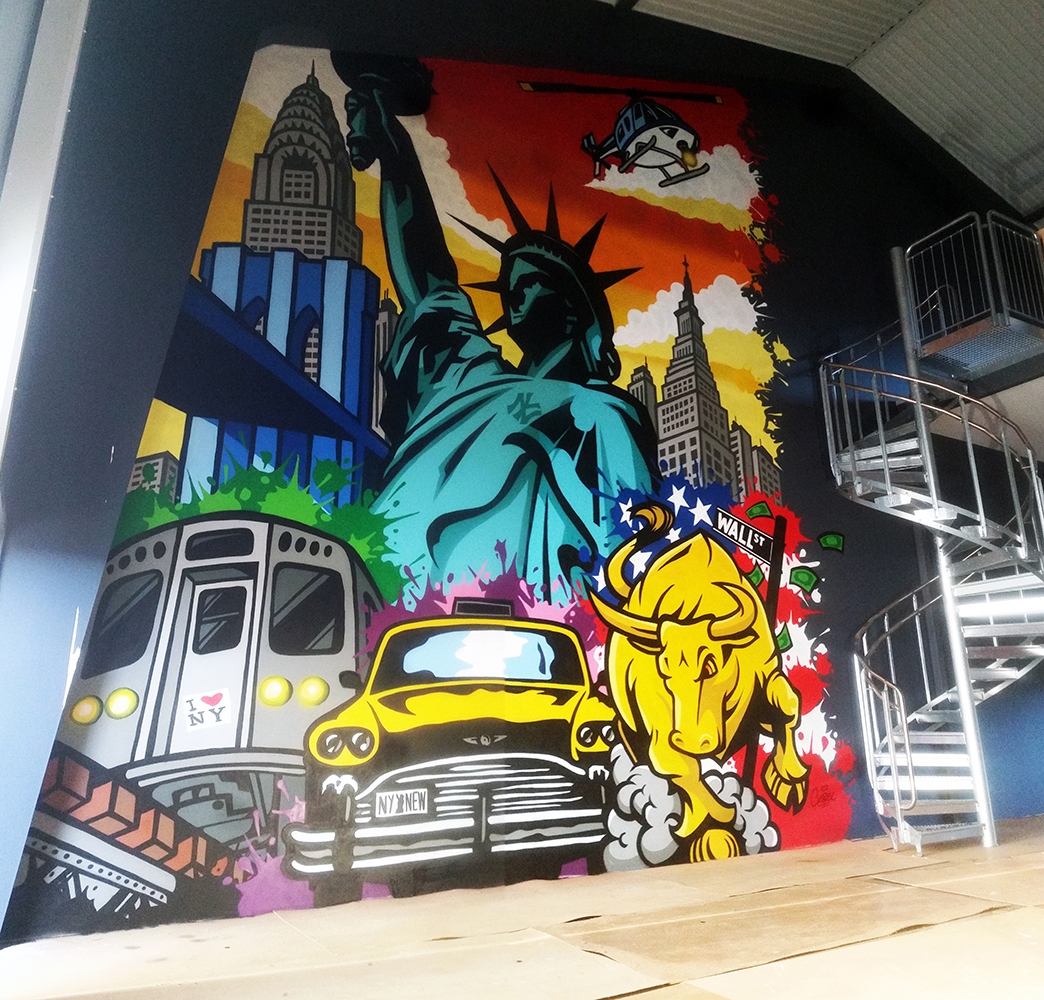

So how did it develop then? They realized that this is maybe not the way and thought they should maybe find some different solution?
Yes, but there was also a shift with the political situations in Sweden. That was still a crazy time. It was not only about the graffiti situation, it was also chaotic with finances and other topics too. One political party build up an idea and then another one tore it down. They build then again something else, but again another one put it down again and changed it. But why do you have to invent the wheel one more time to prove the new generation wrong. Why? They already did it wrong in the first place in New York. So all that was like shifting times here in Sweden. But the positive out of that is, now we have real evidence that this does not work. And now it’s turned to the other side and it gets more tolerated. Definitely it would be harder now for them to get back to “Zero Tolerance”.
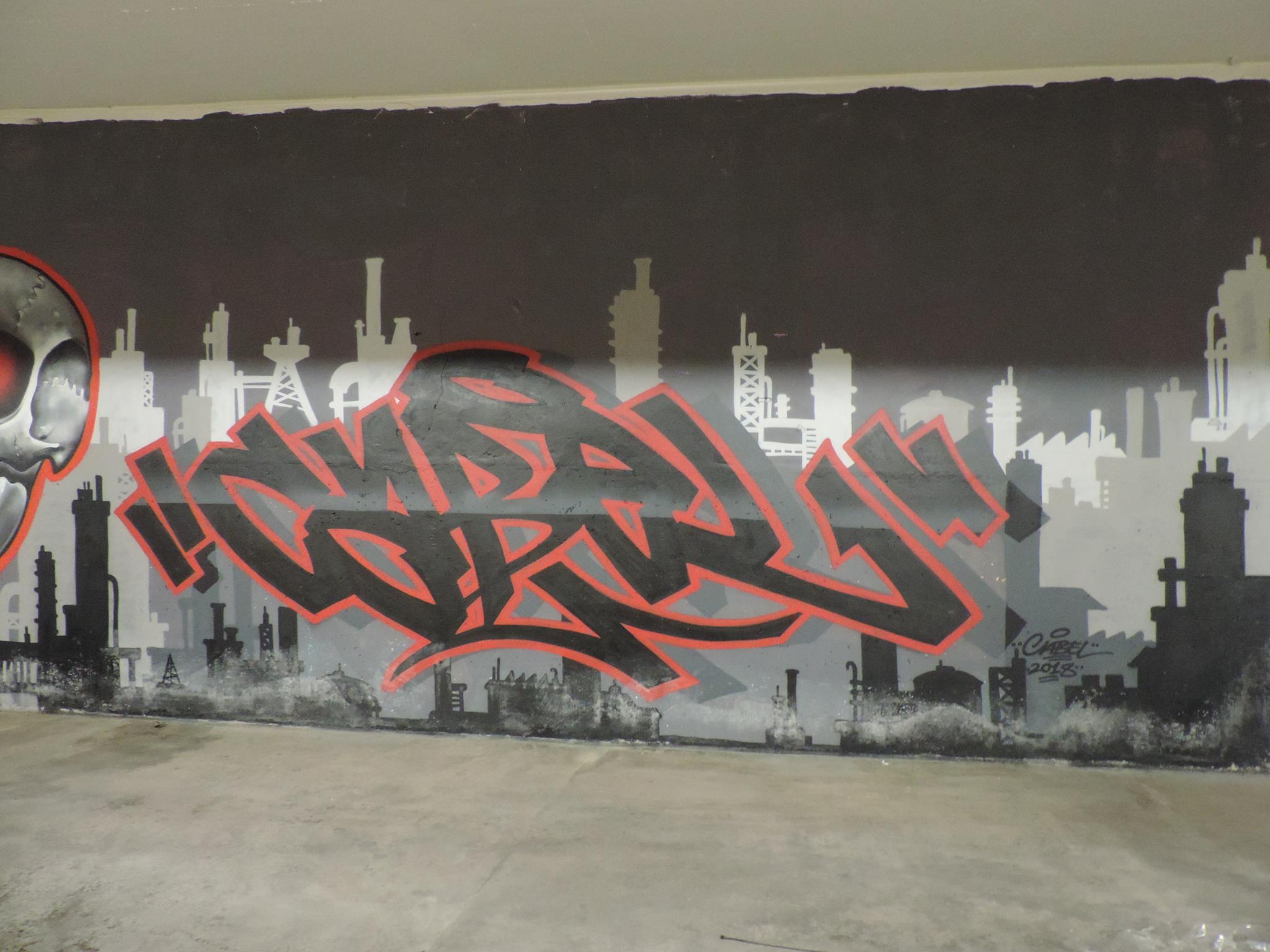
The one way didn’t work and now they see that with other ideas there are a lot more positive effects coming out of that.
Yes. Repression always leads to opposition. Opposition and fighting. And it’s never a good solution to repress anything. You have to try to understand it. And even if you don’t understand it, you have to try it. So yes, I think it’s better now. It’s much better now. You can have discussion with the politicians and the city owners. Yes, today you can have a normal discussion about it. Before, everything was just trash. Are you a vandal? Or a terrorist? It was like they just put a terrorist sign over your head.
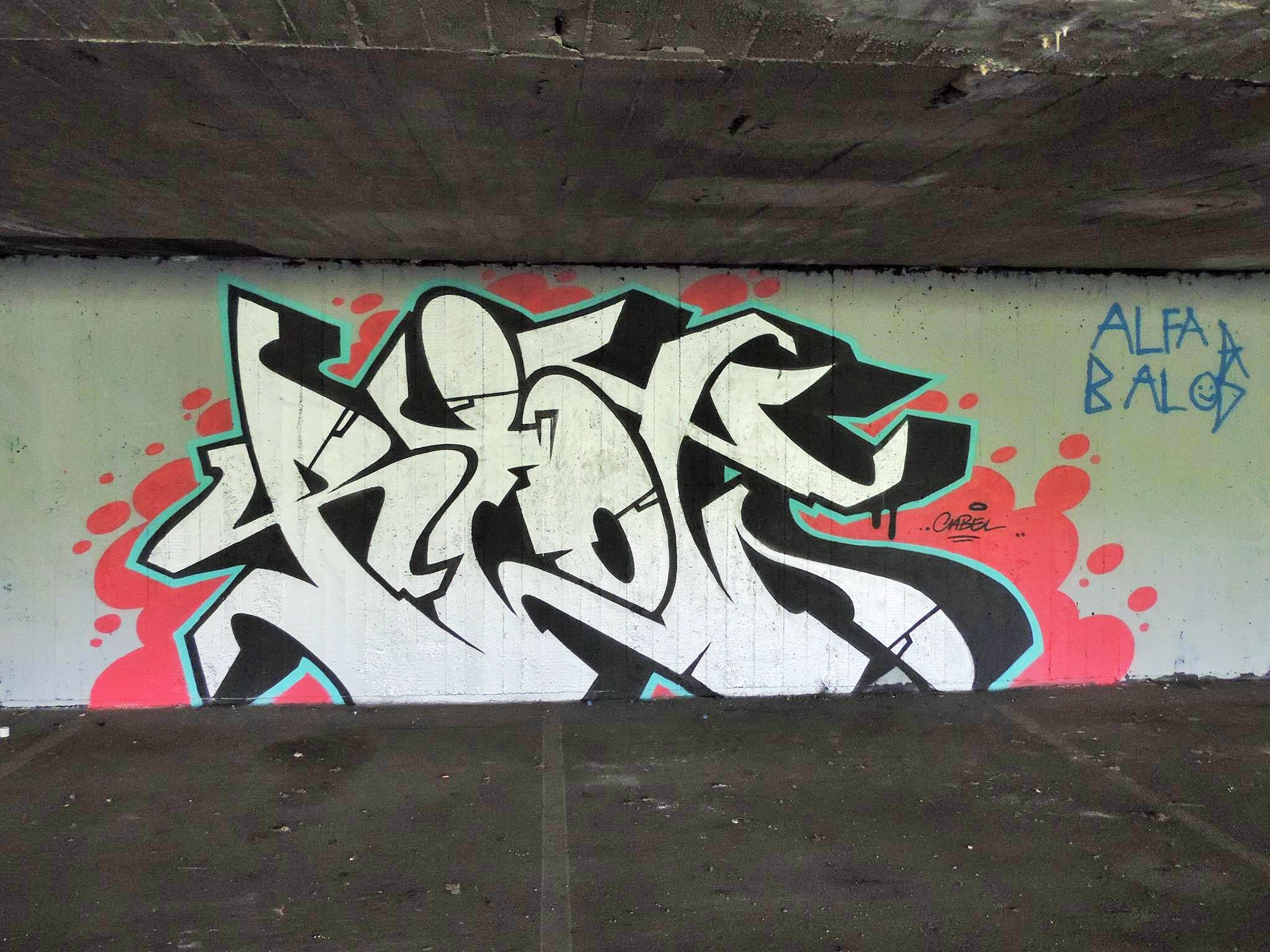
You are a graffiti writer and it’s about writing the letters and writing your name. What is your perception of the many other new types of art which evolved, like the characters or the stencils, or paste ups and streetart graphics and all those other things? Is this all graffiti or graffiti only the letter art?
It’s a hard line to draw because you can never say exactly what is graffiti. But for me, when I say graffiti, then graffiti is lettering. Or evolved from lettering. You start writing your name and you evolve from that to be a part of the underground culture of graffiti. But I don’t separate people from people. For me, I think some artists who are spray can artists or spray paint artists can be better than graffiti writers. So I don’t care what you are, but I think it’s like a problem with the definitions, especially for the politicians. They call everything street art. So if you do a tag, you are a street artist. Or if you put up something like an art projects, you are a street artist. As long as you’re part of the city, then it’s street art. And I think it’s more difficult to explain art if you involve graffiti, because for some people, graffiti has to be illegal. But I don’t, I don’t think so. But some people think you have to write on trains if you want to be a graffiti artist. I don’t write on trains, so I think it’s better to separate the definitions to understand, what we want to accomplish in the art. Especially if you want to see graffiti as an art form.
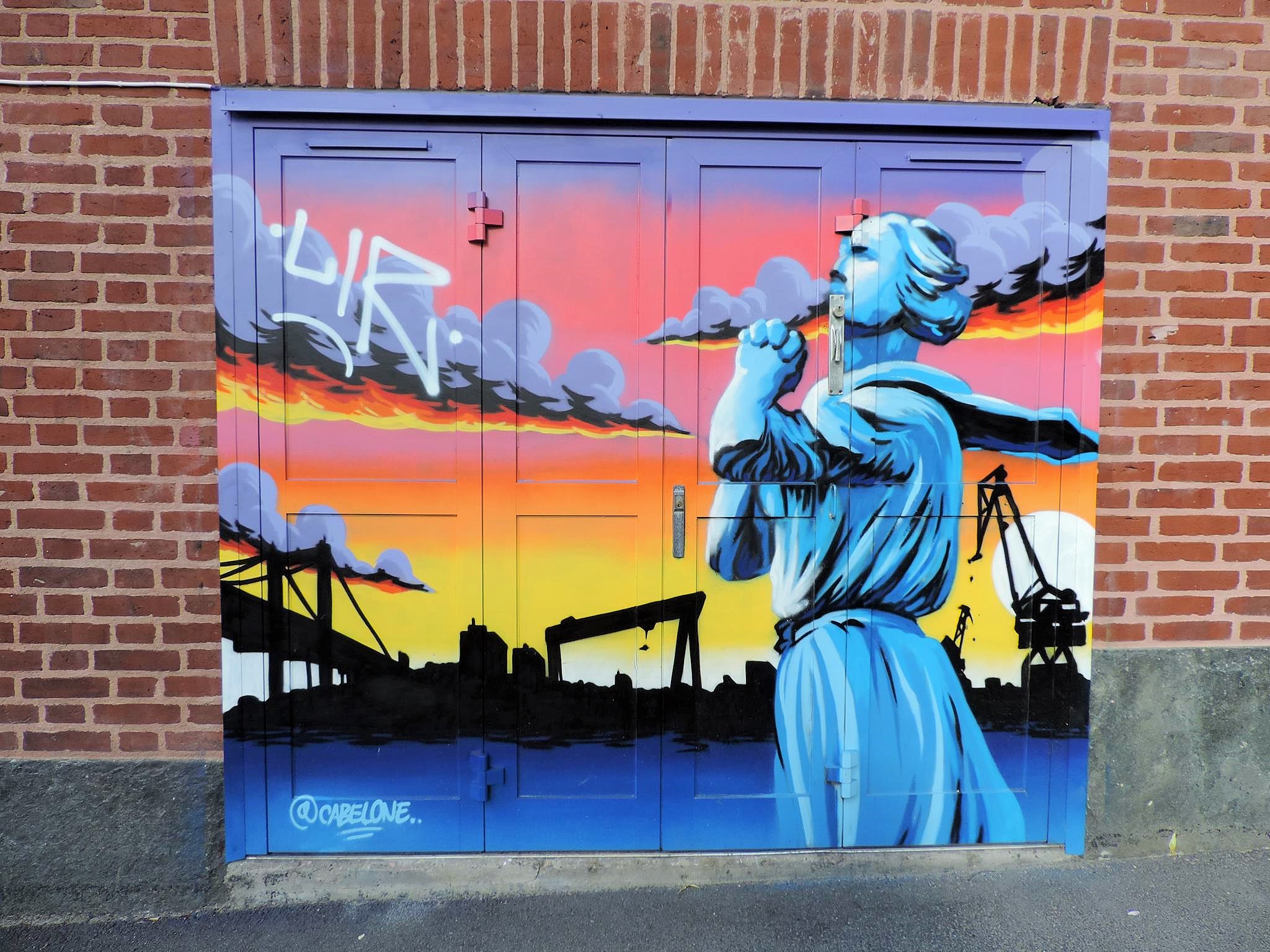

I think like you described also before, that you accept every kind of art. But the definitions are a bit more difficult. So if somebody paints graphic art like squares and formations, this is actually not really graffiti, so that would be streetart?
It is abstract spray. I think just for me, when I started, graffiti was lettering and there were people who did characters back then too, but they still started with lettering, and then they evolved to characters. And they can do like super realistic characters, but also they can do lettering. The can do like everything. And that is for me a complete graffiti artist. Through spray paint the users evolve to really good spray can artists.
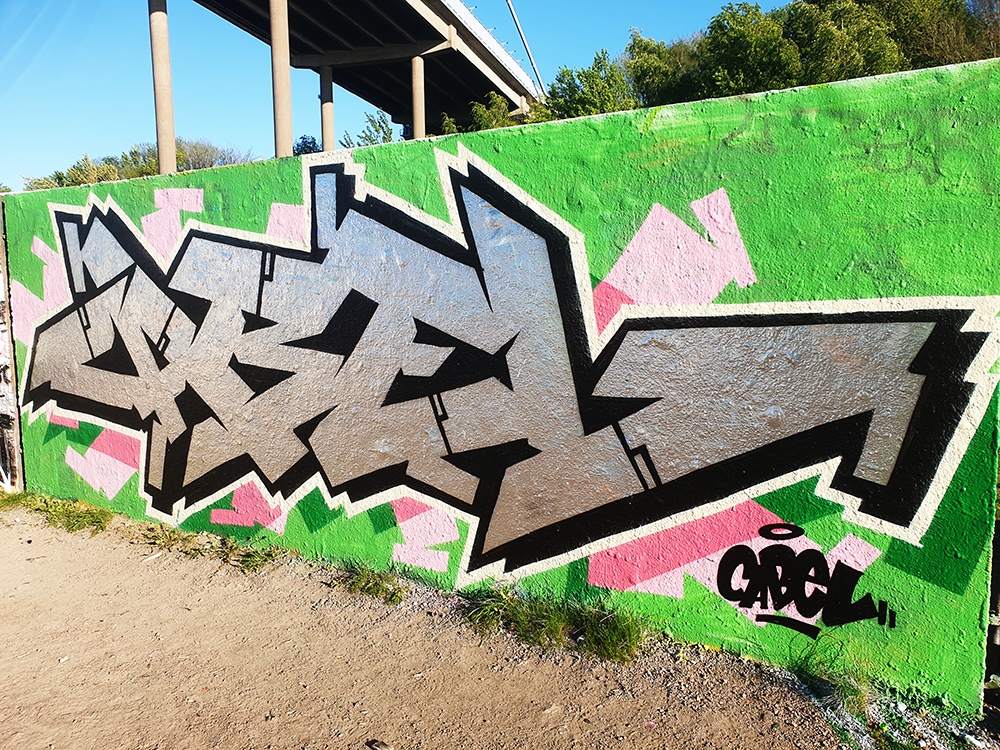
So when you do your artworks, you only use spray cans? Or do you also use other equipment or other instruments like brushes or pens?
When I do what I call graffiti, I only do it with spray paint, but I still like streetart too. I like posters, I like stickers, I even do melted beds sometimes because I like every way to express myself. It’s fun. And I don’t think I don’t care about the titles because I like every part of it, but I just I don’t like when people call something that’s not true, I can do. I can paint digitally illustrations to do home pages, and I did stickers for the football culture in Gothenburg, and I do merch and stuff back in the days, and I like to express myself in art, uh, but I always fall back to graffiti because I found out I like to think big. I think it’s something special to paint something big. If you do something on the canvas, you can do the same piece on the canvas and on the wall. But when you come to a wall, it’s always like, impressive because it’s so big.

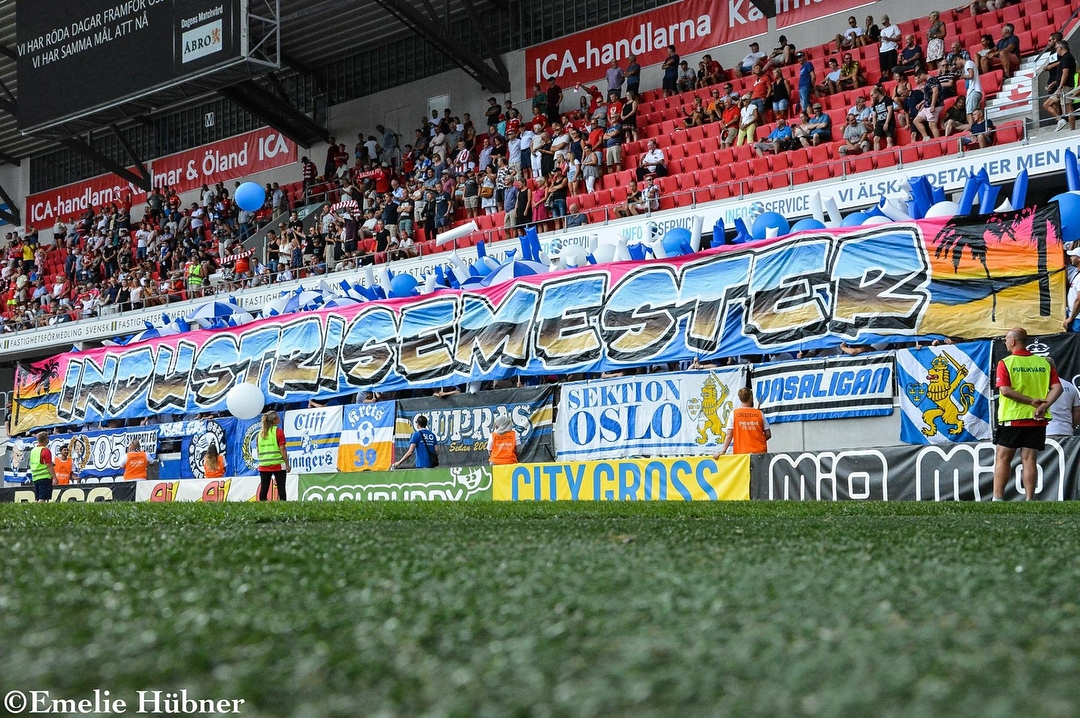
What was the biggest artwork you ever did?
Ok, the biggest artwork. I don’t think you can call it a wall. It’s like a football thing and it was more like a huge sail. Because I was involved in football culture, there for a game we did like sailcloth. And it was like 72 by 20 meters, it was huge. First I did a sketch up on the computer, then we did light it up with a projector on the sail parts and then we painted it with roller paint. But the size, it was like over a whole terrace. So that’s the biggest thing I was involved in. So I used my graffiti talent there too. So to say, that was the biggest thing I’ve ever done. But with graffiti, one wall was quite big. It was a commission work for the Westlink in Gothenburg, but it was nothing impressive. I had to fill up that money whole from the pandemic.
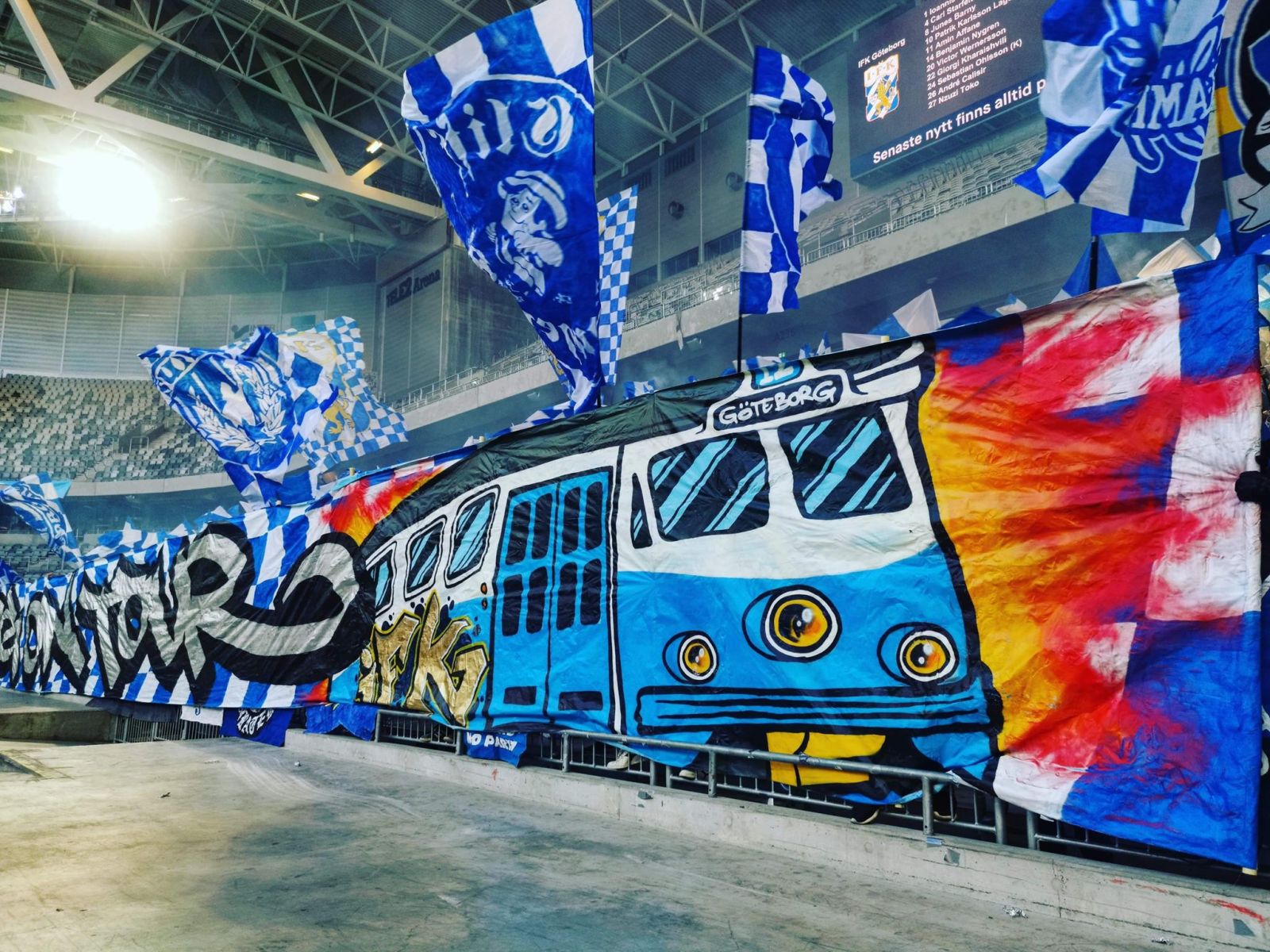
The canvas stuff, do you sell things? Can you make some money with it to get new paint and materials?
I’ll take some orders sometimes. Mostly from football people who like portraits of players and football stuff. I sold some few graffiti pieces on canvases, but I would like to sell more. Because it’s a good income for bigger artworks, and also it’s fun to do smaller artworks time by time.
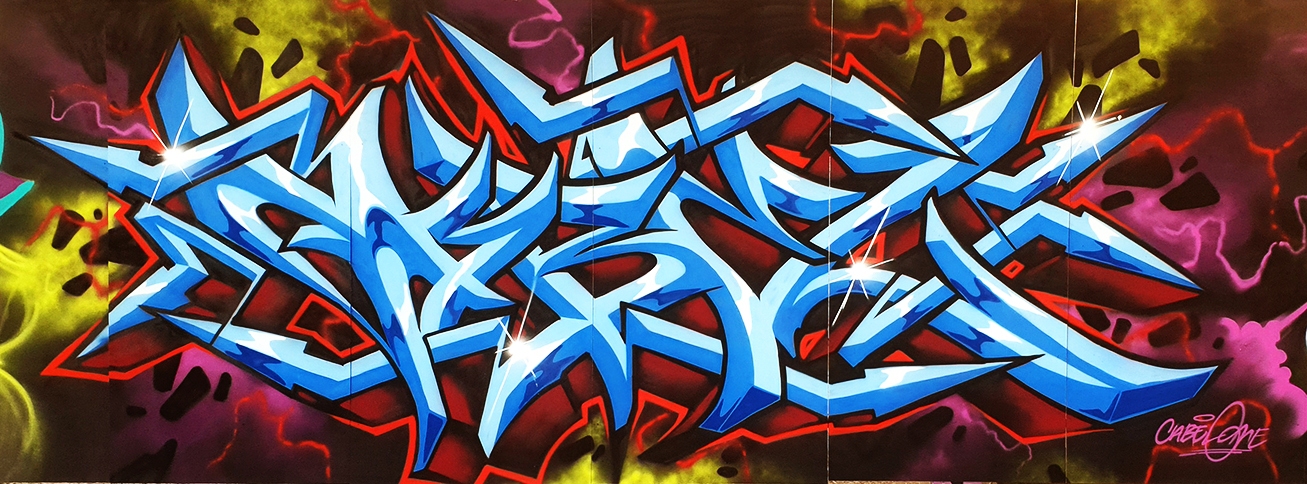
You painted a lot in Gothenburg. Where else?
I’ve been to Helsingborg and Stockholm. Several times to Malmo. One time I painted there with a football trip. I painted and did tagging in a lot in different cities. Mostly it was like football tagging. I’ve been around in the country and in other countries, also in Germany. I’ve been even painting one time bigger piece. On other places around Sweden, it has been mostly on open walls. I think all of the pieces are gone meanwhile. And it’s the same in Gothenburg. Some of my illegal pieces, maybe three are still around there left from the young days.
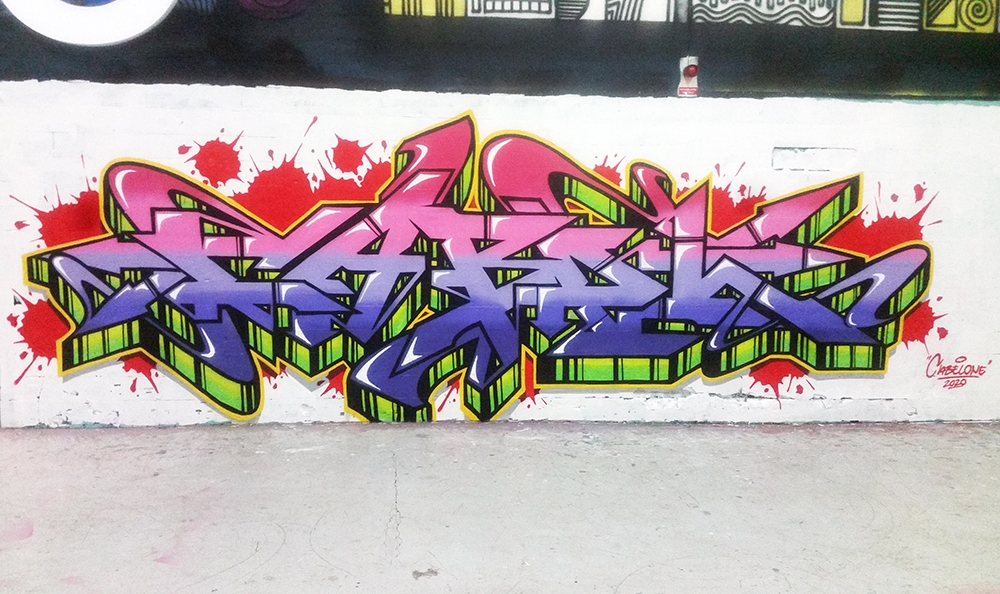
But there are also some true diamond pieces, which you did in the secret underground hall of fame. So there you painted a lot as well and you created really interesting things and with different styles. So you’re also involved in this group around the Underground Hall of Fame?
Yeah. I got invited by SAGIE. I think we met at ‘Bad Coffee’ in Gothenburg and he contacted me and asked if I want to paint together with him. So we went to paint, also with his old girlfriend. He was a really nice person. And then I met his friend TONY B. And we hang out, we painted some time, and they showed me the Hall of Fame. And we have been there painting sometimes, so.
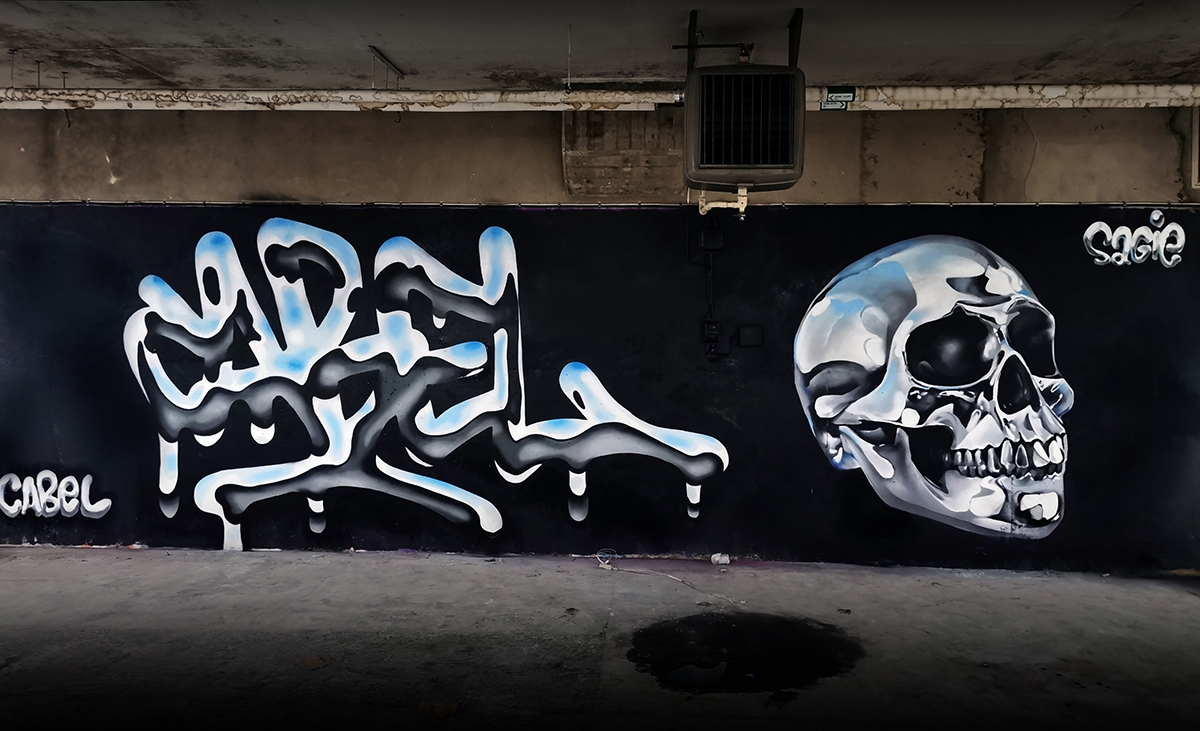
Before when we have been walking, we talked as well about crews. But then you said, you’re not really in a crew. You are more like a lonely wolf. You paint for yourself, but also quite often you do collaborations with others.
Actually I just paint. I love to paint with people because it’s more fun and you learn, but I don’t feel like I have to be part of a crew. There was a crew when I was young and we have been like crazy. We were just out-bombing everything. And it was really fun. But I don’t need that anymore in that way. If I want to paint, I can paint and I just go painting. I can call my friends and I ask them. Let’s paint! And we go. Or they call me. I don’t have a name for it. I think it’s more interesting for me to be involved in still being rough but at the same time making a bigger community out of the culture.
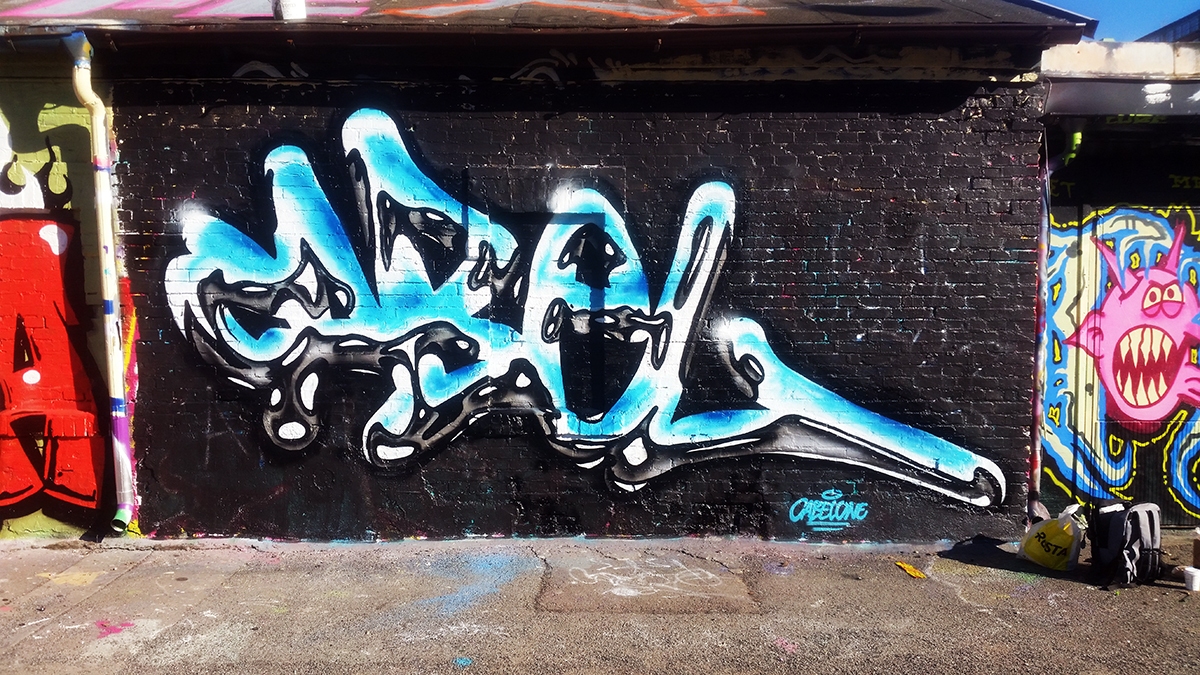
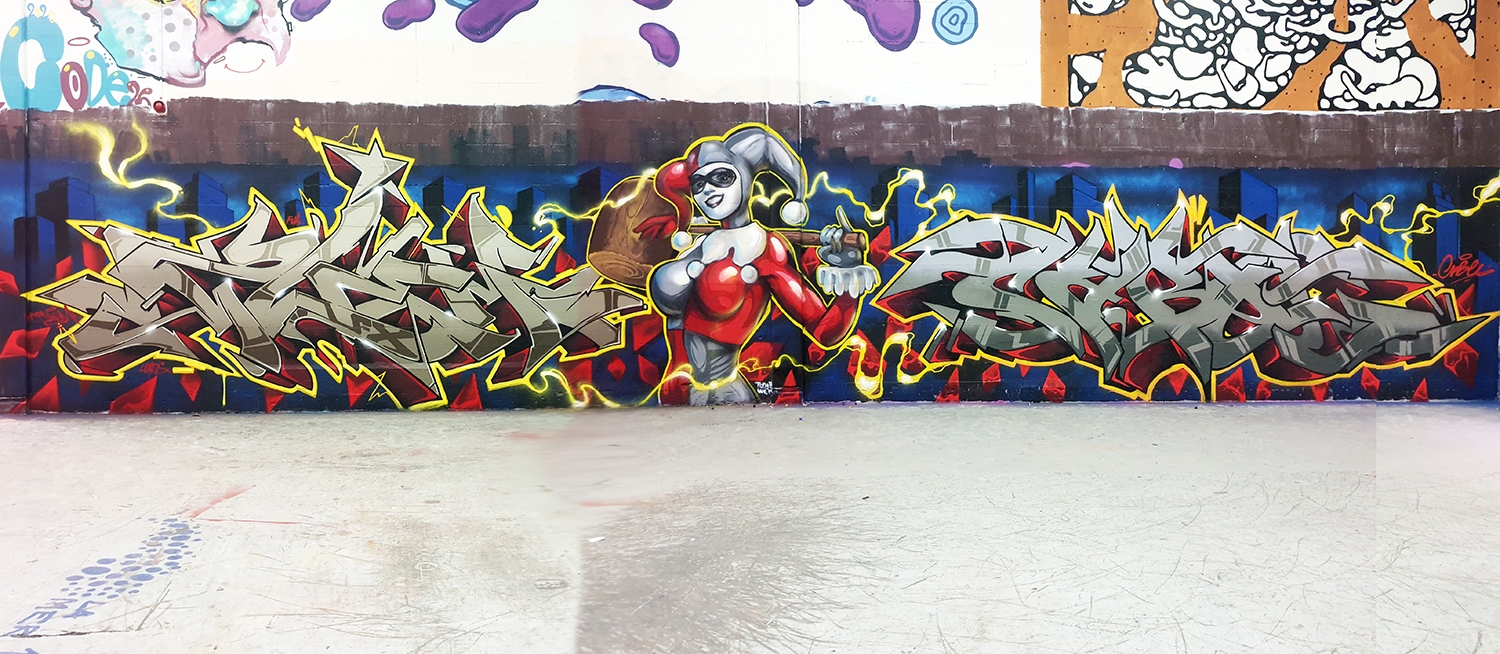
So your crew is the “Friends Crew”?
Yes, I think so. We hang out and we can drink beer and we can paint if we want to. So it’s the same thing.
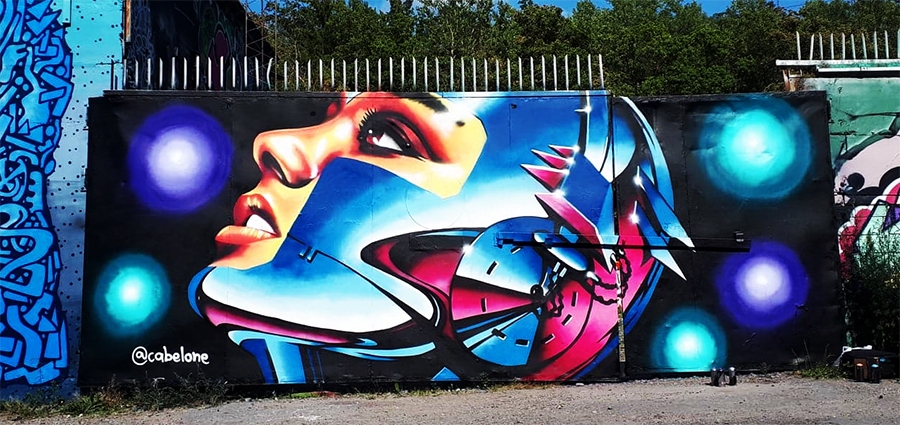
And when you are together with your friends and do stuff, you also developed new ideas more people. So meanwhile you’re also involved in events and jams, which you are helping to organize and you try to bring more of this kind into the city.
Yes. Like I said before, me and TONY B and PUNTA and SAGIE, we talked about a lot about it. It’s so nice to go on jams and you feel welcome and you meet people and you start to be part of a little bit of community when you do a jam. And we wanted to do that in Gothenburg as well. And tried and did a start. And it was cool! People started to talk to each other because everybody is doing the same thing. Questions came up like “Why can’t we plan it together or collaborate”. Those events, we started to do it and we started to build it up. Like a network of contacts and people who know stuff and do stuff. All the parts of the graffiti scene together. Actually it is also the place where I meet you right now. And we are doing the same thing now. We talk to each other about graffiti and discus creative ideas. I love that.
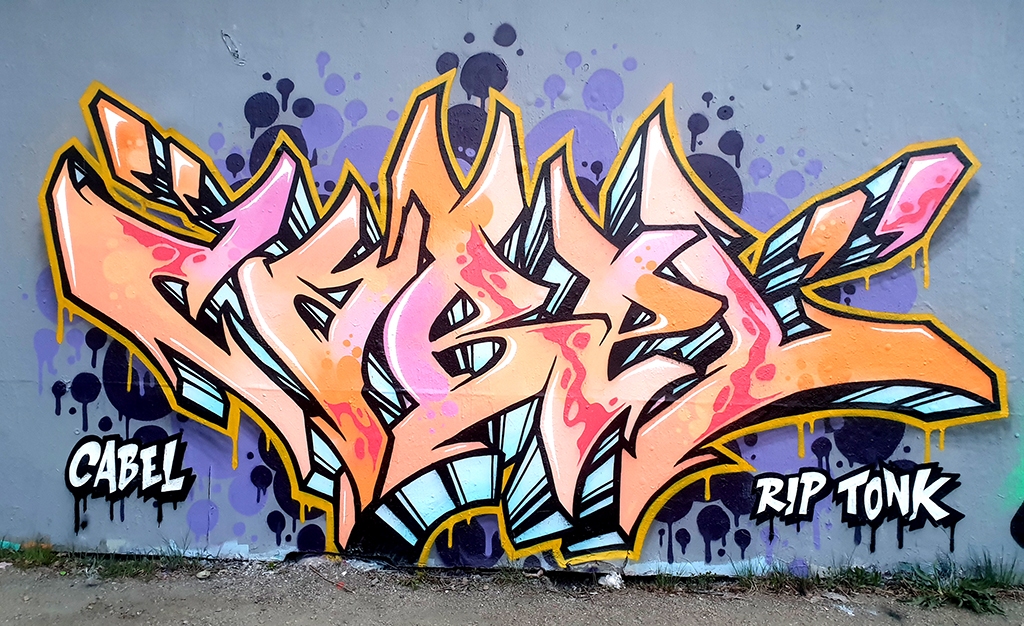
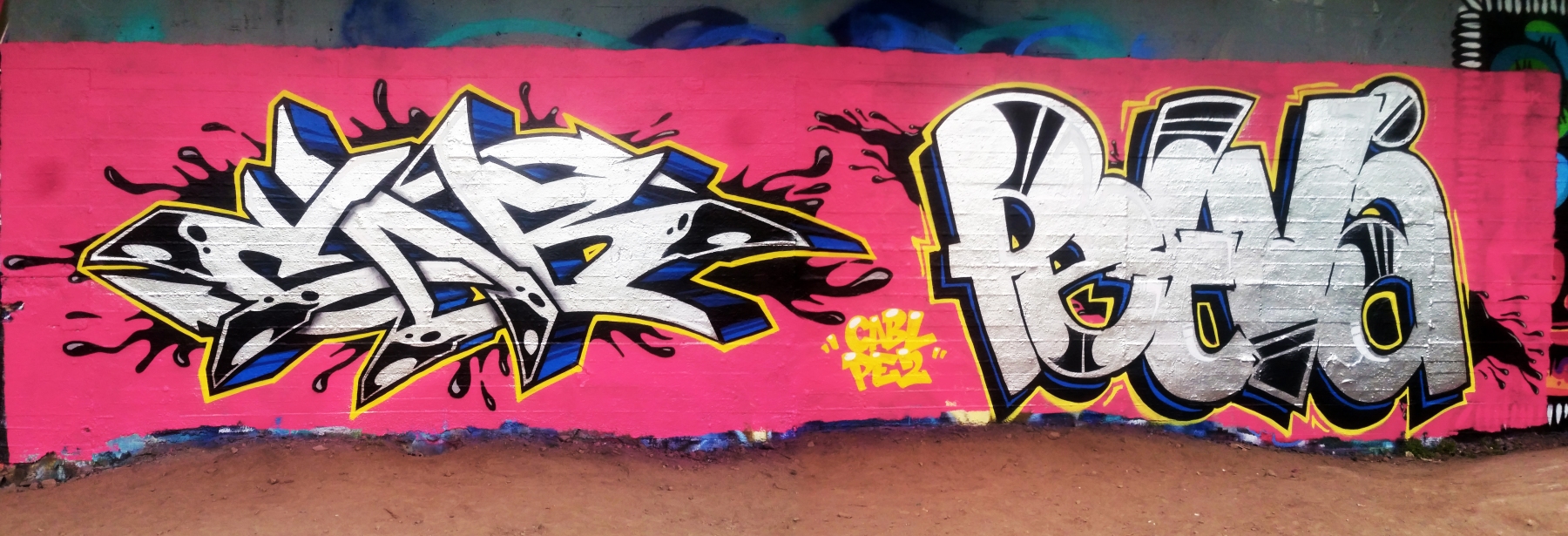
Like I said in the previous interview, when I spoke with TONY B, I made this comparison to artworks in a museum and how the artists behave there. And that they are maybe having an exhibition together, but they are not really doing it together. They are more selfish and and everybody is on his own. With the graffiti it is different. I’m traveling a lot, but it always happens when I go somewhere and I meet graffiti people. It is just immediately understanding of each other. You just have from the beginning this family feeling.
Yes, but I think it’s because when you start in a subculture, you go through a phase as a person always when you start. Because you have to find your identity and find a way to express yourself. And that’s the common thing about all the graffiti artists. We all have been there. Even if you do characters or you do lettering or do you do bombing, you always have done that process and you know it even if you don’t think about it. You always fall back to that. So when I see a graffiti artist, I immediately feel like I’m a part of his life because we both have been through that stuff. So you know from the beginning, oh, that’s my brother or that’s my sister. You don’t have to like the other person, but I can feel like I’m a part of the same culture. You can be an asshole. Or I can be an asshole. Doesn’t matter, but you still have some underlying respect. And I think if you are a normal artist, you try to do art, and then you try to be good and to sell and to live on it. And the graffiti artists don’t care about living on the art. They care about being seen. To like have.
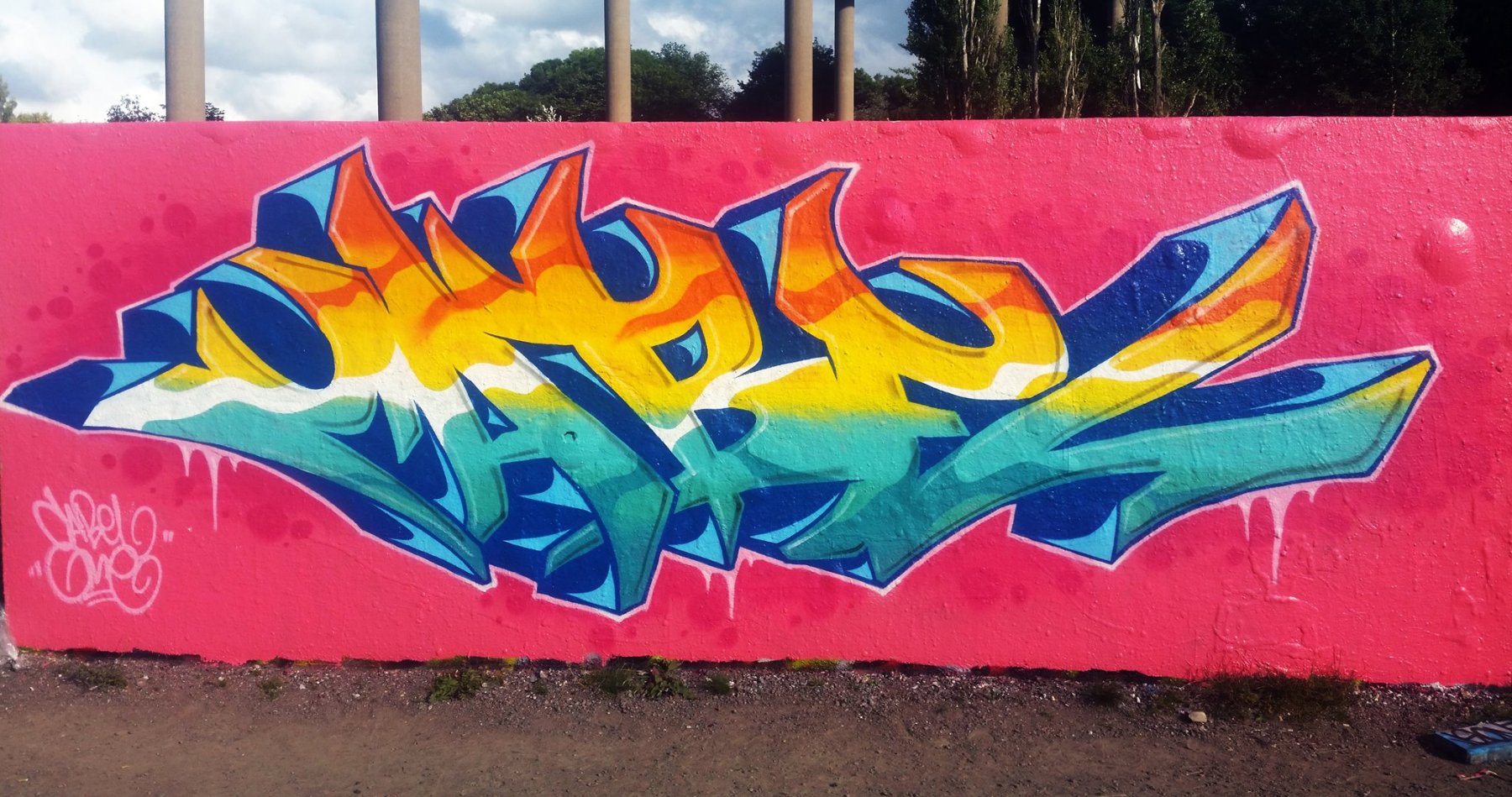
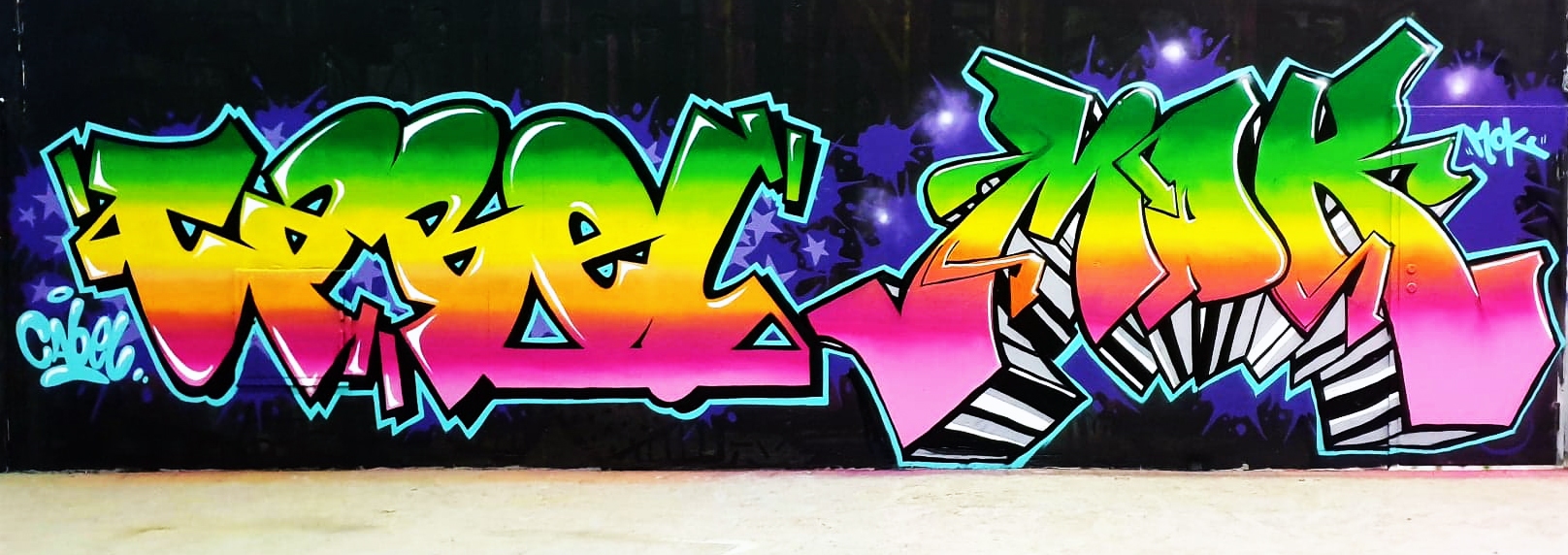
And it is more about just doing it and spraying the graffiti. You also mentioned the word respect, which I think is a very important concept. How do you think about this? And when you go on a wall, let’s say maybe a legal wall and there are a lot of artworks. How do you think about spraying on another person’s graffiti or crossing something?
It’s hard because it’s like we talked about before. There are different languages when we talk about art. Like with the open walls, that’s the correct name of it. Some people call it graffiti walls because it’s mostly graffiti writers who write on them. But it’s an open wall and everybody in the society should be able and have the possibility to write and paint. Even if you are just writing your favorite hardcore band or whatever. you should be able to write and to express yourself. But we have to find a way how to communicate between the writers and how we want the wall to be. So if you do a new piece, and you can’t paint better than the piece there before, then search for another part of the wall. We have to find a way to communicate because people from the new generation don’t know all that, so they fuck up all the time.
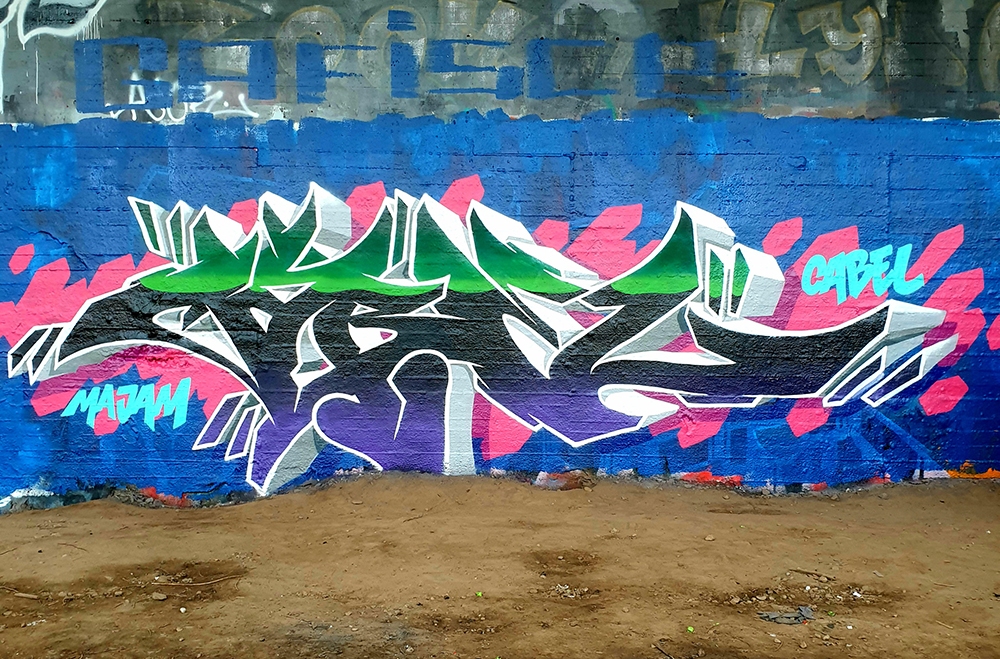
I’m sure you also know the concept of “each one teach one”. I think this is very important because it doesn’t matter if it’s art or basketball or being an engineer, it’s always the older ones, who have more wisdom and more experience. The new ones, they just don’t know yet and they have to learn. But like you as well, you learned as well from other older ones. So it’s also a mission to teach the younger and tell them what respect means in this area.
Yeah, I’ve talked about this many times last week, actually. I talked to another artist and he can’t understand why it becomes like this. And it’s really sad because there are good artists. Then you see them getting spit by from people who don’t understand that there is a hierarchy in the graffiti scene. Therefore people get mad and we shouldn’t be mad at each other. We should help each other out. At least we should try to if we see someone who doesn’t understand. We should try to talk to them and teach them, so they can learn how to behave and how it works.
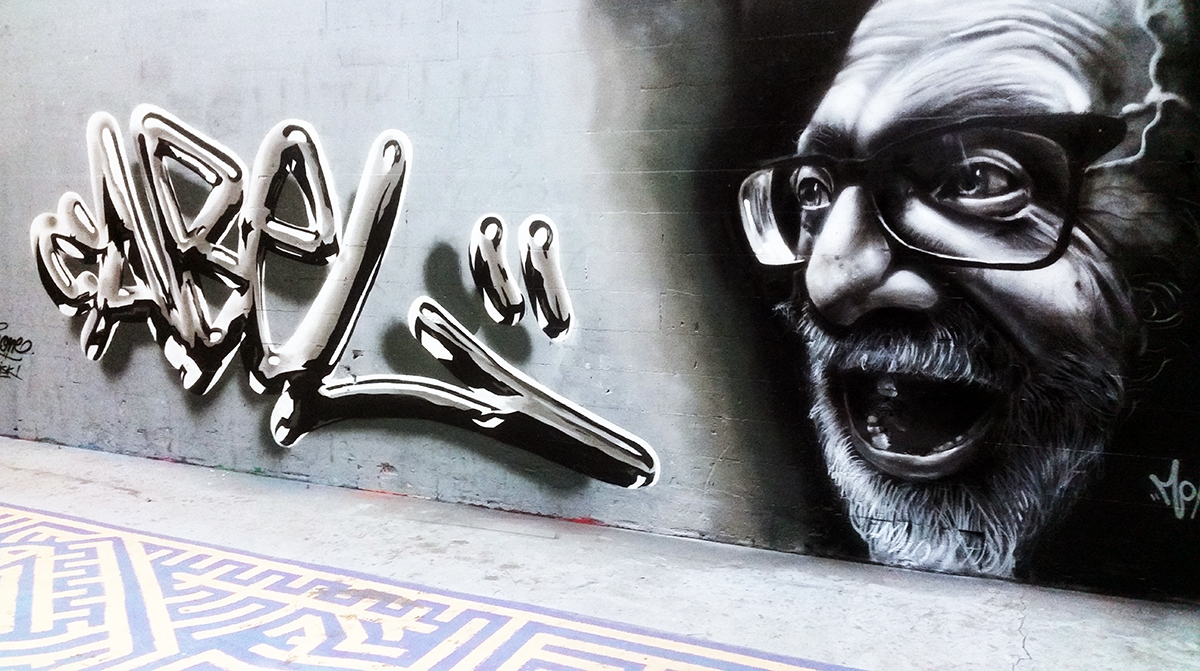
Besides the jams which you organize, do you also do workshops or do you have other projects with the youngsters? Or are there plans to do stuff like this?
We have people in the group who sit down quite a bit with workshops and children and stuff. I haven’t so much but I’m still open minded to it. I was contacted last week. I don’t know if I can do that work, because I have some other stuff to do now, but of course we take it with the group. If it’s interesting, if we feel like this can be a good way for the children and to communicate to the society, too, then w do it, of course. We always have like an open wall on the festivals so people can try out and we make sure you can buy color and test it. There are many parents there with their children for the first time, and it’s always the fathers who painted more than the children because they think it’s so fun. And a lot of the old schoolers, they are parents as well now and have own children. It’s the same here. I get a little one at home.
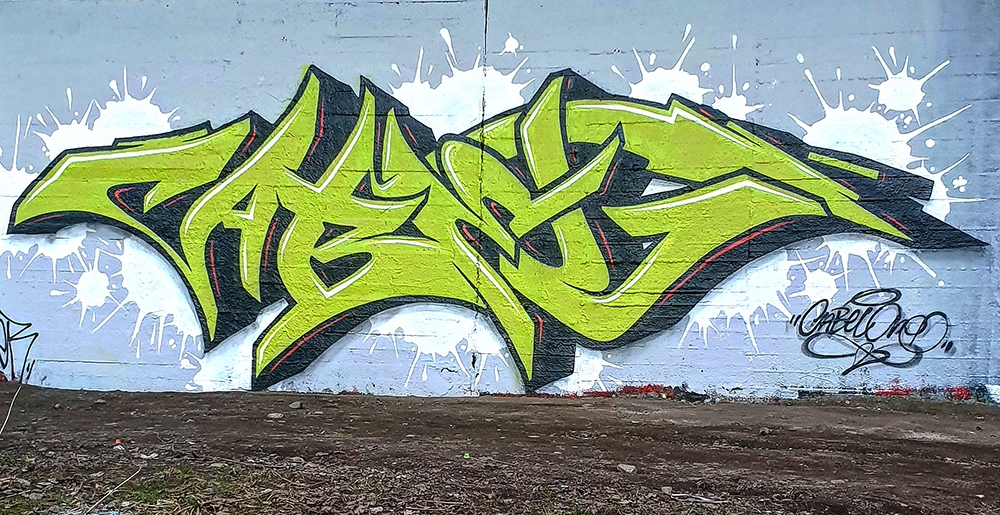
Is he painting already as well?
Yeah, he’s. He has been painting a little bit. He’s not like me when I was young, but he still likes to draw sometimes. He’s pretty good and in the start to get really good. Maybe one day even better than me. I hope so, because then we can battle.
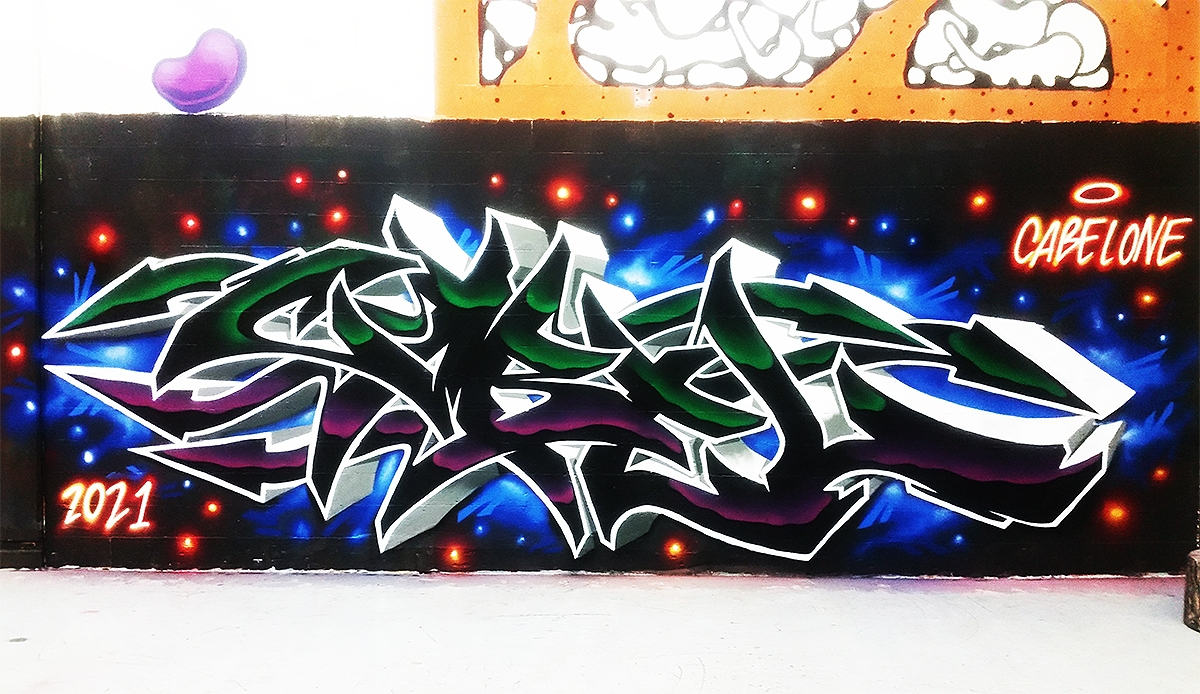
Yes, then you can battle. So the older ones have the wisdom, but the younger ones have the energy and also innovation.
There are funny times now because we have pretty many new writers in Gothenburg at the moment. Pretty young artists or some who newly started. And now we have this community and our communication platform, there we can take them under our wings directly. We organize the festival and invite to it, so they don’t have to do all the process we during our time. Because it’s hard. Some parts are good, some parts are bad. Maybe you should not be running around the yard when you like 12 years old. But you can do it when you’re 15 or 16. Then I don’t care, but not when you’re so young. So it’s nice to help and give them something. They get recognized by the elders and get their respect for what they do when they are young.
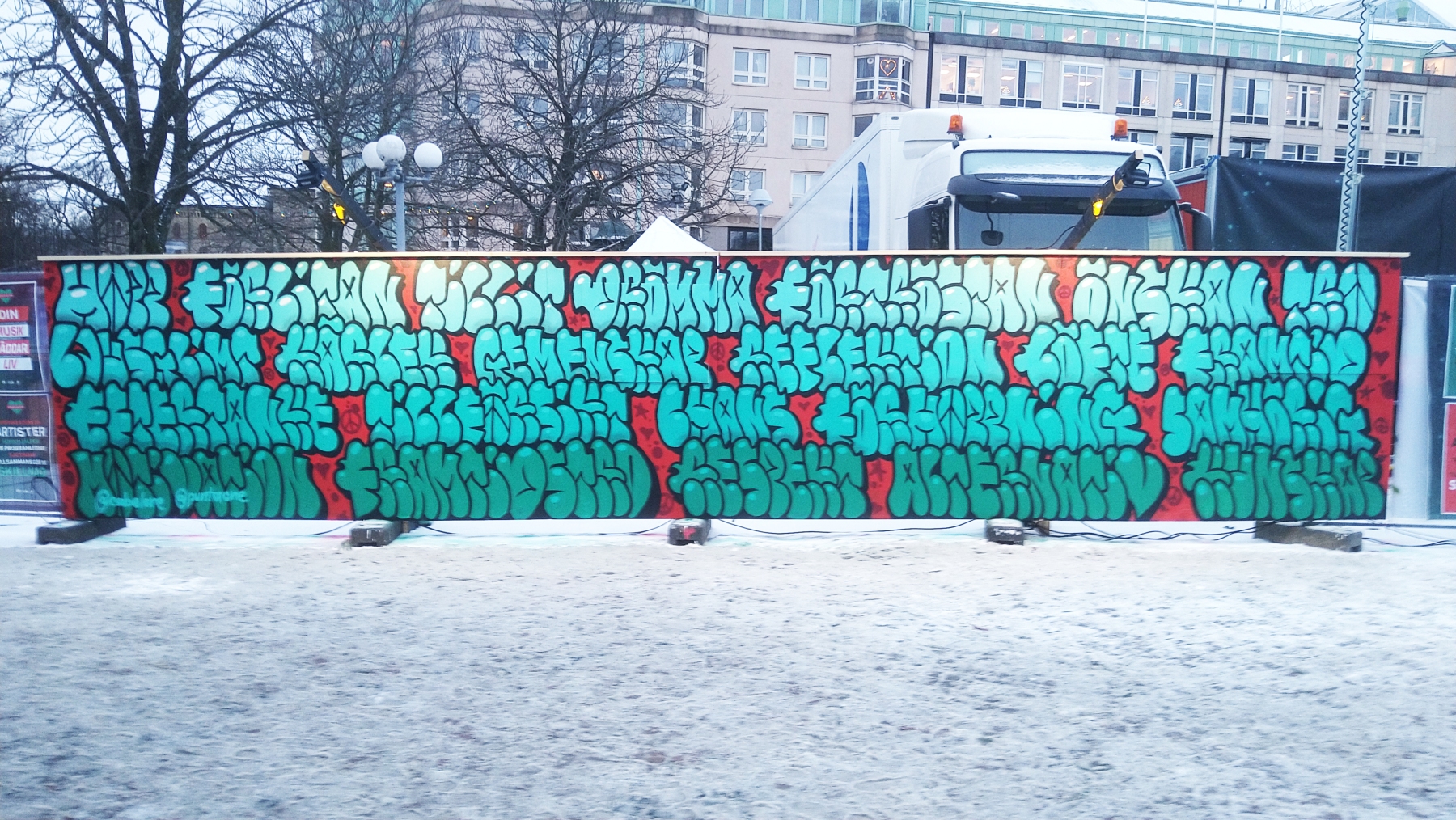
That’s also a reason why it is important to have more legal walls or open walls, to have more space where you can really express yourself. And I remember a story from an interview with Jurij Paderine from the Graffiti Lobby Berlin, he explained it really nicely. He said, Berlin is such a huge city and there are hundreds of soccer fields for the children who want to play soccer. Also there are numerous basketball fields for the children who want to play basketball. There are spaces for music and for a lot of kinds of creative fields. But the children who want to paint on a wall. There is really nearly no place, even in a big city like Berlin. Most of the places there are from youth clubs or some private companies or societies, but from the city itself there is really close to nothing. If you get older, you also have to go in this politic thing and to explain the others why it is important to have the spaces we need.
I’ve been to with my colleague. We went to a workshop in Copenhagen at the Meeting of Styles. They had a workshop about it, I don’t remember the name of it, but it’s like when you’re building new things in a city and you try to make it nice. So you have the idea, we should have benches here for people to sit on. And they’re happy about it. But the builders also have to understand that you cannot only have benches. They have to involve more people and maybe with those benches, some other people could paint the benches that they look like an animal. So when children see them, they get happy. Then they do not only have one function, they need to have more functions. If you do a soccer field for children, maybe you should do also a wall behind the soccer field where people can paint. And with the skate ramps the same. So you can do more stuff for different people to express at the same place. And what’s happening is also that you meet people from different cultures and they connect. Even if you don’t do the same. I play basketball and you skate, but we meet at the same place and then something cool happens. And you can learn from each other.
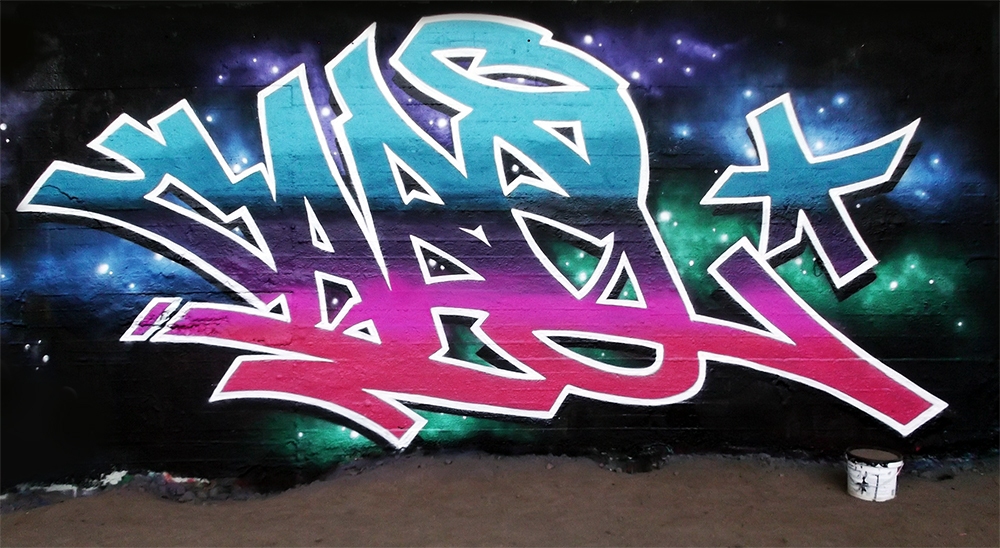

So this “each one teach one” doesn’t only go from old age to young age, it goes in every direction. That means as well you have to explain also to the politicians. And sometimes they try to trick you. We have in Frankfurt a big hall of fame and I know that they always have to discuss with them because some politicians say, there is so much garbage everywhere there. It’s very dirty and full of old cans and other garbage. But one woman I know, she went to one of this meetings and she was prepared with information. And then she said, I want to ask a question. So you said there is so much garbage, but can you tell me how many garbage bins are there actually? And these politicians who were so much against it, they said, oh, I don’t know, maybe five, six or ten, we don’t know exactly, but there must be many. And because she was prepared, she said, we did some research. We asked the municipality about that. And do you know, there is not a single garbage around the whole area bin? So then the others in the meeting were like, okay, wait, what exactly, do they tell us? They say there is a lot of garbage, but of course there’s a lot of garbage if there is nowhere any garbage bin. It’s like a chess game. And I think it’s kind of a responsibility when you are older. Then you also have to face the opposition groups.
Yes, of course. And you have to take the discussion and go into it if you love something and live for it. You have to take care of it like you say. And it’s hard sometimes. But I think it’s all good during this time in Gothenburg right now. It’s really good because you can meet people who work in the city and they listen to you. And they even invite you to talk. Mostly, I should say. But for the last year, I think it’s been really good. It developed in a better direction and when you compare it to the zero tolerance time, it’s a lot better now, absolutely. They have started making new rules to make it better. So we can work together but not collide on the way.
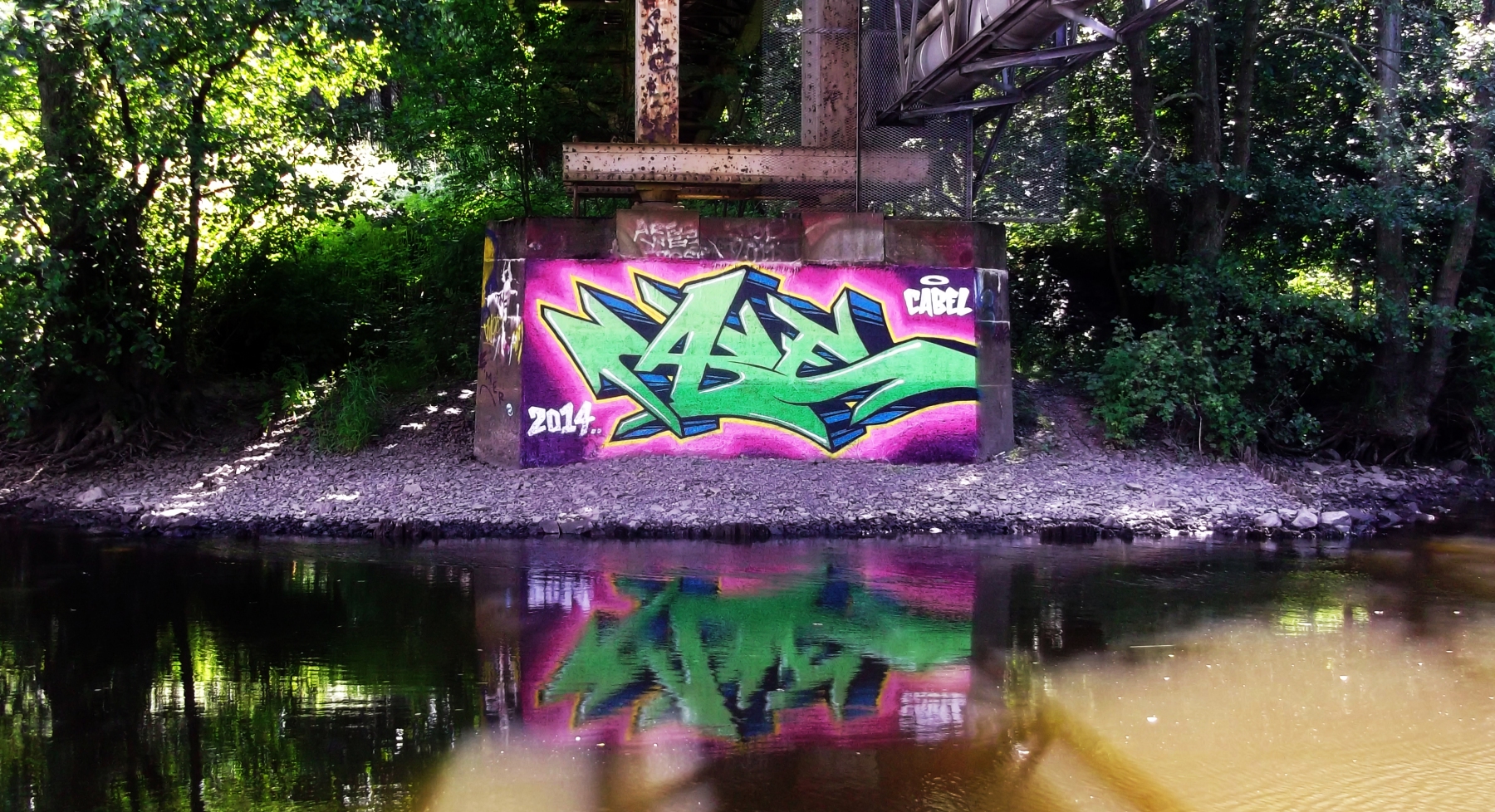
What do you think about this construction walls? There are really fabulous artworks there. But I would say it’s like 99% more figurative with motifs and more abstract stuff, but only a few real graffiti. I think I saw only one or two letter pieces. They don’t really have graffiti included much.
No, it’s up to them because they own the walls. I think they said, they try not to make just graffiti walls because then we have to do all graffiti. And it’s quite hard for them because there is no good way to measure graffiti. What is good graffiti? What is bad graffiti? That’s a problem for them. And I can understand that problem because we haven’t come so long to measure what’s good and what’s bad. So we are still in the developing process. Or maybe you can never judge graffiti because it’s from the legal team. Should the paint on the train be measured in the same way as a legal wall? I don’t think so. So how should you measure it? It’s really hard. So they try to do a little something, there are some graffiti pieces which you can see here and there. Like throw ups and freely written, but mostly they use more spray can artists and different materials. But still they try to make it pretty broad. So actually I haven’t seen a problem yet. Maybe it’s a little bit sad that you can’t be a graffiti artist and do exactly what you do. Like, I would love to do one of my letters pieces there, but I know I can’t. But it’s okay, because I can also just do it illegal instead if they want that.
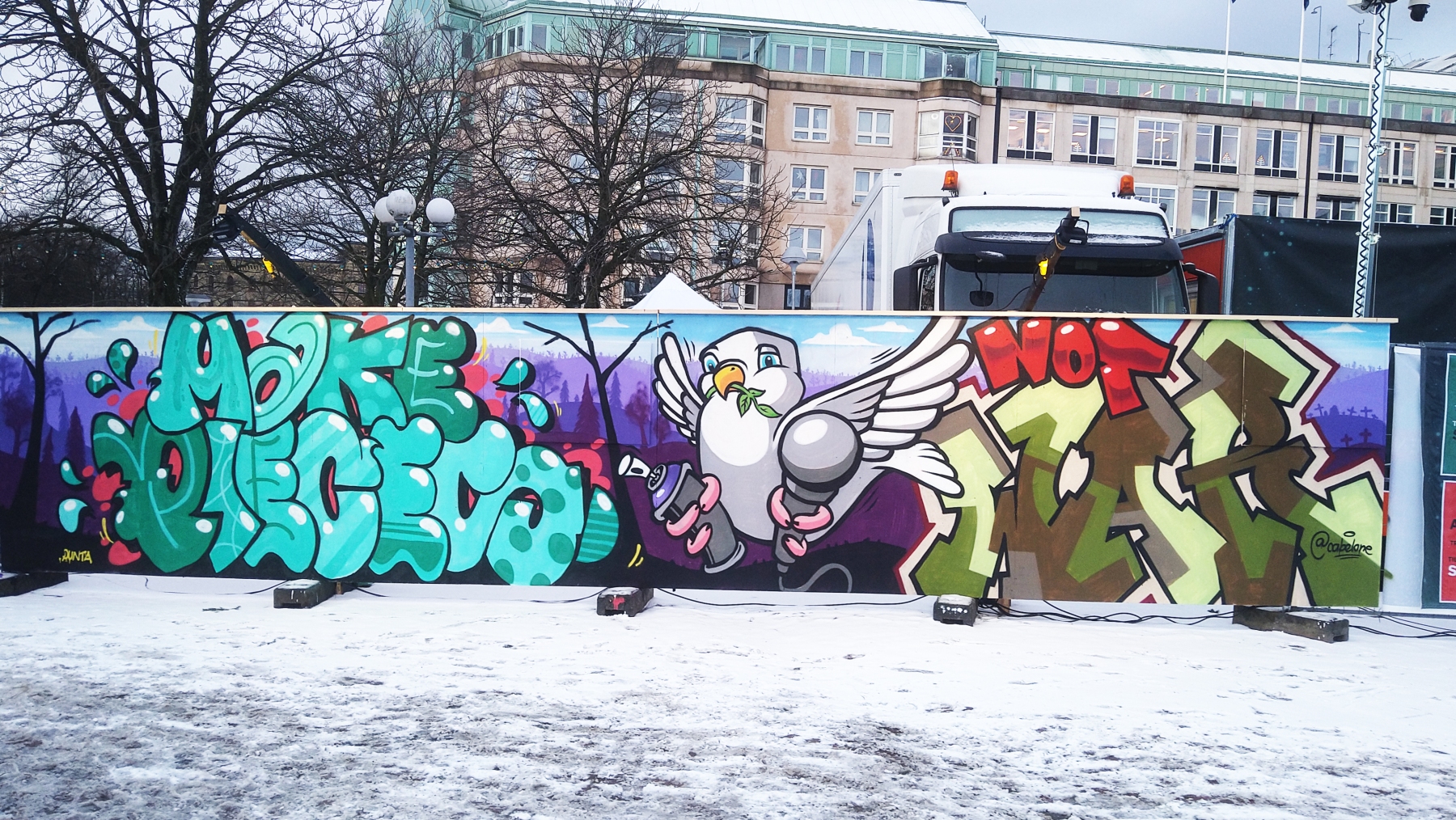
But these are some first steps into the right direction. And we will see how it develops.
Yes, and the people in Gothenburg have mostly responded very positive. So I think for the culture it’s good. You have to see the big picture too. You can’t be mad because oh we can’t paint graffiti. So now the people in the city, like the normal people who go to work, the grandma and all the pedestrians on their way, it has changed how they see it.
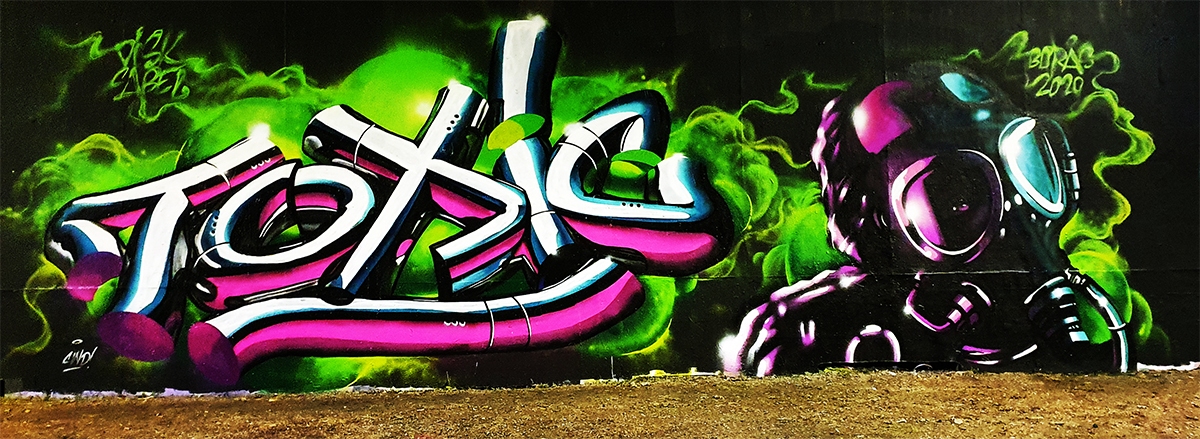
How was it during the zero tolerance time? Because you said before there was a lot of bombing and so the people didn’t like it, but then there was nothing at all. So how was it then? Did the people say, okay, now there’s nothing at all, this is also not that good. Or how was it?
The problem is always the propaganda of the media, because if the media says something, people say it’s like that. If you do a bombing for example, here is a funny example, because if you bomb a tram, they say that this is not art. But if Banksy would do it, then you can buy the whole tram as an expensive artwork. And it costs one million dollar. So I think it’s when someone decides what’s trash and what’s good. It’s really a hard line and difficult to say, but people and the media do that. Of course people don’t like what they can’t understand. That’s also a problem. People don’t understand why young people running around the city and doing letters on the walls, and they think it looks like shit. I can understand that because they are not part of that culture. But now they also see the other artworks, not only the tags. And now they say things like, we love that, but we don’t like the tags. That’s a little step at the right direction. And now it has been step by step. There is a lot more art on the houses and walls and people started to like it. Also now when they see you as an graffiti artist, you get a little bit more respect than before. Before they just said, oh, you’re running around and trashing tramps. Well, no, I’m doing murals and graphic art and paintings.
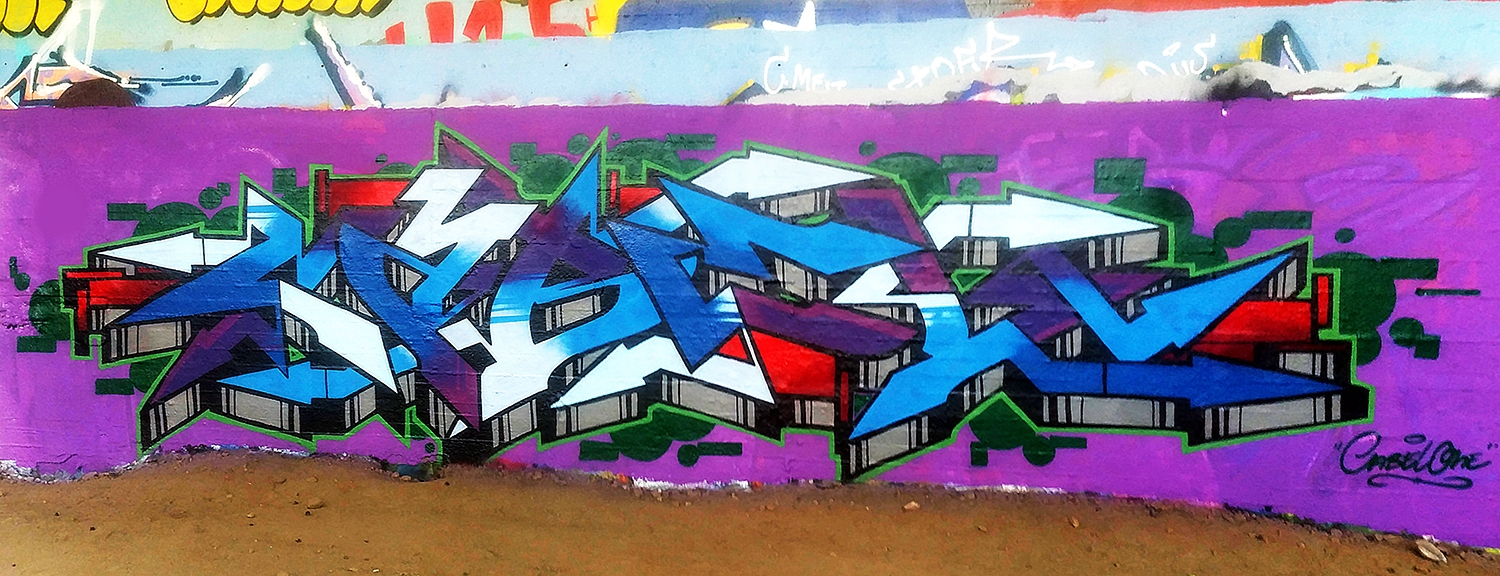
I want to refer again to Jurij from the Graffiti Lobby Berlin, because he’s doing as well urban art tours through Berlin and he’s explaining a lot to other people. Aand he has a really nice metaphorical story. He said there is little Peter who is a graffiti writer. And little Peter is walking around the city and writes everywhere his name. He’s really into it and writes everywhere “Peter”. But then one day he comes home and he’s really sad. His mother asks, Peter, what’s going on? Why you are sad like this? And and he says, yeah, I’m trying every day to write my name and make the pieces better and nicer. But there are these two other writers and everywhere where I go, they are just everywhere. I can write as much as I try, but they are always faster than me. They write their texts juast everywhere and I cannot compete with them. And the mother says, but maybe you can keep on trying. He answers, no, I tried everything and I give up. Then the mother asks, what are their other names? What do they tag? And he says, the one guy’s name is “Coca-Cola”. And the other guy’s name is “Swedish Bank”. I had to smile when he told this story, because then you understand actually the difference. It’s similar to what you said before about Banksy. If somebody just writes his name illegally, then it’s a criminal thing. But if somebody else just pays for it, then it’s okay and it is an artwork.
Yes, exactly. We also have a funny thing here with Berlin. We have a funny reference to Berlin in Sweden when we talk about tagging, because Berlin is known as the Chrome City. There is so much bombing, streetart, stickers and a trashy environment. And in Sweden, when somebody bombed the trams, we say, oh, that’s shit, that’s vandalism. But then they go with their friends for a trip to Berlin. And then they say, oh, it was so nice. It was so much beautiful streetart everywhere. So when you don’t have it at home, then it’s okay. It’s funny.


We live in a capitalistic world, so if you pay for it, then it’s all right. If you don’t pay for it, it’s not allowed. So if you have money and you would buy the wall and would put tags everywhere. Then it’s okay. If you pay for it, then it’s art. If you don’t pay for it then it’s vandalism.
If I do a tag on a wall now and write my name, people call it vandalism, but if I do it on a t-shirt and a clothing company sells it. It’s art. That’s the difference, I think. And it’s crazy because it’s the same thing. The artwork is the same.
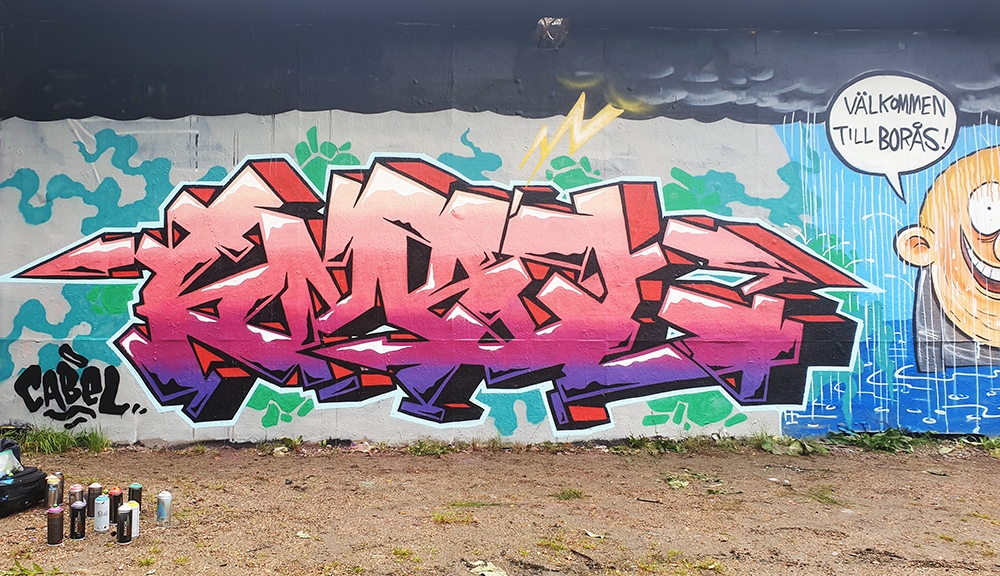
I think you have to show the people and sometimes you have to use metaphors and make them think. And it’s not about what is okay or what is not okay, but just to make them think. Like, do you see the difference? And to make them think about what is behind this and where is this coming from? So who is really deciding what is art and what is not art?
Yes, it’s about the ownership. That’s why it’s interesting with illegal graffiti and the disrespect against ownership. Even if you own a building. The people don’t care if you own the building, they still write on your building. They are breaking the law. Not in only the illegal aspect, it’s psychological too.
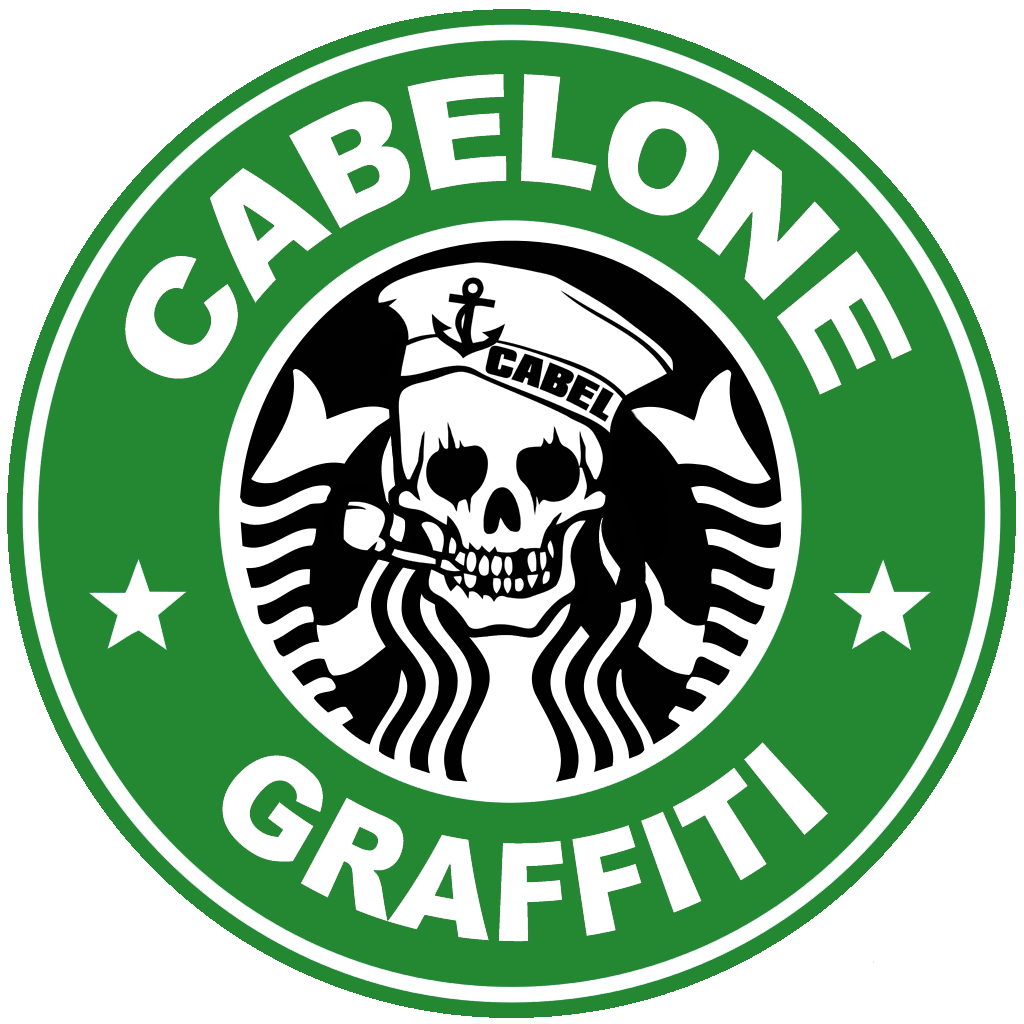

It is about the question, who owns the city? Do the companies own the city or do the people who live in the city own the city? And who decides what is on the walls? For example, if I look out of the window and see a big Coca-Cola sign and I don’t like it or maybe I would even hate it, I cannot do anything against it. Because they paid for it.
I have some problems with the political view of graffiti, because I start to get more and more angry about it. That just never happened that way, because I didn’t care about it before. But nowadays I’m more angry, because I understand how the world evolves around the art I do.
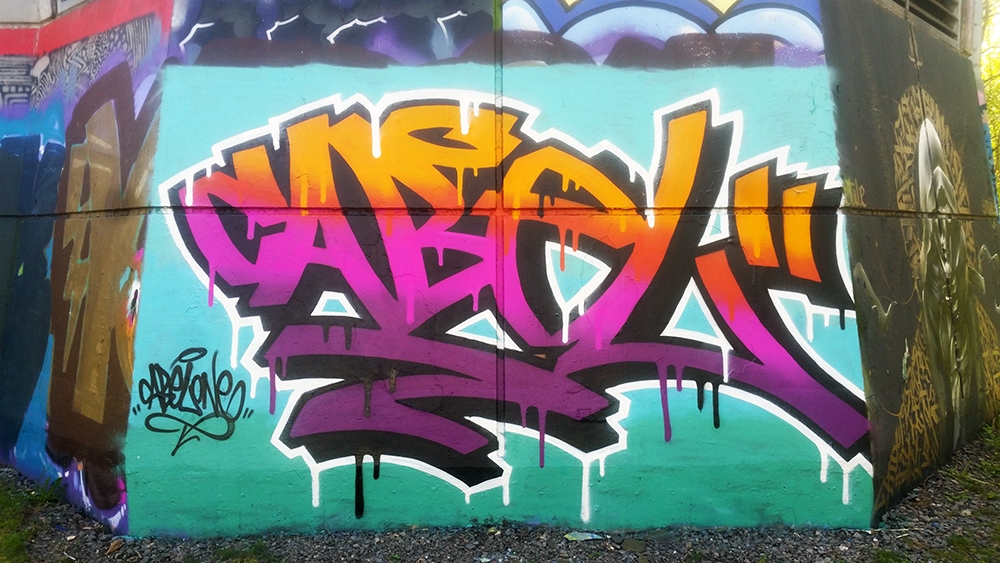
And that’s what I said before, because, we are all getting older. We know more better how to talk, so we have to stand up for it and not let the anger out to the opposite, but to explain them and convince them. By showing them arguments for it and showing them that they are wrong with some theories. Like you said before with the broken window theory. So you have to show them, hey, it’s not true. It doesn’t work.
Yes, it was proven wrong many times after that. I also don’t understand it at all. That time, it was just really crazy. I also have a book about it. They released a Swedish book about the broken window theory because it was so bad. And there they explained everything what was happening. So you have you have to face it, but in an intelligent way and prove them the other side. But that’s hard, because I think many graffiti writers come from a lower class. Not always, but sometimes. If you grow up and you have everything you ever wanted, I don’t think you’re going to be a graffiti writer if you’re not really interested in graffiti in some way. You often meet graffiti when you go to school from a friend or like you see it in the city. It comes from the grassroots. And if you come from there, then it’s very hard to say, ok, I’m going to be a politician who is interested in graffiti. I don’t think that’s happening. It would be awesome, but it’s very hard to be a graffiti writer and to find the interest in urban art, and then also to become a politician. So it’s a harder way and a longer way to walk. You can be rebellious when you’re young and scream, fuck the world and tag everything you see. But that’s not helping too.
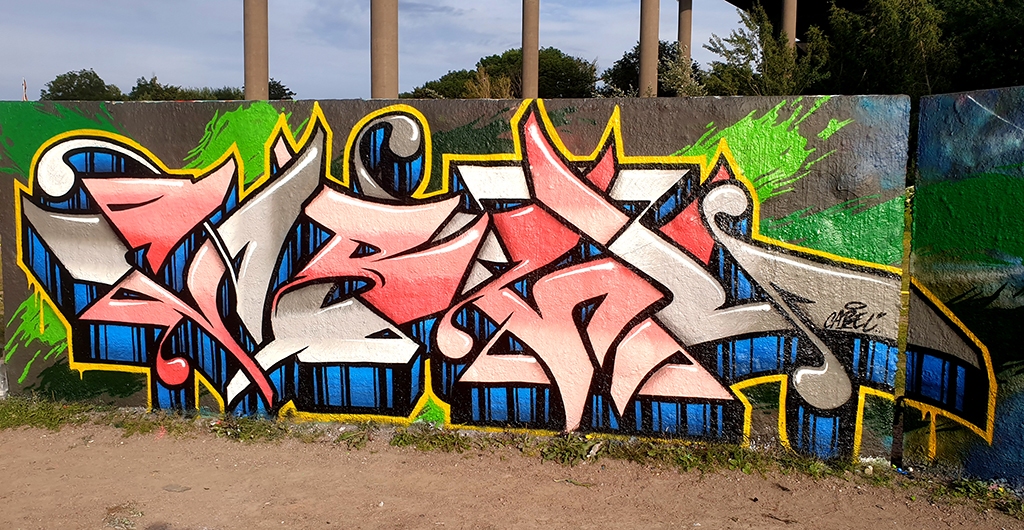
So you have to be smart and you have to keep on going. It will be very interesting what the future brings to Gothenburg. It’s going into a good direction, but we will see what will happen. So for the listeners, can you tell us where people can find your artworks on the internet?
You can find my works on my Instagram. It’s cable one and I got my homepage. It’s @cabelone. Otherwise you can go to www.gbggraff.se and you find the most of Gothenburg graffiti or links to artists and events if you search anything there.
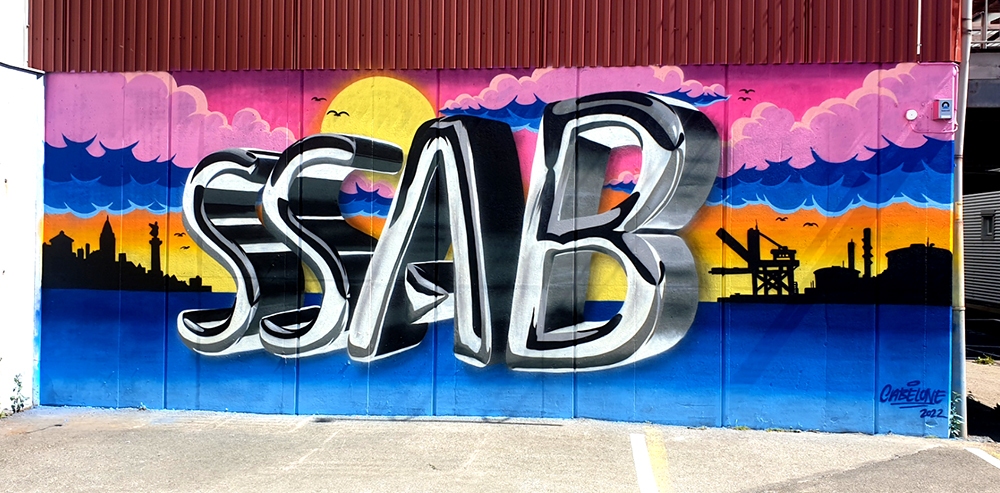
And when people come to Gothenburg they want to paint or they are interested in graffiti, they can contact you.
Of course, yeah they can contact me. It’s only fun when people write to me. And it is also fun when you are doing festivals and stuff. Then also people write all the time and you feel more like a community. So contact me when you come to Gothenburg and check our news to coming events and jams on the channels.

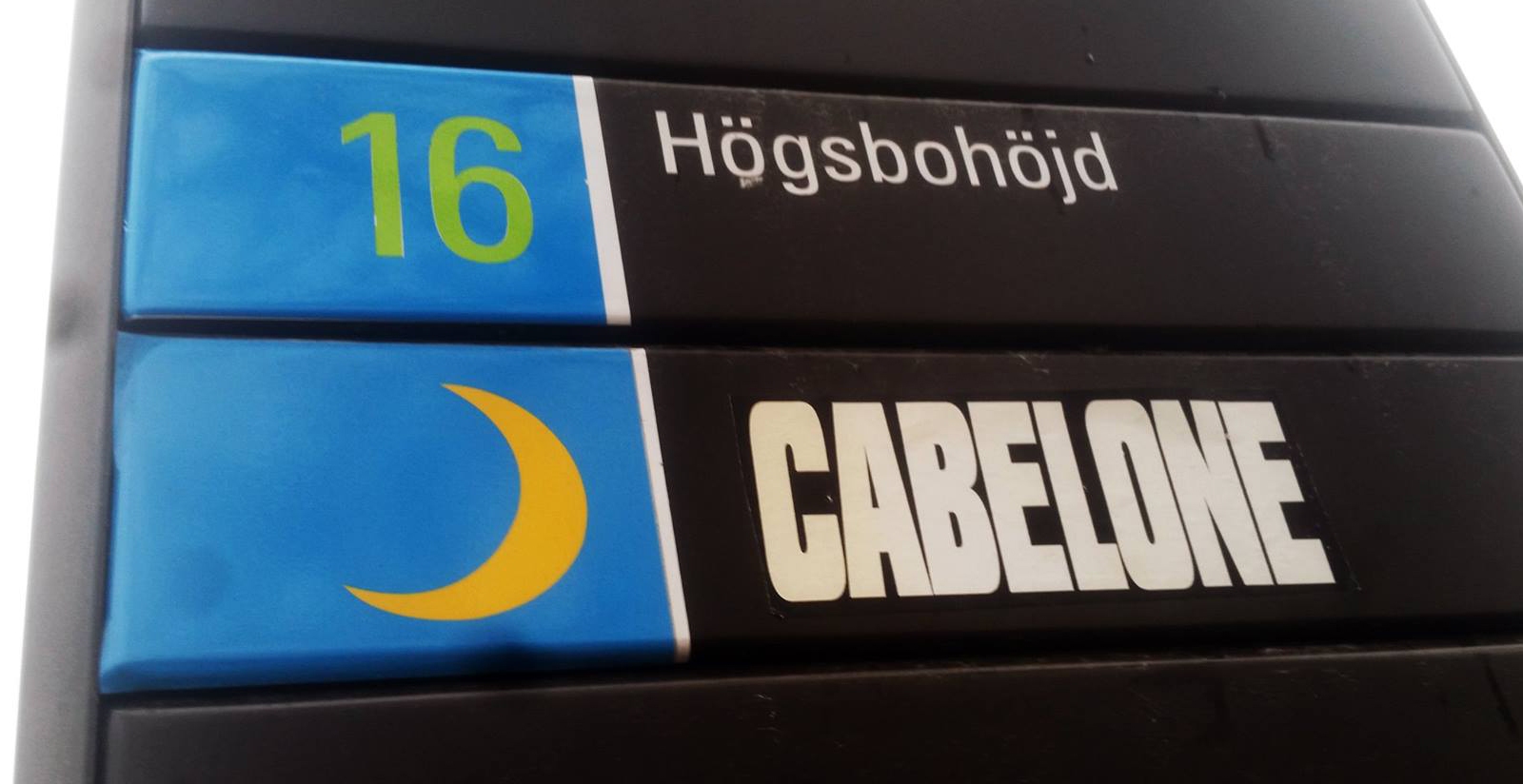
![]()
ARTWORKS BY CABEL ON THE GOTHENBURG MAP
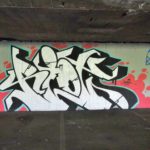


![]()
ARTWORKS BY CABEL AROUND THE WORLD

![]()
INFOTHEK
![]() Artist: CABEL – CABELONE
Artist: CABEL – CABELONE
![]() Website: https://www.cabelone.se
Website: https://www.cabelone.se
![]() Facebook: https://www.facebook.com/cabolone
Facebook: https://www.facebook.com/cabolone
![]() Instagram: https://www.instagram.com/cabelone
Instagram: https://www.instagram.com/cabelone
![]() Youtube: https://www.youtube.com/@cabelonegbg
Youtube: https://www.youtube.com/@cabelonegbg
![]()
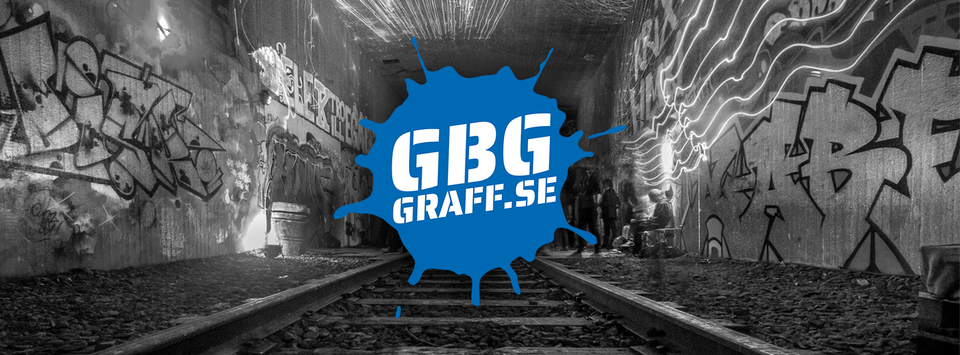
![]()
![]() Graffiti Magazine: GBGGRAFF.SE
Graffiti Magazine: GBGGRAFF.SE
![]() Website: http://www.gbggraff.se
Website: http://www.gbggraff.se
![]() Facebook: https://www.facebook.com/Gbggraff
Facebook: https://www.facebook.com/Gbggraff
![]() Instagram: https://www.instagram.com/gbggraff.se
Instagram: https://www.instagram.com/gbggraff.se
![]()
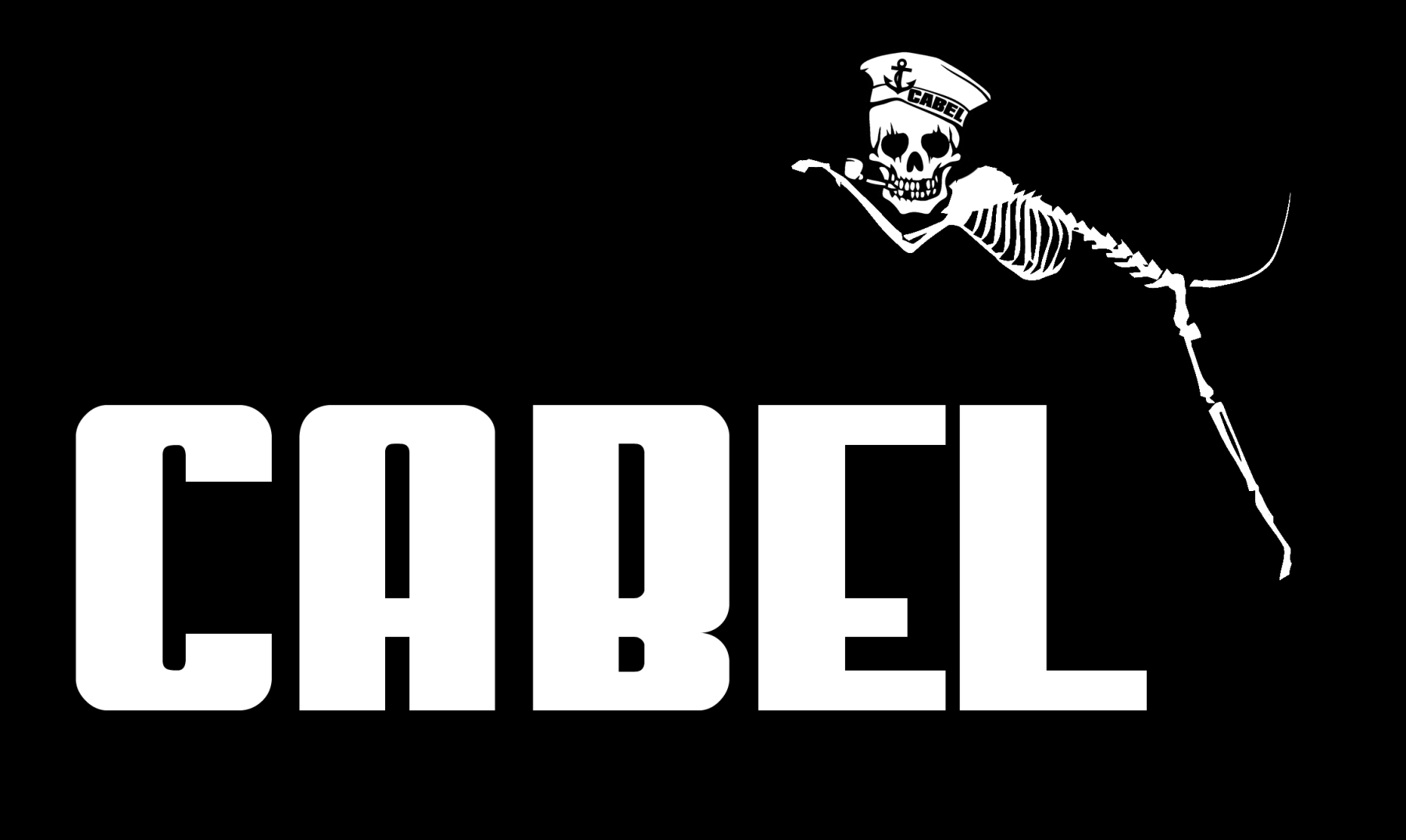
![]()
![]()
RECOMMENDABLE GRAFFITI SPOTS IN GOTHENBURG
>>> Underground Hall of Fame <<<
>>> Bergsjön Graffiti Hall <<<
>>> Artscape Festivals <<<
>>> Röda Sten Spray Space <<<
>>> Vulkano Art Space <<<
>>> Emigrantvägen Graffiti Wall <<<
>>> Landvetter Graffiti Wall <<<
>>> Gothenburg History Mural <<<
![]()
![]()
MORE ARTICLES ABOUT SWEDEN
>>> Streetart Map Stockholm <<<
>>> Streetart Map Gothenburg <<<
>>> Streetart Map Borås <<<
>>> Kulturkvarter Snösätra <<<
>>> Streetart Södertälje <<<
>>> Artscape Festivals <<<
>>> #ArtMadeThis <<<
>>> OLLIO – Urban Artist <<<
>>> SCEB – Urban Artist <<<
>>> TONY B – Tattoo & Graffiti <<<
>>> CABEL – Graffiti Artist <<<
>>> CODE 26 – Graffiti Artist <<<
>>> DISK – Graffiti Artist <<<
>>> FILIP REM – Abstract Painter <<<
>>> Movement Biskopsgården <<<
>>> Lost Place Graffiti – Wargöns Bruk <<<
>>> Urban Art – Hammarkullen <<<
>>> Urban Art – Hjällbo <<<
>>> Urban Art – Kungälv <<<
>>> Urban Art – Nödinge <<<
>>> Urban Art – Trollhättan <<<
>>> Urban Art – Vänersborg <<<
>>> Urban Art – Landvetter <<<
>>> Urban Art – Tumba <<<
